

MMACIRCLEO F CHAMPIONS

THE ENERGY INDUSTRY CAN BE VOLATILE, BUT THESE LEADERS KEEP THEIR BUSINESSES CHARGED UP AND READY TO TACKLE THE FUTURE. P134
Gillian Fry
The Real MVP
A lifelong hockey fan, Bill Daly helps the NHL maintain its vitality as it celebrates its hundredth year. 8

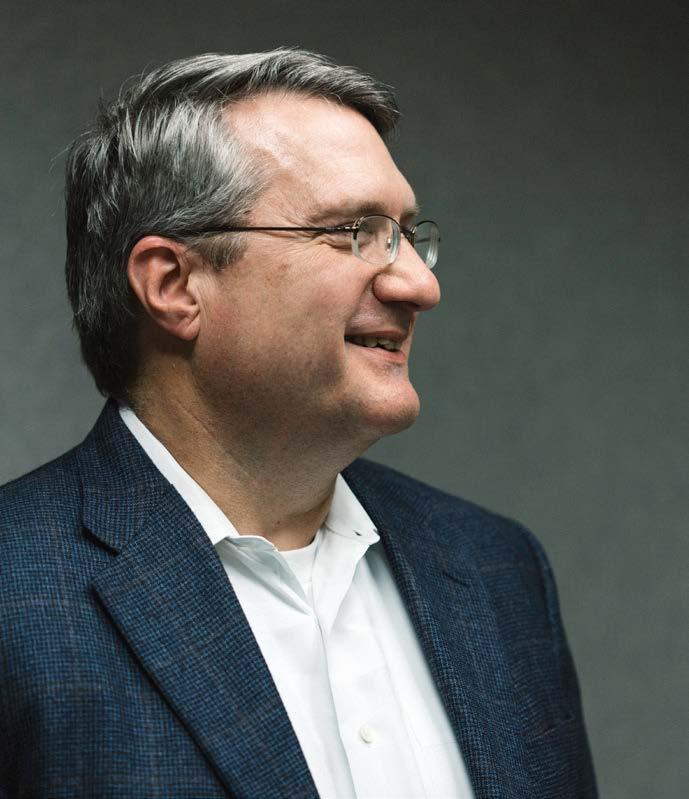
Safety First
Donald Broadfield oversees all of American Airlines’ commercial data to ensure business safety and customer satisfaction every day of the year. 76
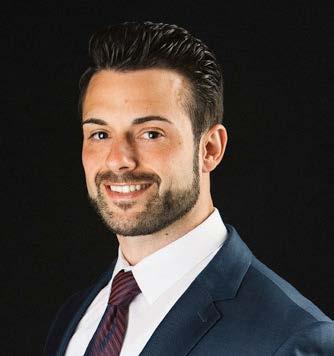
Number Cruncher
Michael Vasalos plays a numbers game to increase CBC Federal Credit Union’s year-over-year profitability. 21
Three Rules to Success
Dr. Kenneth Burhop shares his advice on how to thrive professionally and brings his youthful energy to Integra LifeSciences.
Kenny Backer, Kristin Deitrich, Dan Kosmayer/Shutterstock.com
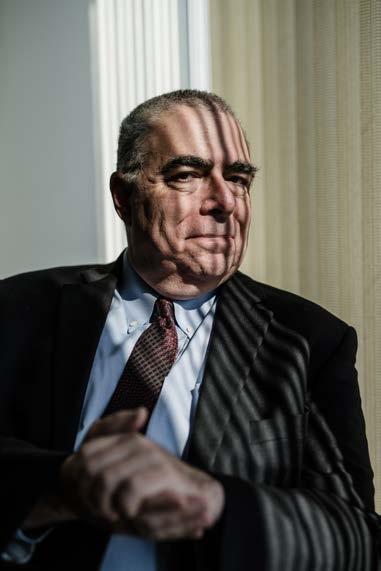
Going In-House
Evan Slavitt details lessons learned transitioning to a general counsel role after years in private practice.
113
If You Don’t Change, You Get Left Behind
Lisa Martin continually adapts to keep Teva Pharmaceuticals ahead in procurement.
158

A Lifetime of Adventures
Jamey Seely is no stranger to overcoming obstacles, from completing a marathon in South Africa to navigating several highstakes business deals as general counsel for Ion Geophysical.
188
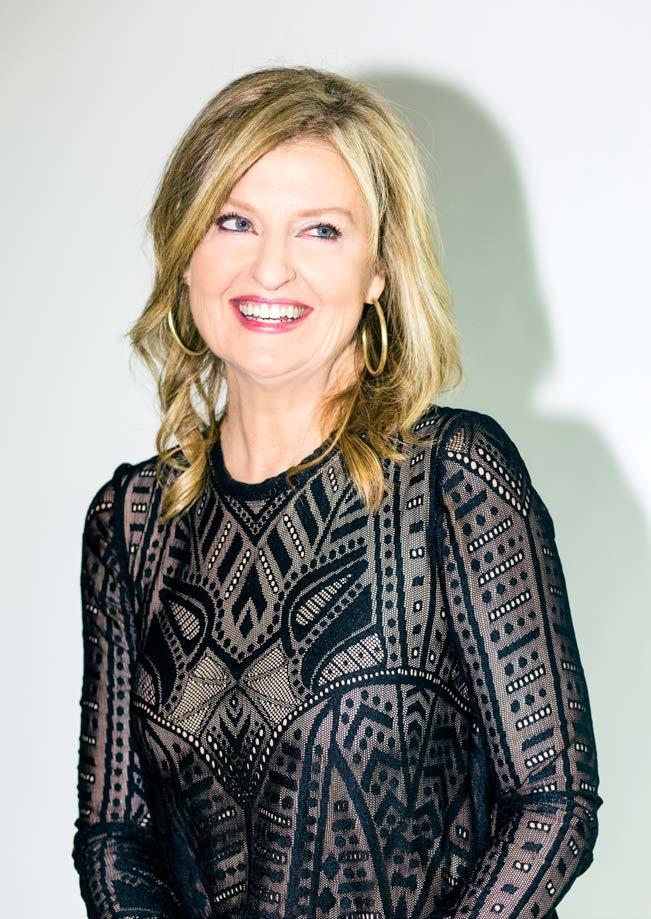

A Career Thrill Ride
Six Flags’ David McKillips recounts a career that’s gone everywhere from Sea World to Mad magazine.
124
More Than Free Coffee
Diane Adams has dedicated her career to creating vibrant company cultures that empower and fulfill employees.
152
CREATIVE
VP of Creative
Kathy Kantorski
Editorial Directors
Megan Bungeroth
Cyndi Fecher
Senior Editor
Adam Kivel
Editors
Dan Caffrey
Joe Dixon
Jonas Weir
Design Director
Joshua Hauth
Designers
Anna Beck
Holly Leach
Greer Mosher
Photo Director
Caleb Fox
Photo Editors & Staff
Photographers
Kristin Deitrich
Gillian Fry
SALES & ACCOUNT MANAGEMENT
EVP of Sales
Katie Else
VP of Sales
Kyle Evangelista
Director of Sales Operations
Philip Taylor
Director
Kim Harrington
Content Advertising
Managers
Peter Castaldo
Danielle Cole
Kristina Doukas
Brandon Havrilka
Ben Julia
Ben Keller
Spencer Kennedy
Mark Orlovetz
Ashley Watkins
JD Whigham
Sarah White
Director,
Executive Success
Anna Jensen
Executive Success Managers
Christina Brown
Daniel Lopez
Josh Rosen
Executive Relationship
Manager
Jenny Vetokhin
PUBLISHING
Guerrero Howe, LLC
CEO
Pedro Guerrero
Executive Assistant Jaclyn Tumberger
Recruitment Director Elyse Glab
Client Services Director Cheyenne Eiswald
Senior Client Services Manager Rebekah Pappas
Client Services Manager
Katie Richards
Financial Analyst Mokena Trigueros
Receptionist & Junior Analyst
Amanda Paul
MARKETING
Managing Director of Marketing
Sean Conner
Reprints & Circulation Director
Stacy Kraft stacy@guerrerohowe.com
Events Director Vianni Busquets
Finding the Right Fit
It’s hard to overstate the importance of a healthy company culture. Enthusiastic employees tend to produce higher-quality work, to think more creatively, and to be more invested in the well-being of the company. Those who aren’t enthusiastic tend to turn in mediocre results. Although many people can identify how critical a satisfying office environment is, it seems like the businesses that know how to cultivate one are few and far between.

In 2017, I learned the impact of a quality company culture firsthand. Settling into my first year as an editor for Profile was a lot like any other job. I had to learn the ins and outs of my position, familiarize myself with company processes, and adapt to the working styles of my coworkers. But unlike many others jobs, Guerrero Howe has a robust company culture that made it easy to get the hang of things around the office.
Our company embraces a set of five core values: excellence, positivity, initiative, collaboration, and fun. Of all these, the value that made it easiest for me to thrive in my first year was fun. Guerrero Howe plans regular company offsites, where we might play board games, go bowling, or attend the occasional Chicago White Sox game. In these outings, we can revel in some time away from the office while getting to know each other better. These days help motivate me to work harder and to produce better work for each issue.
Throughout this issue, you’ll find examples of many HR leaders who have enhanced their company’s culture, including our cover story, featuring Diane Adams of McGraw-Hill Education. In that piece, you’ll get a deeper insight into how Adams has dedicated her career to fostering company cultures that energize, support, and develop talent to help organizations perform at their best.
Throughout her career in human resources, Adams has planned company town hall meetings designed to garner employee feedback on office culture and spearheaded days of personal and professional development for individuals, among many other accomplishments, while remaining focused on creating a space where employees feel comfortable and primed for continual improvement.
Subscriptions + Reprints
For a free subscription, please visit profilemagazine.com/ subscribe. Printed in China.
Reprinting of articles is prohibited without permission of Guerrero Howe, LLC. For reprint information, contact Stacy Kraft at 312.256.8460 or stacy@guerrerohowe.com.
Profile® is a registered trademark of Guerrero Howe, LLC.
Part of how we define fun at Profile is being proud of the time you spend in the office. With someone like Adams at the helm of HR, it’s hard to imagine not enjoying every minute of your job.

Joe Dixon Editor
Kristin
Deitrich
TALENT
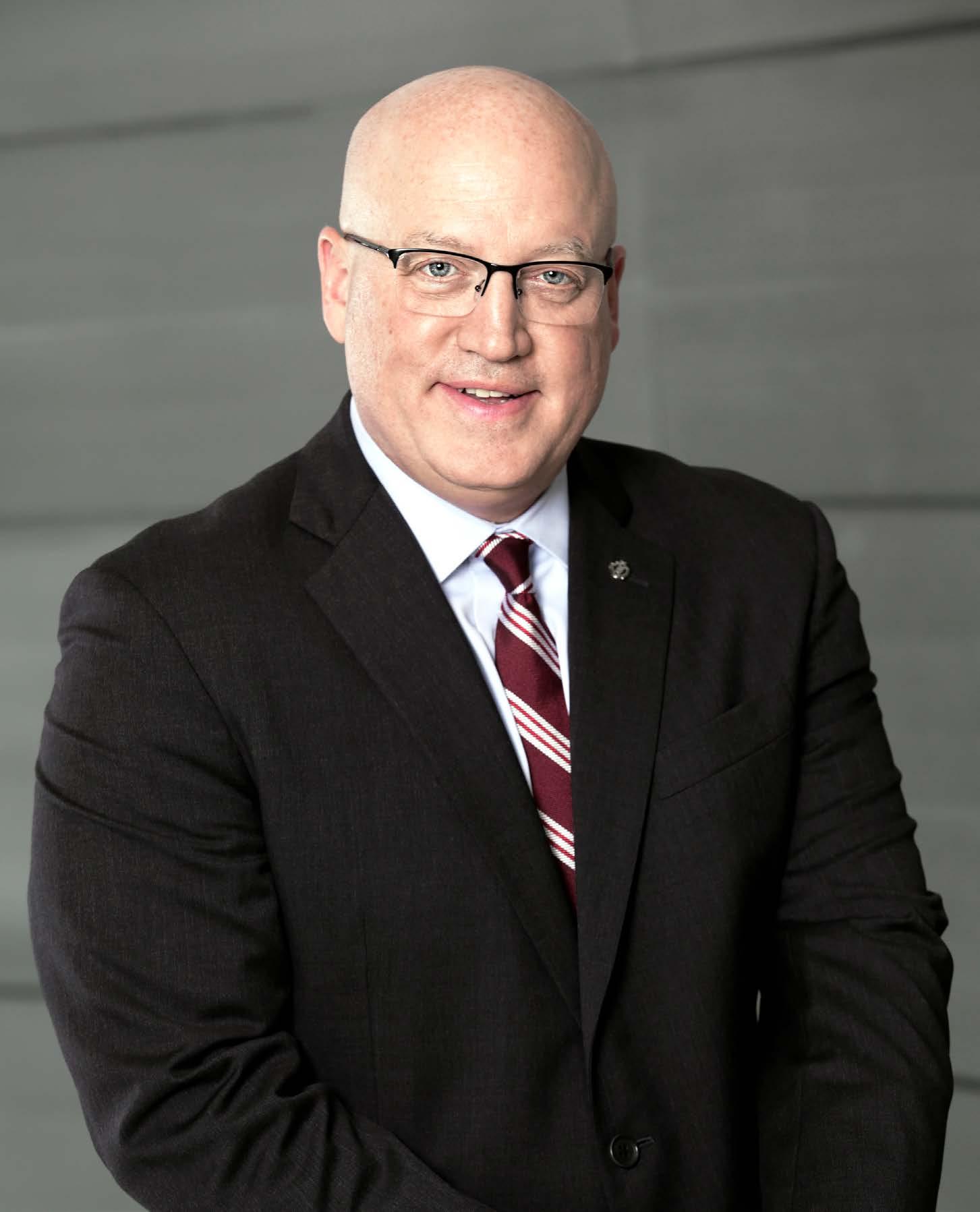
Bill Daly
Deputy Commissioner
National Hockey League
New York, NY
Celebrating the Centennial
Bill Daly has played an instrumental role in ushering the National Hockey League into its hundredth year
By ADAM KIVEL
OOn December 19, 1917, the Montreal Canadiens faced off against the Ottawa Senators, and the Toronto Arenas played the Montreal Wanderers, marking the first two games in the history of the National Hockey League. Both Montreal teams notched victories, with thousands turning out to witness the birth of a new professional sports league. And though other leagues have come and gone, the excitement for professional hockey hasn’t faded. Now, on the hundredth anniversary of the NHL, deputy commissioner Bill Daly beams with pride at the experience and celebration he’s been able to share with the fans. “We’re in rarefied air, as the second-oldest professional sports league in North America,” the legal leader says. “When you get to celebrate a birthday like one hundred, with all the centennial activities and content we’ve built out around it, it really makes us appreciate the history of this sport and you feel a lot of pride.”
Fittingly, this milestone occurs as Daly celebrates one of his own: twenty years with the league. Although he credits the stability of the league and his longevity with it to longtime colleague commissioner Gary Bettman, Daly’s been a perfect fit for the NHL. He’s provided valuable guidance to the league as it’s driven toward this monumental achievement.
Daly grew up a fanatical supporter of the New York Rangers, watching games with his father in northern New Jersey. And though there wasn’t a lot of ice available, he did what he could to find some time on skates. “We did have lakes and ponds that froze over, and my town had a youth hockey program that built an outdoor rink,” he says. “There was access to hockey, but it just wasn’t as mature and developed as it would be today.” And while he loved hockey, he was a strong football player, too. He chased that skill and eventually played tailback for four years at Dartmouth.
In fact, he says his time as a student-athlete taught him a lot of valuable lessons that have made an impact on him as a lawyer. “College athletics teach you skills that can help you be successful in any profession, really,” he says. “It provides structure and discipline in managing your time and teaches you a lot of other values and life lessons that transcend the sport.”
Once his collegiate playing career was over, Daly knew he wanted to remain connected to sports. While
completing college and then law school at New York University, he began working at Skadden, Arps, Slate, Meagher & Flom. He eventually joined the firm as a lawyer. During his time there, Daly began working with major sports organizations, such as the National Football League, National Basketball Association, and eventually the NHL. “I was very, very fortunate,” Daly says. “That type of work is in high demand and in fairly low supply.”
Although positions in sports organizations he was working with are often in equally low supply, Daly passed on a few jobs before the NHL eventually made him an offer he couldn’t refuse. His predecessor at the NHL, Jeff Pash, had decided to move on to a similar role at the National Football League, and Daly’s name came up in the conversation for potential replacements. “I hit it off with the commissioner and other senior management at the League and was offered the position,” he says. “It was a fairly easy decision for me.”
Daly came in as the senior-ranking legal advisor to the commissioner in 1997. That role offered him a chance to be involved in all major policy decisions affecting the League’s business—including the 2004-2005 labor negotiations that ultimately resulted in a new economic system and revolutionary rule changes that provided a platform from which the sport could grow to new heights. Over time, Daly’s role continued to grow and evolve, and in 2005, he became the NHL’s first deputy commissioner—the most senior and principal advisor to the commissioner. In his twenty years with the League, Daly has been involved in countless major decisions that have brought considerable success to the NHL.
In 2014, he received the Lester Patrick Trophy, an award presented by the NHL and USA Hockey since 1966 to honor individuals
who contribute outstanding service to ice hockey in the United States. Named after a longtime player and coach of the New York Rangers who helped develop the sport in the United States, it’s one of the highest honors awarded to players, coaches, officials, and others involved in the sport of hockey.
“There are so many legendary names in our sport that have been recognized through that award, and I feel fortunate that my role put me in a position to be considered,” he says. “In my view, it’s really a reflection of the work of the organization as a whole. I view it more as an organizational award than a personal award.”
That feeling isn’t just modesty. Since his time as an athlete, Daly has come to understand and appreciate the value of teamwork and mentorship. He credits the success of the NHL during his tenure to the efforts of the entire team—both at the League and club level—and notes that it all trickles down from the vision, leadership, and passion of commissioner Bettman. In fact, Daly lives by one of Bettman’s many philosophies: “Our role is not really a job, it’s a lifestyle.” To that end, Daly makes sure he is accessible and available to the thirty-one club constituents whenever needed.
“When you get to celebrate a birthday like one hundred, with all the centennial activities and content we’ve built out around it . . . you feel a lot of pride.”
BILL DALY
This year, the League’s role has taken on extra significance. The NHL’s centennial celebration began with the Centennial Classic, the first outdoor NHL game held in Toronto, home of one of the League’s Original Six teams. The Toronto Maple Leafs faced off against the Detroit Red Wings, another Original Six team, which was followed the next day by the annual Winter Classic, featuring another team from that bunch, the Chicago Blackhawks, playing outdoors in St. Louis against the Blues—who are celebrating the team’s fiftieth anniversary as an NHL franchise. “When the outdoor games are elevated to the national stage, there’s a buzz that is created not only in the marketplace involved, but also throughout the hockey world,” Daly says. “I am fortunate enough to go to a lot of big events that other sports leagues do, including the World Series and Super Bowl, and I can honestly say that the excitement that NHL fans have around these games is palpable and meaningful, and makes you feel good to be associated with this sport.” The hundredth anniversary year will wrap up with another outdoor game: the NHL 100 Classic, which will feature the Montreal Canadiens and Ottawa Senators playing in a rematch of their game one hundred years prior, only this time outdoors in Ottawa.
In addition, the centennial celebration has involved the creation of tens of hours of compelling content from the league’s hundred-year history, including vignettes honoring each of the one hundred greatest NHL players. There is also a Centennial Fan Arena, a traveling, interactive fan tour that features a moving hockey museum, a pop-up ball hockey rink, a truck with a giant video screen, and of course the Stanley Cup, which together are touring through each local NHL market. “It’s a way to interact, engage with, and give back to our fans,” Daly says. “Our team has spent long hours over a number of years developing all of the content that
celebrates our Centennial, and so far, we’re very proud of the results.” The magnitude and scope of the Centennial project is expensive; Daly calls it a real credit to the NHL’s board of governors and greatly admires the passion NHL clubs have for engaging with their fans.
Once the centennial celebration is over, Daly has no plans of slowing his engagement in making the NHL stronger. One major aspect of that is the League’s focus on diversity—something that has become an organizational priority. “As an organization, we recognize that diversity adds value and perspective,” he says. “Our sport is already very diverse—more diverse than many recognize—and I think we’re working very hard to make it even more diverse over time, both on the ice and off.”
Another major project is the NHL’s recent expansion to Las Vegas with the League’s thirty-first franchise, the Vegas Golden Knights. Although further expansion would not necessarily mean more NHL teams, continuing to expand the sport and making it more accessible to more people is one of Daly’s priorities. “We’re continuing to expand in terms of making NHL hockey more available, not only in this country, but in other countries as well,” he says. “We were in China recently announcing long-term plans for engagement with that market and introducing the sport of ice hockey in a region where it has only had a marginal presence before. Expanding and elevating the sport continues to be one of our primary objectives as a League.”
But, as always, Daly returns to the values of teamwork and the greater hockey community when discussing his proudest moments in the league. “The thing that provides the most pride to everybody who works here, not just myself, is to compare where the sport and the organization were when we got here, to where it is now, and where its future lies,” he says. With a strong hand like Daly’s helping guide the way, the NHL seems poised to build toward even greater success in the future.

Shepard Goldfein, James A. Keyte, Matthew Martino, John Beisner, Jessica Miller and the rest of your Skadden team
Worry Less About Time and More About People
Former lawyer John Murray transitioned to a role as vice president of HR at The Marcus Corporation and stopped watching the clock
By CHUCK GREEN
John Murray realizes that his professional reboot from lawyer to HR executive—as far as it has already come—is not quite complete. “I had been practicing law for twenty-five years, and I enjoyed it,” Murray says. Nevertheless, he has found his new role as corporate vice president of human resources at The Marcus Corporation to be thoroughly enjoyable as well.
As a lawyer, Murray loved opportunities to work with clients to understand their business and to explore ways to help them avoid problems. “But that was harder to do when you’re an outside attorney and billing by the hour,” he says. “My clients were always sensitive to the meter running.” So, instead, Murray started his own meter. “I began to seek opportunities to get more involved on the front end, rather than just problem solving,” he says. “The longer you practice, the more you start to understand and identify with your client’s business needs. You enjoy getting involved in making the business better.”
However, the transition from outside counsel to HR hasn’t always been easy. Murray recently completed his annual performance review for The Marcus Corporation. In the self-assessment portion, he candidly addressed this very fact. “I have yet to complete my detox from private practice. I see I still have a little bit of a hangover I need to recover from,” Murray says, chuckling.
He can laugh because he knows he made the right call when he joined Marcus, a Milwaukee-based company that specializes in lodging and entertainment, after a long stint as a corporate attorney. He was able to get a taste of this while serving as Marcus’s outside labor/employment counsel for several years. He also had an opportunity to spend one day a week on-site for six or seven months before Marcus approached him about joining the company. That experience gave Murray a chance to get to know the company and people from a position that might not be possible as an outside attorney.
As a lawyer, Murray specialized in labor and employment law. In his current role, Murray has been able to
John Murray VP of Human Resources
The Marcus Corporation Milwaukee, WI
leverage some of the skills and experience he gained as an attorney in areas such as union negotiations and the resolution of discrimination claims. “As an outside counsel, you’re concerned with avoiding liability on the front end and consulting and advising,” he says. “That certainly continues in my human resources role here.”
But there are some differences. Working in HR, Murray’s goals are broader. He not only focuses on legal compliance issues, but also cultural ones, like what’s good for employees and the organization regardless of the extent to which it minimizes legal exposure. He’s also more involved in cost-benefit analysis, which balances the organization’s financial goals with goals of retention and recruitment.
Murray has also had to think more proactively as vice president of HR than he did as a lawyer. “When you’re outside counsel, people don’t call you until there’s a problem and you have to move quickly to solve it,” he says. “In an HR role, often your role is to identify where problems might arise and to look at strategies at play on the front end. You’re involved earlier, and the process is a lot more collaborative, more deliberate.”
Even though this process can be more methodical, it seems to suit Murray perfectly. He took a personality analysis as part of the application process for The Marcus Corporation, which he says was revealing. “I learned I’m naturally more collaborative and a consensus builder,” Murray explains.
But that doesn’t mean he can’t be a bulldog as well. “Obviously, I could go the other route and be more of a litigator and duke it out as a lawyer, but my HR role seems to mesh better with my natural tendencies,” he says.
After almost a year in his HR role, Murray is starting to see that his responsibilities offer him the chance to tap his analytical and persuasive skills differently than he did as a lawyer. For instance, he now tries to understand how decisions will benefit both the organization and the company’s associates.
Murray believes his experience as a lawyer positively influences his decision-making process as an HR professional. “I still tend to look at new compliance and HR issues from the standpoint of minimizing exposure,” he says. But that’s no longer where he stops. “I then look more broadly and say, ‘If we need to comply in this one area, what does that extrapolate out to in other states with different laws? Or operationally, what do we try to accomplish?’”
One thing he’s certainly accomplished is paying less attention to the clock. “I still remember—after being here a couple weeks—I didn’t know what time it was,” Murray says. “When you’re an outside attorney, you know what time it is all the time. Now, I’m in meetings that are important, collaborative, and productive rather than a waste of time. I also enjoy immersing myself in projects without keeping one eye on the clock. It is nice that I no longer need part of my brain constantly looking at how much time this is taking.”
“I began to seek opportunities to get more involved on the front end, rather than just problem solving. The longer you practice, the more you start to understand and identify with your client’s business needs. You enjoy getting involved in making the business better.”
JOHN MURRAY

Our national network makes us strong. Our local connections make us stronger. Together, they make finding the right care fast and easy for your employees.
For years, Anthem Blue Cross and Blue Shield has built strong relationships with doctors and hospitals. That’s why your employees and their families get access to high-quality care at a lower cost. We’re leading the way with innovative plans and programs to help our members be as healthy as they can be. To learn more, visit anthem.com.
Talent Knows No Borders
HR specialist Augie Schulke’s global experience helps him assemble and develop a highly skilled team at Veolia
By RUSS GAGER
A company’s human resources policies touch every aspect of employees’ lives, and with international companies, the cultures and traditions of each country must be considered and respected. That’s why an international background in HR is valuable for these companies as they seek out employees to run their HR departments.
“That was one of the reasons Veolia hired me: I had a strong international background,” Augie Schulke says. He had worked from 2000 to 2010 for DSM, a Dutch specialty chemical company, and in 2004, he even moved his family to the Netherlands for nearly nine months while he worked on an HR project for the company.
“During those ten years, I really gained a lot of experience traveling around the world, building an understanding of international HR practices,” Schulke says. “You really get to know people and their way of life and learn to be very open-minded, agile, and ready to change and adapt. I’ve been working internationally for close to eighteen years now. The way business is conducted in every country is unique, and the way people interact and work every day is unique. You have to understand the culture and the social system of the country that you’re working in. You have to take into consideration the working style of people. Those different traits have come in handy with me and served me well as I’ve worked at Veolia.”
Schulke started with environmental management company Veolia’s global division in May 2010 as vice president of human resources for Veolia Water Solution Technologies in North America and Latin America. In August 2013, he became chief human resources officer (CHRO) for North America, and he now is also executive vice president of human resources. Headquartered in Paris, Veolia has about 179,000 employees who operate in forty-five countries; about 8,900 work in North America.
Schulke is responsible for all HR activities for the United States and Canada. This includes everything that is a part of the employee life cycle, from talent acquisition, integration, development, and succession planning to HR systems, exit interviews, diversity, labor relations, HR policies, job performance, learning development, and compensation benefits.
A major HR project resulted from an initiative in 2013 by Veolia to consolidate its three formerly autonomous North American divisions— water, energy, and environmental services—into one. The divisions had developed independently of each other as the company grew since its founding in France in 1853.
Consolidating the water, energy, and environmental services businesses into one Veolia North America streamlined the customer experience by offering a single point of contact to help solve a range of complex environmental challenges, Schulke says. The consolidation also helped streamline many duplicated administration and functional activities across the company. However, each former division had its own independent HR policies and practices. So, when Schulke
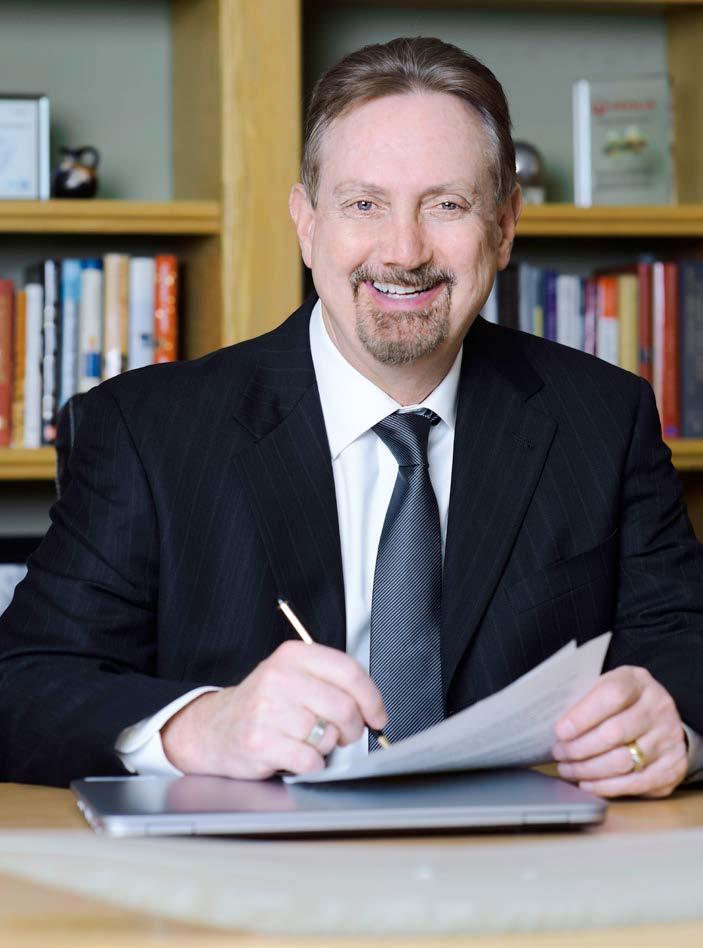
“You have to understand the culture and the social system in the country that you’re working in.”
AUGIE SCHULKE
Ann Schulke
became CHRO in August 2013, he was confronted with three separate HR systems.
“I was independent of those three organizations,” Schulke says. “Having come from the international division, I had no skin in the game. I just wanted to do what was best for Veolia regardless of past practices. So, I worked with senior leaders and the leadership team to implement programs, policies, procedures, software, and best practices for Veolia. It took about three years to reach the point we’re at now.”
The consolidation of the company meant that each of the former divisions’ managers were unfamiliar with the other’s employees. To bring those who might be suitable for promotion to the attention of each of the company’s managers, the sixtyfive-person HR department undertook a massive, two-year project to interview about 1,800 employees who were deemed possible candidates for promotion.
Career development meetings and talent reviews were held with candidates from multiple disciplines in the same room. “What it did for us overall was give us a great landscape of what our talent was, what we were strong in, and what we needed to develop,” Schulke says. Five levels of courses were developed for soft skills, such as management and leadership, along with specialty programs for high-potential employees, women in leadership, emerging talent, and fast-track programs. “It really gave us a foundation for where we needed to go with our talent,” Schulke says.
In September 2016, senior leaders from across Veolia North America met in Massachusetts to address the next challenge: growth. In alignment with Veolia North America’s growth strategy, the HR team plans to focus on driving HR activities in the following themes: establishing career paths for employees, accelerating change management processes, technology upgrades, strategic workforce planning, and developing a coaching/mentoring culture. These

Augie Schulke
CHRO
Veolia Lombard, IL
five themes will remain top-of-mind in each HR meeting to make sure that Veolia has the skilled employees needed to meet its threeyear growth plan’s goals.
The HR department’s efforts have ensured that the right candidates are selected and trained properly for promotion. Veolia North America’s promotion and retention rates are tracked to locate areas where additional work is needed. “We measure our success during the recruitment process and in onboarding the first three months,” Schulke says. “Our scores back in 2013 really were not that great. We were probably in the sixties or seventies. Now, when we measure it, we’re typically in the low nineties for all the categories of talent integration.”
For the future, Schulke wants to get deeper into metrics with more robust HR scorecards and data on time to hire, cost per fill, and scenario planning so employees understand how they can move up in the company. “We’ve done an outstanding job at talent integration,” Schulke says. “New employees feel welcome and are part of a team and get the right training. They have a mentor they can work with to feel integrated into the team. That’s something we’ve really focused a lot on.”

At MetLife, we’re for the workforce. As the workforce becomes increasingly diverse, meeting employees’ personal needs through benefits is an essential part of retaining employees. According to our fifteenth annual US Employee Benefits Trends Study, three-quarters of employees say customizable benefits would increase loyalty to their employer. MetLife is proud to have helped meet the needs of Veolia’s workforce for eight years as a benefits provider. We look forward to continuing to work with Augie and the HR team as they continue to leverage benefits to inspire an engaged, productive, and loyal workforce. Get more insights at benefittrends.metlife.com.
PayFlex is committed to delivering technology and innovation for account-based benefits like HSAs and FSAs. Our full suite of products are designed to help consumers make the right decisions for their health and financial wellbeing now and in the future. For more information about our products and services, visit payflex.com.
As an end-to-end human capital solutions company, CareerBuilder helps employers all over the world find, hire and manage great talent. We combine industry-leading human capital management technology and twenty years of workforce insight to flexibly and efficiently meet our customers’ unique needs.
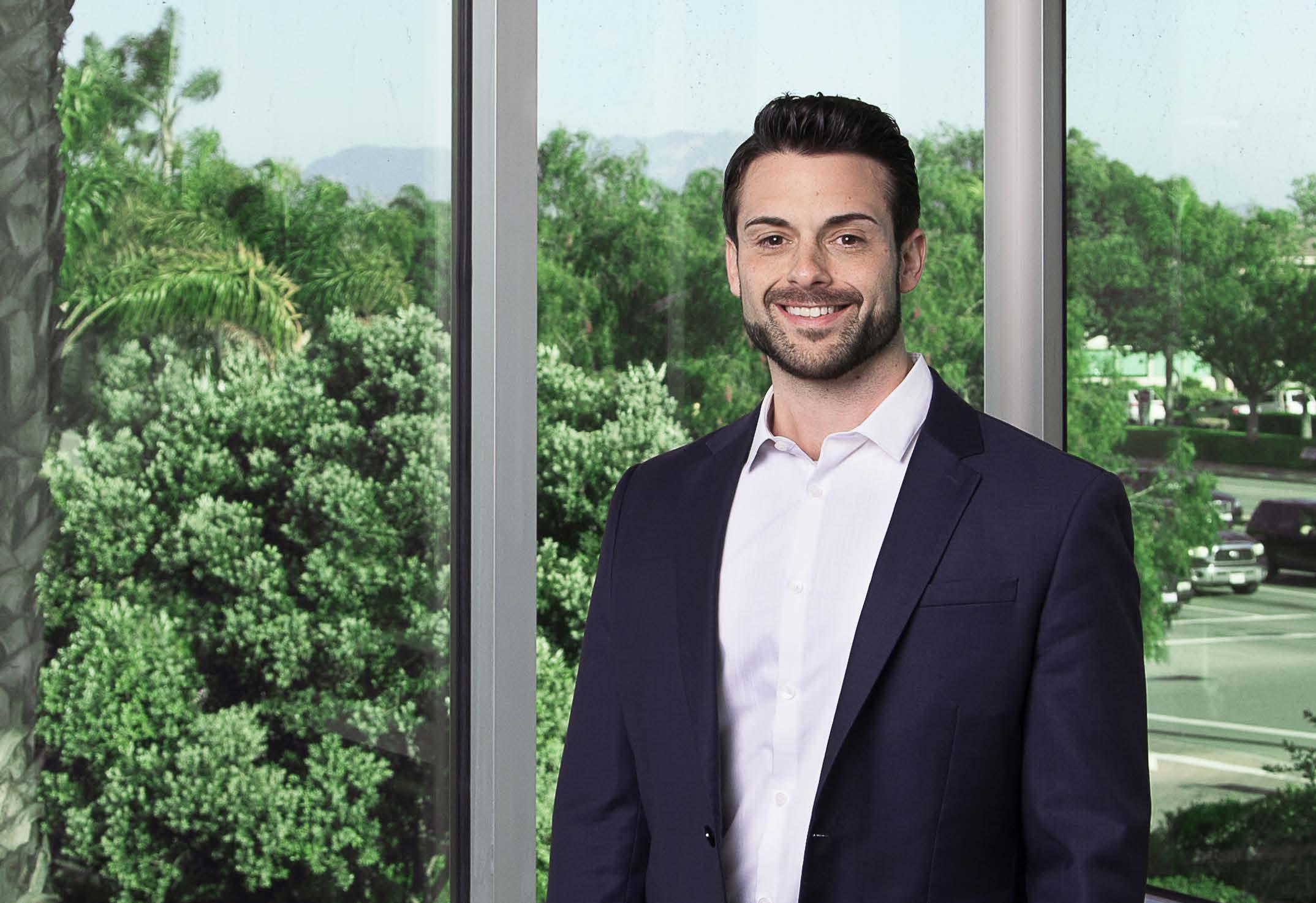
“Every Number is a Decision”
CBC Federal Credit Union has doubled its sustainable profit over the past two years thanks to the work of CFO Michael Vasalos
By JD WHIGHAM
Michael Vasalos CFO
CBC Federal Credit Union
Oxnard, CA
In the two years since he joined CBC Federal Credit Union, Michael Vasalos has built up the treasury role and refocused the company’s interests on maintaining liquidity and increasing sustainable income. And he’s been finding a great deal of success— creating a 100 percent increase in sustainable income. A large part of Vasalos’s progress has come from his ability to dig deeper and his insistence that accounting is the language of business. “Most people see numbers,” Vasalos says. “I see decisions.”
To Vasalos, every number is a decision—if you can dig it out. The CFO of CBC Federal Credit Union is creating a proactive, accountable culture within the company to change the way they make decisions and, ultimately, the story of decisions told in their financials.
Vasalos joined the California-based CBC Federal Credit Union in March 2015 and took on the role of CFO in March 2017. The first thing he did upon joining the organization was take the time to understand the financials. “You have to understand the rules before you can understand how to play the game at its best,” he says.
Vasalos took that knowledge and went about restructuring the company’s balance sheet. First, he focused on building up the company’s investment allocations and selling off legacy investments and loans that were less favorable from a risk-reward standpoint. Then, he went on to activating new sources of funding to improve the deposit structure and stabilize net interest income. Next, he turned to implementing new corporate budgeting processes to manage expenses more efficiently. But before focusing on appurtenances, he says, you have to find the sweet spot for risk. If risk gets too high, much more time is needed to justify yourself to regulators, sapping time for other initiatives. Once you’ve reached the point of diminishing
“Being able to take financial information and make it actionable for operational decisions is how finance people are going to ensure their viability.”
MICHAEL VASALOS
returns, he says, you can refocus on adding value to operational functions, he says.
Vasalos is looking at other forms of noninterest revenue that don’t rely on levying fees on its members. Thanks to a qualitative view of risk and reward, Vasalos is able to make a distinction between what’s fair and what’s equitable. There’s a fine balance in bringing the best possible rates to the members while being sure decisions aren’t detrimental to the company over time so that it can continue to service the members effectively.
Vasalos credits his success to a focus on understanding the business and looking past raw numbers into the reasons behind them. But the lessons he learned in his youth from watching his father have been perhaps even more important to driving that perspective. Vasalos’s father emigrated from Greece in his twenties and started a local seafood market business in Rochester, New York. As a boy, Vasalos worked in that store, which gave him an early insight into operations. “My father was a strong man, charismatic, and
sometimes stubborn,” he says. “He had a lot of common sense and experience.” Moreover, his father’s ability to connect with people helped cultivate the business’ impressive reputation. He believed in dealing with issues and commendations in the moment, not down the line. “You treat people well, but you also hold them accountable,” Vasalos recalls his father saying.
Vasalos also admires his father because he built his business with hard work. His father didn’t have much technical education, but had a strong sense of purpose and determination to drive him forward. His father spent his days building the best life he could for his family, Vasalos says.
Charisma, determination, holding people accountable, and being a diligent and industrious worker are all things that Vasalos has carried with him into his own career.
Communication is key for finance professionals, particularly with people in other roles. “Being able to take financial information and make it actionable for operational decisions is how finance people are going to ensure their viability,” Vasalos says.
The knowledge of his father’s relocation to the United States aided Vasalos in embracing uncertainty during his move to California. His first day on the job in Oxnard was also his first day in the state. But his father’s no-nonsense attitude has helped Vasalos transition quickly to his work. He understands his own views and stands by them, and he’s comfortable speaking up when he sees something in the works that he doesn’t agree with.
Throughout, Vasalos strives to have his work and life not balanced, but aligned— concentrating on keeping his head clear and taking into account the experiences he’s had in his life. He sets aside time to reflect and be grateful, not just for the good moments, but also for the tough moments that have forced him to stretch himself. And that’s where so much of the learning happens.

Recognition like this doesn't happen overnight. It takes experience, hard work, and the power of
Are you ready to start that journey for your institution?
From the Phone Bank to the Boardroom
Roni DasGupta parlays her early experience at a call center into a thriving career at global healthcare market research firm M3 Global Research
By DAVID BAEZ
Most high school students who take cold-calling jobs at market research firms, as Roni DasGupta did, probably burn out quickly. And for those who have the stamina to stay on and weather the inevitable hangups and irate respondents, the job is usually just a waystation until they start college. But DasGupta—currently the chief revenue officer for M3 Global Research, a leading global healthcare market research firm—seized the opportunity, put all of her energy into it, and used it to launch a career that continues to rise.
Besides the discipline and gumption that earned her commissions, DasGupta’s success at the market research company was due to a commitment to integrity, something the higher-ups noticed.
“A few of my peers would try to cheat to get commissions, and they’d get fired immediately,” she says. “My strategy was to pound the phones. It didn’t cross my mind not to be honest about my responses. And because of that, I was the last man standing.”
Money, certainly, was a motivation. DasGupta joined the company, whose offices were five minutes down the street from her
parents’ house, to earn enough money to go to her senior prom. She didn’t want to ask her parents to foot the bill, so she was committed.
“I had to do things right the first time and not mess up so I could make that money for prom,” she says.
Prom was like a beacon that guided DasGupta as a teenager. She was elected class president in her junior and senior year, at the second largest high school in Texas at the time. The central issue she had campaigned on was raising money for the prom in the midst of a funding crisis. The previous class president and officers had done little to raise funds, so her class was left in the lurch. DasGupta’s fundraising innovations included using a grocery store loyalty card tied to a nonprofit and a prom-point system for contributors. In the end, they raised the most money any class ever had: $60,000. It was enough not only to cap the prom ticket price at $15 (the event was held at the swanky Omni
Roni DasGupta Chief Revenue Officer
M3 Global Research
Fort Washington, PA

Roni DasGupta earned both an MBA and an MA in international management studies from UT Dallas’s Naveen Jindal School of Management.
Experience












Hotel in Houston), but to pay for the following class’ prom as well.
After graduation, DasGupta entered the University of Texas at Austin where she studied corporate communications and French, coming back home during summers and winters to work at the market research firm.
When she graduated, the Internet bubble had just burst, and she faced a tough job market. But she had insurance in the form of the company she had been working for. She went from telephone interviewer to managing a room of callers to project supervisor. She was working seventy-hour weeks on consumer and business-to-business projects, an exhausting pace even for a focused twentytwo-year-old like DasGupta.
“There were only two of us running the majority of the projects coming out of the phone room,” she recalls. “We would be doing 40-50 projects at a time, and this is before everything came to be organized on a computer.”
Eventually, she moved on to a project manager position for healthcare research at another company, where she stayed for six years. In that time, she also completed two master’s degrees: an MBA in marketing and master’s in international management. Then M3 came calling. She liked the opportunity because the company was growing. It was a great fit for the skills she had honed at her other two companies, and it incorporated her master’s degrees.
“At the time, the company had only about fifteen people,” she says. “Recognition of the company was low. I started putting in fresh ideas I had learned from my past experience with field work and customized solutions. I think it helped us go over and beyond what the typical healthcare market research company did.”
Her efforts and impact were noticed, as she was promoted or moved into a new role every year. She went from an individual contributor, to vice president of sales, to sales team lead, to head of global sales. Now, as chief revenue officer of M3 Global Research, she is in charge of all the company’s revenue coming out of the United States as well as Europe.
Looking back, DasGupta says she wouldn’t be an executive today without the long hours and rejection she faced at her first company.
“It took a toll on me, but if I didn’t get that experience and learn about research from the ground up, I wouldn’t be able to do what I am doing today,” she says. “I had to be my own secretary and my own administration. I never had the luxury of having an assistant, which is one reason I learned so much.”
DasGupta doesn’t guard the wisdom she’s earned jealously. As a volunteer mentor within the industry, she counsels students interested in marketing research as a career. She has spoken several times at the schools she graduated from, telling her story and providing tips on how to network and build credibility at a young age. Currently, she works with junior and mid-level managers to help them take the next step in their career and helps them come up with a blueprint on how to get there.
“I never say no because there was always someone there to help me,” she says.
One of the main things she tries to impress on her mentees is that it’s better to take all the steps on a path than try to leap to the end.
“I’ve always chosen the path of experience over money,” she says. “It’s always been the best choice for me because it’s a better learning experience. You can’t put a price on that. I went through every level, step by step, and that’s what has made me successful. The money will come later; it’s better to build yourself up for opportunities and not jump too far when you’re not prepared for it.”
GlobaLexicon is a leading translation and language service provider with a reputation for outstanding quality and service. Operating out of offices in the United States, United Kingdom, Spain, Germany, and Belgium, our multinational team provides global coverage to clients across specialist sectors including market research, healthcare, and consumer & retail.
Our project managers, all from a linguistic background, work closely with our in-house linguists to offer the full range of language services. This includes everything from translation and localization through to transcreation, interpreting, and transcription.
Since opening in 2004, we have been committed to adding value through quality and industry expertise at competitive prices. Our high rate of expansion and achievement of over 50 percent growth for four consecutive years are testament to this ongoing commitment. GlobaLexicon continues to grow via referrals from clients who value excellent quality and our consultative service mentality.
For more information, call +1-312-546-4048 / e-mail info@globalexicon.com.
Confirmit enables organizations to develop and implement Market Research, Voice of the Customer, and Employee Engagement programs that deliver insight and drive business change. Confirmit clients create multichannel, multilingual feedback and research programs that engage customers, empower employees, and deliver a compelling respondent experience using the most secure, reliable, and scalable MR solutions in the world. With the award-winning Confirmit Horizons platform, you can use any combination of channels to gather feedback, and create at-a-glance dashboards or in-depth customized reports and deliver them automatically, online or offline through a wide range of channels.
What Doesn’t Kill You Makes You Wiser
ChenMed’s Michael Redmond uses his own medical ordeal as inspiration to help the patients that need it most
By KELLI LAWRENCE
At face value, Michael Redmond’s LinkedIn page reads like a Type-A personality’s dream resume: He was employed by accounting giant KPMG while he earned his bachelor’s degree at Fordham University. Rapid career followed ascent at two different, major health insurance companies—Cigna first, then Aetna—before he settled into the CFO role at Miami-based senior healthcare provider ChenMed.
But what his work history doesn’t tell you is how, a little over a decade ago, Redmond endured a brutal medical crisis that forever changed the way he’d view his work in the healthcare industry.
About midway through his tenure at Cigna Healthcare, Redmond, who was a strategic planning and forecasting controller at the time, had been pushing through what he thought was an especially aggressive strain of the flu. Without taking a single sick day, he thought the worst of it was over. Then, one morning he was so fatigued he napped in his car before even starting his workday. Then, he felt like he was moving in slow motion once he walked into the office. “I remember laughing at myself thinking, ‘I can’t believe this is me. I’m such a wimp!’” Redmond says.
By the end of lunch, he stood up to go to a meeting and quickly found himself flat on the floor of his cubicle, his leg refusing to cooperate. Given that he was already having numbness in his fingers by that point, the fall was especially alarming. By nightfall, he’d spent several hours in the emergency
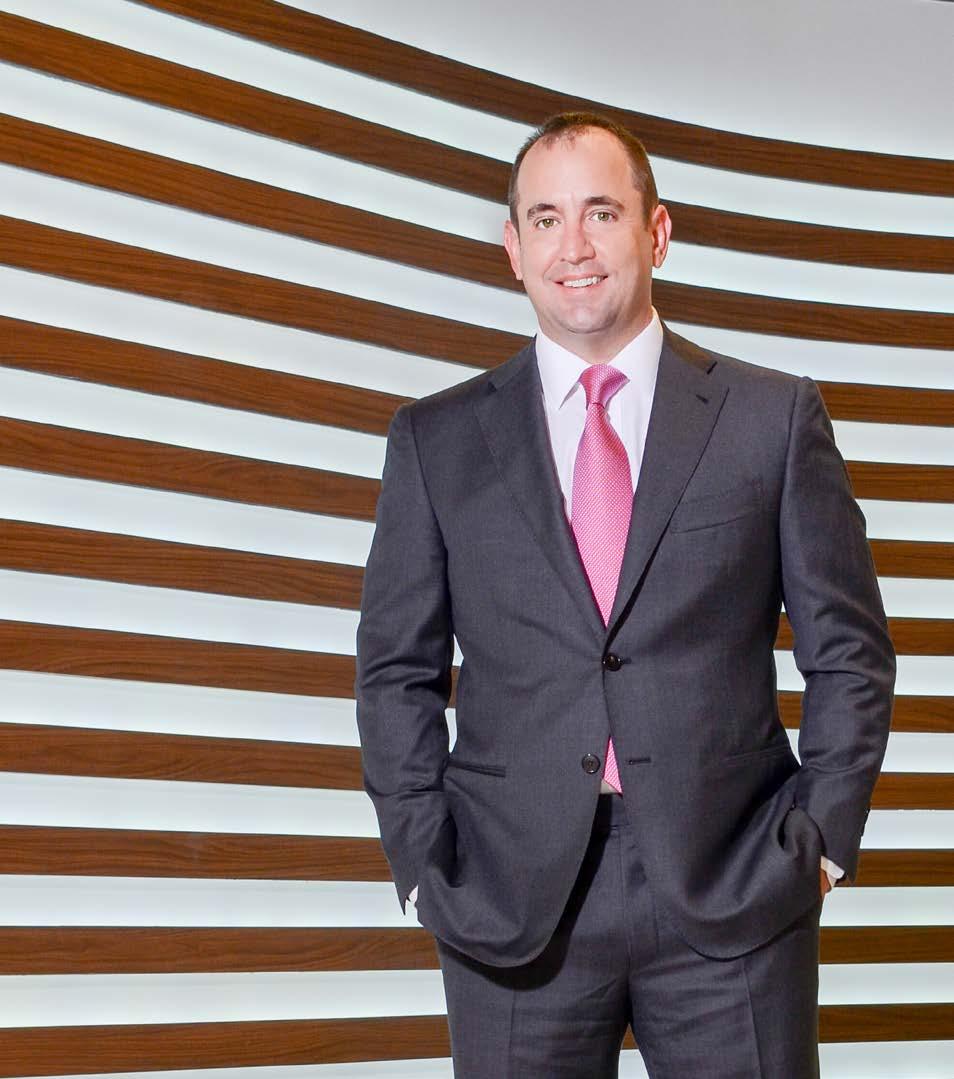
Miami Gardens, FL
Michael Redmond CFO
ChenMed



room, now barely able to stand up at all. He was soon diagnosed with Guillain-Barre Syndrome.
“With Guillain-Barre, your peripheral nervous system is under attack by antibodies that have gone haywire,” Redmond says. “They attack the lining on those nerves, initially affecting the extremities and then moving inward to the rest of the body, including the lungs. Basically your whole body shuts down, but you still feel pain. It’s a pretty miserable experience.”
It’s also a lengthy hospital stay—one month in and out of intensive care in Redmond’s case—followed by another month in a rehabilitation facility. And considering he spent a good deal of that first month in a state of almost complete paralysis, there was an unfathomable amount of recovery ahead.
But he fully recuperated and came away from the ordeal with not only renewed appreciation for good insurance (his treatments cost $25,000 a day at one point), but also with a passion for the healthcare industry that he says never really existed until then. “Throughout the whole process, I was conscious,” he says. “I probably witnessed the best of the best care as well as the worst of the worst care. When I think about insurance, I’m grateful and appreciate it. What I also realized was that relationships between patients and their doctors are critically important. Caretakers need to understand you as an individual; they can’t do that if they see you fifteen minutes a year.”
That realization ultimately led him to ChenMed. He had moved on to Aetna by the time the Affordable Care Act passed in 2010, and he had an active role in helping the company develop an accountable care solutions division as Aetna diversified its revenue. Redmond could sense a bridge building for him between the insurance and provider care sectors of healthcare, and going to the provider side was his next logical step. That’s when ChenMed came calling.
“Everything I was trying to create at Aetna, ChenMed was already doing it,” Redmond says. “The focus on being technology-enabled, at-risk primary care physicians for low- to moderate-income seniors in Medicare Advantage, that’s the core business.”
Where the average primary care physician has a panel of 2,000–3,000 patients, ChenMed’s primary care physician panels are limited to 400–450 patients. When those patients are seniors who are dealing with,
on average, at least four chronic conditions, ChenMed primary care physicians aim to see them about fourteen times a year—whether they’re feeling well or not. Furthermore, ChenMed offers courtesy transportation and in-house medication dispensing as two of its more popular amenities that help keep patients healthy.
“We’re managing the sickest of the sick in a way that’s really helping these people live better lives,” Redmond says. “We’re keeping them out of the hospital and keeping them healthy. And we’re financially sound, so it speaks to where I want to be professionally as well as my personal passion.”
Caring for seniors with multiple chronic conditions is admittedly expensive. ChenMed’s work is made possible because it works within Medicare Advantage’s framework. ChenMed is a full-risk Medicare Advantage provider, meaning that instead of reimbursing for individual visits, tests, and services, ChenMed receives a portion of the premium and is responsible for the total cost of care. ChenMed keeps costs low by investing in preventive care–getting patients healthy and keeping them that way.
The good news is that Medicare Advantage allows ChenMed to risk-adjust, which means it can receive more funding from the government for patients who are sicker. “The reason that’s so beautiful is because, in most of healthcare, what the insurers are trying to do is put products out there that allow them to cover the largest percentage of the population but in a way where their risk is mitigated,” he explains. “What risk adjustment allows us and insurers to do is put a product out there that has broad appeal.”
Although ChenMed’s model of care has yet to prevail nationwide, Redmond knows the competition is out there—especially in ChenMed’s base of southern Florida, where senior populations are among the highest in the country. But he also knows the competition can’t quite compare to where the company is right now. “Clinical culture, scalability, and our technology—that’s what sets us apart,” he says.
“Watching and participating in the growth of ChenMed over the past several years has been an incredibly rewarding experience. Mike Redmond is a consummate professional, always eager to explore new ideas and to tackle any issues head-on. He expertly leads a team filled with skilled, experienced healthcare professionals and I’m happy to count myself among his resources.” –Robert B. Glick, Kaufman Rossin
Margaret Fox
Right Man for the Job
Frontier Communications general counsel Mark Nielsen is using his legal and political savvy to help the company make strides in the landline industry
By JOE DYTON
If ever there was a lawyer whose background and skills perfectly matched his job, that lawyer is Mark Nielsen. The Harvard-educated Nielsen is general counsel of Norwalk, Connecticut-based Frontier Communications, a regional telecom company providing landline voice, video, and high-speed Internet services in parts of twenty-nine states.
After stints as a senior in-house lawyer at Raytheon Company and then Praxair, Inc., Nielsen joined Frontier as general counsel in March 2014. At Frontier, he assumed responsibility for all of the company’s legal affairs, including litigation, intellectual property, corporate governance, and SEC compliance.
But what placed Nielsen immediately in the center of the action was his background in mergers and acquisitions. Just prior to his arrival, the company had announced an agreement to acquire AT&T’s landline business in Connecticut for $2 billion. Nielsen helped
close that deal in October 2014, and then immediately shifted to negotiating an even larger buy: the acquisition of Verizon’s landline operation in southern California, central Texas, and the Tampa Bay, Florida, region for $10.5 billion in cash and assumed debt.
“Our transaction with Verizon involved enormous complexities—legal, regulatory, financial, technological, and operational— and I am proud of the critical role played by Frontier’s legal department in each of these areas,” Nielsen says. “There was literally a year between a sign and close, so the operating covenants with respect to how the seller would operate the property that we’d be acquiring were especially important. It was a massive team effort.”
The deal included not only the merger of three Verizon operating subsidiaries into Frontier, but also a multifaceted series of financing transactions. Frontier financed the purchase price through a combination of a registered offering of common and convertible preferred stock, a delayed-draw Term
“It’s important to be business partners. That’s my philosophy of what an in-house legal department needs to be in helping with a large transaction.”
MARK NIELSEN
Loan A, and a Rule 144 offering of three series of unsecured senior notes.
Nielsen’s legal team on the Verizon transaction received high marks for its collaboration with key leaders throughout the business. He was especially proud of a note he received after the closing from Timothy Travaille, leader of the company’s integration team, thanking him for the role played by his and his team of “friendly lawyers,” Nielsen says.
“Tim Travaille’s thank-you note represented an important achievement for us,” he says. “Too often it seems that lawyers are seen as those who say no and obstruct things that need to get done.” The note in essence said that the members of Nielsen’s in-house legal team were, instead, constructive, helping the company get to yes with Verizon and solving a number of complex integration issues and challenges.
“It’s important to be business partners,” he says. “That’s my philosophy of what an in-house legal department needs to be in helping with a large transaction.”
After successfully handling all legal aspects of the Verizon transaction, the next chapter of Nielsen’s Frontier journey
commenced on January 1, 2017, when executive vice president Kathleen Abernathy, a former commissioner of the Federal Communications Commission, announced her retirement as leader of the company’s regulatory affairs function. Abernathy’s responsibilities were added to Nielsen’s portfolio, and once again, he found himself thrust into a role for which he was perfectly suited.
Nielsen’s background has a significant political dimension. In the 1990s, he served six years in the Connecticut General Assembly—one term in the state House of Representatives followed by two terms in the Senate.
After a political hiatus, he also served as Mitt Romney’s legal counsel and then chief of staff when Romney was governor of Massachusetts. As legal counsel, Nielsen provided advice on legal aspects of policy decisions, drafted legislation and executive orders, and served as the governor’s principal advisor
EVP, General Counsel, Secretary Frontier
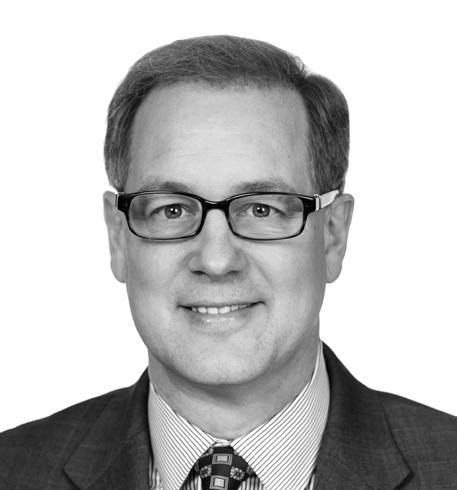
Mark Nielsen
Communications Norwalk, CT
on judicial appointments. As chief of staff, Nielsen was responsible for the administration’s policy and legislative initiatives, as well as overseeing the daily operations of state government.
Nielsen’s experience in the political arena has served him well at Frontier, allowing him to seamlessly assume responsibility for Frontier’s regulatory affairs at the state and federal level. And once again, Nielsen’s timing has been excellent.
“A new party and president assuming power in Washington, DC, translates into a bigger role for governmental relations than if Hillary Clinton had won,” he says.
Nielsen foresees significantly more support for the landline industry from the Trump administration, particularly in rural America, where Trump performed well in the election and Frontier has a strong presence.
“Some very basic issues of telecommunications policy are now open to reconsideration at the FCC,” Nielsen says. “It’s a very exciting time for us and it presents an opportunity for us to accomplish things we wouldn’t have dreamed of even recently a few months ago. Obviously, the landline industry is challenged, as each landline company has to figure out how to provide better, faster service in rural parts of the country, and we think that the new administration will have a greater appreciation for that.”
Reflecting on his first three years at Frontier, Nielsen says that he has landed in a “dream job” and is proud to be part of such an outstanding legal team.
“In the span of three short years, I have helped plan and execute the sort of transformative acquisitions that most lawyers can only imagine, and I am now delighted to be working to influence important components of federal telecom policy at exactly the right moment,” Nielsen says. “Today, my role is the perfect combination of my passions—and I could not be more grateful for the opportunities I have been given at Frontier.”

Asia, Europe, and the Middle East. The firm is known for its ability to address the most demanding legal challenges worldwide.





“We share so much”
As chief procurement officer at Florida State University, Ian Robbins comes up with the most cost-effective ways for the campus to obtain goods and services
By DAN CAFFREY
WWith about fifteen thousand students and a spend on goods and services in excess of $90 million, Ian Robbins had a lot to oversee as director of procurement services at the University of Montana. But those numbers were small when compared to what he’d oversee when he moved to Florida State University (FSU), where he currently serves as chief procurement officer. That means he’s in charge of procuring goods and services for a campus of more than forty thousand students, in addition to faculty and staff. FSU also spends about $420 million annually.
However, even with those larger numbers, that’s still somewhat of an oversimplification of what Robbins does every day.
“We’re not just transactionally focused,” he says. “There’s a lot of strategic activity that goes into everything because we want to be able to procure the goods and services on campus for the best value. That means there’s negotiation going on, and there’s the establishment of strategic contracts. There’s also spend analysis that looks at spending behaviors so we can try to leverage buying power for all of our departments.”
Needless to say, it’s an enormous undertaking. “You can imagine with an entity of our size and as distributed as we are, we have so many different silos of procurement activity on the campus,” Robbins says. “Trying to rein that in to get folks to buy off of our strategic contracts that we’ve negotiated sometimes can be a challenge.”
That hasn’t, however, stopped Robbins from giving it his all in the name of the garnet and gold. Although he’s only been at FSU for three years, he’s spearheaded several new e-procurement enhancements, worked on a new vision statement for
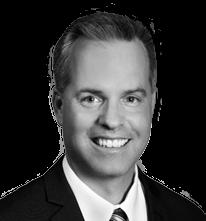
Ian Robbins Chief Procurement Officer
Florida State University Tallahassee, FL
his department, and developed a procurement technology roadmap, among many other initiatives.
His hard work is paying off. For the past two years, FSU has been presented with the Excellence in Procurement Award from the National Procurement Institute—something that the school had never won before Robbins got there.
“It’s a prestigious award,” Robbins says. “It’s given for organizations that demonstrate excellence in innovation, professionalism, productivity, e-procurement, and leadership. They’re very stringent on what it takes to win. And it’s a collective thing—a total team effort.”
Now, Robbins shares some of the actions that have led to such an honor, including networking with other CPOs around the world and championing e-procurement software customized for FSU.
Is being a procurement officer in an academic setting—specifically at a large state university—different than it would be at another type of organization?
In the private sector, it’s more driven by profit and loss—the P&L statement. You don’t necessarily have that mandate in higher education, so you need to incentivize folks to want to use those contracts. I think it’s more service-driven. If you show your researchers and administrators across campus the value, then naturally they’re going to look at it and go, “Oh, this is more efficient. This is going to save me money.”
There’s also a marketing aspect to it, I would say. Maybe marketing isn’t the best term, but you’ve really got to get out in front and be able to demonstrate that you’re not a roadblock. You’re not somebody who’s telling folks no based on policy. You’re in fact saying, “How can I help you and how can I make your dollar go further?”
So the job involves a good deal of persuading various academic departments why procurement is important. It does, and not just from myself. My entire team continually pushes on showing why procurement is important. We look at total cost of ownership. For instance, if you’ve got somebody in a department that says, “You know, I can just run downtown and buy that at Costco.” Then, you have to analyze the total cost of ownership. That means looking at how long it took them to find the product, plus the time they spent away from the office, and their gas. When you add all that into the cost of the product, you more
“Rather than reinvent the wheel, I can call up someone who I know at an institution and say, ‘Okay, I know you have this challenge. What did you do to address it?’”
IAN ROBBINS
than likely didn’t save by doing it that way when you could have just sat down at your desk, ordered the item directly from one of our strategic contracts online, and be done with it.
I’ve literally seen that. I saw that at my last school. We started arguing over sticky notes and scotch tape. It was like, really? You get people that will find it less expensive, and they just dismiss it without really thinking about the total cost of ownership.
Since coming to FSU, what are some of the initiatives you’ve taken to make the procurement process more appealing?
Lately, I’ve been very engaged in a major project called the SpearMart Enhancement Project. SpearMart is FSU’s branded name for its e-procurement system. We’re moving all of the procurement activity for campus into this platform. It’s intended to be a one-stop shop for all of campus. If you need to initiate any type of procurement or purchase order or fill out a procurement form, all of this and more can be done within this platform. I think that’s going to greatly enhance our functionality to campus.
What’s your relationship like with other procurement officers around the country? You’ve mentioned that you all know each other, especially in the world of academia. There are various organizations and committees that many of my peers serve on, along with several professional development conferences throughout the year that provide
networking opportunities. Many of us are also part of various e-mail distribution lists that keep us connected. We talk about the latest trends, what we’re doing in our institutions. We also share best practices.
We leverage a lot of their contracts from the Educational and Institutional Cooperative Services, Inc. Since I’m on its sourcing committee, that’s been valuable from a networking standpoint. That’s something that’s really different and unique about higher ed than the private sector; we do know each other, and we do share. Rather than reinvent the wheel, I can call up someone who I know at an institution and say, “Okay, I know you have this challenge. What did you do to address it?” Sometimes that can shorten your learning curve.
That’s a big part of what we do: shortening that learning curve by sharing best practices and thinking through issues together. In higher education, we share so much.
Concur can help universities of all sizes beyond automation to a completely connected spend management solution encompassing travel, expense, invoice, compliance, and risk. Our global expertise, industryleading innovation, and dynamic ecosystem of diverse partners and applications unlock powerful insights that help colleges and universities reduce complexity and see spending clearly, so they can manage it proactively.
Concur is a proud partner of Ian Robbins and Florida State University in their strategic endeavors to bring insight to travel, expense, and the safety of university travelers. For more information on how Concur can help your university, please visit www.concur.com.

Travel and Expense Trusted by Colleges and Universities
Tracking your college or university’s travel and entertainment expenditures is critical, but not always easy when disparate systems create islands of data, preventing full visibility into spend. We understand the complexities of managing travel and expense in Higher Education institutions, and that universities need a reliable solution to depend on.
From the infrequent traveler to the program manager, Concur solutions are trusted by over 330 university clients to consolidate data and simplify the process for everyone. Our intuitive UI and mobile applications provide faculty and staff an easy way to complete and approve expense reports, whether on the road or on campus.
Concur is the smart choice colleges and universities can trust.
The Drive to Mentor
Jeff Snider, general counsel of Sonus Networks, has helped develop seven
By DAVID LEVINE
general counsel over his career
Jeff Snider’s life, both at work and at play, is all about variety. He loves to tinker on antique cars, like his 1960 Austin-Healey, build furniture, and go mountain biking.
“I am interested in a lot of things,” says Snider, senior vice president, general counsel, chief administrative officer, and secretary to the board of Sonus Networks, in Westford, Massachusetts. That long title, likewise, allows him to keep his hands in almost every area of the company. “I have a great job for someone with a short attention span,” he says.
One thing he pays close attention to, however, is leadership. Snider is a first-class mentor. In fact, at least seven of the lawyers he helped develop over the course of his career have gone on to be general counsel at their respective companies. “I believe in hiring people who are smarter than me and then giving them the opportunity to succeed,” he says. “The number who’ve gone on to general counsel roles is the best indication that I have done a pretty good job hiring smart, competent, motivated people, and that is something I am proudest of.”
Snider, fifty-three, was born and raised outside of Boston. He attended Amherst College and the University of Virginia law school. He started his career at Hutchins & Wheeler, then the oldest law firm in Boston, founded in 1844. “It still had Hutchinses & Wheelers in the practice, which was incredible,” he says. He then worked as general counsel at a small Internet company. “That was attractive because in a legal world that required increasing specialization, I could do all kinds of different things.
Jeff Snider VP, General Counsel, Chief Administrative Officer Sonus Networks Westford, MA



We are proud to be your partner and look forward to continuing to help you and Sonus Networks achieve your ambitions.

AUTOMOBILE OBSESSION
Jeff Snider has been interested in cars for about as long as he can remember.
“My dad was always into cars, I’ve been into cars since I was a little kid, and my son has been into cars since he was a little kid,” Snider says. “It’s now something that all three generations enjoy.”
In his early twenties, Snider bought his first antique automobile, a 1967 Sunbeam Alpine, the same model that his dad drove as a new car when he was a kid. After more than twenty years of buying cars, Snider has owned a series of vintage British and German cars, but never more than one at a time. Currently, he has a classic 1960 Austin-Healey convertible.
“I enjoy fixing them up, driving and showing them, and then selling them and moving along to something else,” he says.
Outside of the real vintage wheels, Snider says that he races what he jokingly calls a “modern antique.” Each year for the 24 Hours of Lemons race, he takes out his 1990 Volkswagen Jetta in an endurance race series for $500 cars.
I never worked on anything more than about forty-five minutes,” he says.
After other jobs at both public and private companies, he found himself at Sonus Networks in 2009. Sonus develops cloud- and hardware-based solutions for VoIP, video, IM, and online collaboration. He was hired as general counsel. He now oversees four other attorneys and a paralegal. Over the years, he has gathered even more responsibilities: real estate, travel management, and human resources, overseeing HR for about 1,100 employees in thirty countries.
Hiring right and coaching well are the keys to his success. One hiring trick he uses is asking about a candidate’s athletic background. “When interviewing, we try to find out what sports the person played growing up,” he says. “To me, someone who played a lot of team sports is more attractive than someone who focused exclusively on individual sports. It’s that ethic and desire to be part of a team. I want someone who is smart but doesn’t have a big ego, who wants to
contribute to the organization rather than himself or herself.”
As a mentor, Snider offers many teachable moments. At weekly team meetings, he discusses recent issues and how he approached them. “Sometimes, it is specific; other times it’s more philosophical,” he says. “I am coaching them to be comfortable with their decisions. I tell them, ‘Come to me only after you have tried everything or if it is a high-profile thing that I need to be comfortable with.’”
Snider also coaches his people to be facilitators, not hindrances. He often tells his mentees the same story: At Hutchins & Wheeler, he was assigned a mentor. A few years later, Snider’s mentor left to go in-house. About a year later, Snider asked him the difference between being in private practice and being in-house. “He said, ‘In private practice, people pay hundreds of dollars an hour for your time, so they listen to what you have to say. In-house, you have to be more careful because if you are viewed as an inhibitor, they will avoid you. Then, you don’t know what’s happening in the business and you can’t help,” Snider explains. “He said to take the opposite approach. Ask how you can make their lives easier. After that, they will seek you out, and you can have an impact on the business.”
Snider took that lesson to heart and passes it on to the attorneys under his charge. “Never say no—unless it’s illegal or immoral,” he advises. “Instead say, ‘OK, and have you thought about this or that?’ Your job is helping people do their job better, faster, and with less risk. That is absolutely critical. I talk about it during the recruiting process; that is how important it is. When you do that, the rest of the company seeks you out. I love it when someone says, ‘We thought of a problem and hope you guys can help.’ That is very different than, ‘I know we have to run this by you, but whatever you say we will do it anyway.’ It makes our work more enjoyable and makes us more tightly integrated into the business.”
As an example, he mentions that Sonus is currently dealing with a technical security issue. It’s not a legal issue at all, but someone still felt comfortable reaching out to legal to help resolve it. And that’s exactly what Snider wants.
It all comes back to his belief in varied interests. “We want to do a wide range of things,” he explains. “If someone says that he is the leading expert in one thing, that is probably not the person we are looking for. We want someone who loves doing all kinds of things, someone who wants to go figure it out. Because that’s fun.”

Health Through Kindness
Caitlin Beck learned at a young age that, in the world of healthcare, kindness can be just as important as medication. It’s a philosophy she puts into practice today at UCLA Mattel Children’s Hospital.
By SIENNA MAE HEATH
Caitlin Beck Chief Administrative Officer
UCLA Mattel Children’s Hospital Los Angeles, CA
For Caitlin Beck, UCLA isn’t just where she works—it’s an institution that’s been an integral part of her life for the past fifteen years. Her connection to the school started back in 2002, when she enrolled at the university to earn her master’s degree in public health. When looking back on her education, she says it seemed meant to be, even from the first day.
“I walked into that class and it felt right,” she recalls. “This is it.” While in school, Beck’s academic advisor, Dr. Paul Torrens, encouraged her to take an internship at healthcare consulting practice PricewaterhouseCoopers (PwC). But it would seem that her destiny was intertwined with UCLA. Perhaps her boss at PwC secretly knew it, too. While Beck worked there as a manager and consultant (both during her time in graduate school and for a few years after graduation in 2005), her employer recognized that public health was her true calling and urged her to pursue a career in that field. After five years at PwC, Beck left the company in 2008 to serve as the director of provider programs and outreach at Children’s Hospital Los Angeles. Her public health journey reached its next phase in 2013, when she found herself back at UCLA, not as a student this time but as executive director of women’s and children’s services at UCLA Health. In many ways, it felt like coming home.
In her current role as chief administrative officer of UCLA Mattel Children’s Hospital and women’s health, Beck supports the members of the care team who help patients. Several of her administrative duties include leading teams and large-scale projects, interacting with families, dealing with facility issues, and also getting coloring books for patients. But her primary achievement is something more unique: the creation of the Everyday Wish Fund. A smaller-scale version of the Make-a-Wish Foundation, the Everyday Wish Fund grants practical, daily wishes to children at the hospital. For instance, these patients might ask for princess pajamas, a special comfort toy, or for their room to be decorated like a classroom.
When granting wishes, Beck does whatever she can to make sure they come true, often pulling in outside resources to make children’s dreams a reality.
“People are always more than willing to help,” Beck explains. “All we have to do is put the ask out there, find a solution, and I can find the funds and work the system to make it happen.”
She recalls one recent wish from a thirteen-year-old cancer patient in hospice care—a wish that required
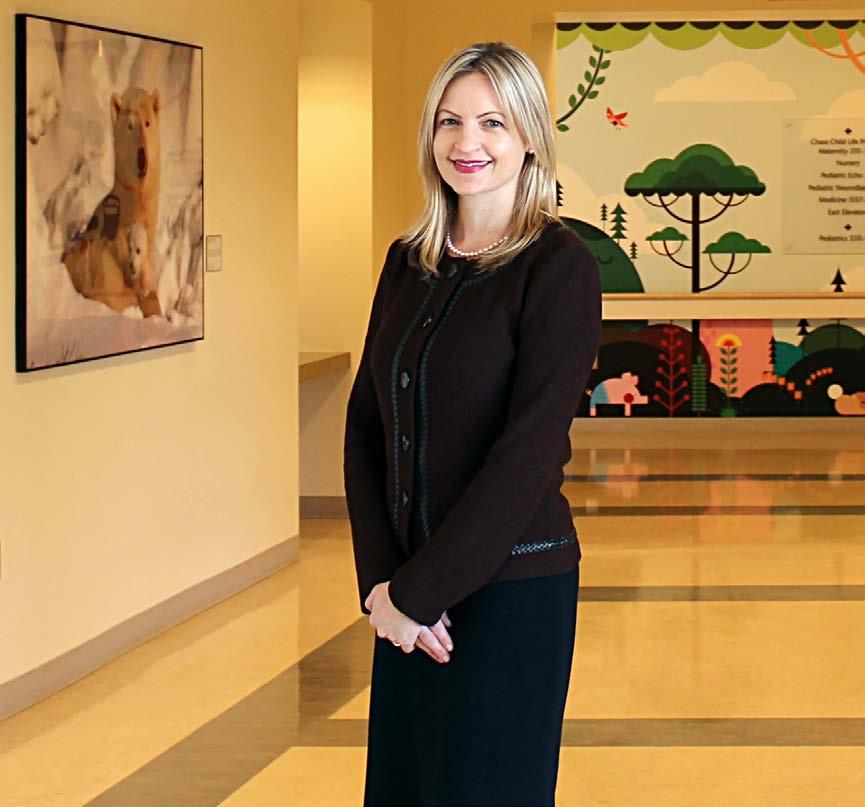
some outside help. Looking for creative ways to distract himself, the young boy designed a custom superhero costume inspired by Marvel’s Agents of S.H.I.EL.D. Beck quickly reached out to a friend who designs wedding gowns so they could bring the design from the page into the real world. The boy was thrilled to the point where he wore the costume to all of his medical procedures. Soon, Beck’s friend was making various ensembles for other patients, too.
Acts such as this tie directly back to UCLA Health’s vision of healing humankind, one patient at a time. Beck and the rest of the staff behind the Everyday Wish Fund recognize that something as simple as a superhero costume can help alleviate a patient’s suffering and make their time on earth—however long—as rewarding as possible.
“The idea that we can improve the experience of every patient through acts of kindness
Caitlin Beck ensures that UCLA Mattel Children’s Hospital is as comforting and positive a place for her patients as possible.

“The idea that we can improve the experience of every patient through acts of kindness is what led me to healthcare.”
CAITLIN BECK
is what led me to healthcare,” reveals Beck. She knows from firsthand experience. While growing up in Pittsburgh, her grandfather was diagnosed with cancer when she was still in high school. Beck and her older sister helped take care of him and their grandmother, accompanying them to chemotherapy and doctor appointments. It was here that Beck learned the effect that kindness can have in healthcare.
“Learning to be an advocate as a family member was very eye-opening for me,” she says.
Beck’s grandfather passed away when she was a sophomore in high school, and one of the best pieces of advice she got was to start volunteering at the hospital where her grandfather was treated. In fact, the suggestion came directly from his hematology/oncology doctor. Soon, Beck was helping comfort patients by visiting and getting them snacks.
Beck’s immediate family influenced her career path as well. Because she’s one of seven siblings, both her mother and her father placed great emphasis on empowering children. “In my family, everything was about the kids,” she remembers. “What the kids want for dinner, what they want to do. My uncle even invented the original ‘Kids Day’ annual holiday where the kids were in charge for the day.” This is something that obviously comes into play at her current job at UCLA Mattel Children’s Hospital. When a younger patient comes up with a concrete idea, she urges her team to get it done.
“Our patients deserve every comfort we can give them,” Beck says, “And there’s evidence that hospitalized children have better health outcomes during uplifting experiences.”
That’s something Beck has known for quite a while, dating all the way back to her grandfather and her first volunteering hours at a hospital. It’s a philosophy she’s embraced for most of her life, from childhood to graduate school and beyond. And at UCLA Mattel Children’s Hospital, she’s found a workplace and career that reflect these ideals—a sanctuary that merges her personal, professional, and educational identities. It’s a place she can call her home away from home.

Thought Leadership, Visionary Transformation
Our experienced team of health care consultants have helped providers and payers succeed in the new health care environment while developing the diverse talent needed to fill future health care roles.
As your partner, we’ll drive your success every step of the way.

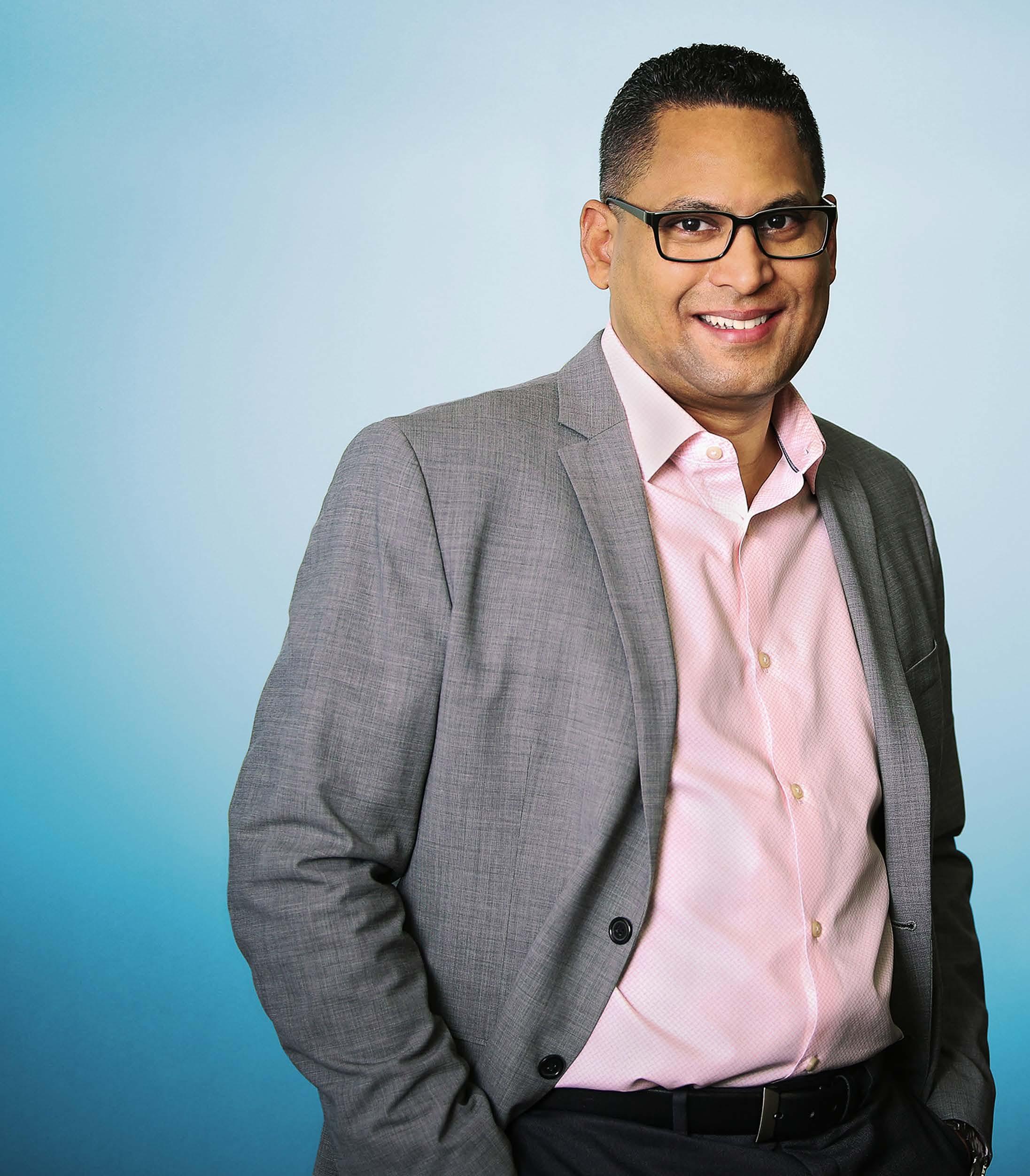

When Worlds Collide
How a love for science, a knack for business, and a passion for law brought Alex Long to the top of GE Aviation’s IP legal department
By ZACH BALIVA
AAlex Long closes one eye and lifts his right hand into the air, separating his thumb and index finger by a half-inch and looking through the gap with his open eye. “I knew an awful lot about that much,” he says about that tiny space. Long is talking about the six years he spent at MIT as an undergraduate and graduate student in mechanical engineering. Today, he works at GE Aviation—but not in the role one might expect.
After Long began pondering the limited scope of his growing expertise as a scientist and engineer, a strange series of events occurred. One of his peers—a PhD candidate in nuclear engineering—left MIT for a career on Wall Street. Inspired, Long started reading books on economics, business, and current events. The country was still struggling with a recession. Long narrowly avoided a costly lab mishap while conducting his master’s thesis experiment. Although the love for physics and engineering he discovered at the prodding of a high school teacher and mentor never waned, the young extrovert grew frustrated by long sessions spent isolated in the lab. He started to wonder what life was like outside MIT’s doors.
Upon finishing his master’s degree, Long became a management consultant and spent three years working for firms including Andersen Consulting and Sapient. He learned about business and started rubbing elbows with leaders in various companies and industries. That’s when Long began to contemplate yet another career switch, taking him even further (so he thought) from the lab. “I’ve always loved science, and I couldn’t deny I had a desire to make an impact on the world,” he says. “I saw what people were doing in other industries and wanted to explore further how my background could help me to contribute.”
Long decided to embrace all options. His interest in social justice led him to consider law school and to accept an invitation to a student-recruiting event at Chicago-Kent School of Law. That’s where a fateful conversation would alter the course of his professional life forever.
Long met Kimberly Moore—also an MIT alum, then a professor at Chicago-Kent, and now a judge on the United States Court of Appeals for the Federal Circuit—who gave him a primer on intellectual property law. “She explained that a good IP lawyer understands technology, translates technical language in a persuasive way for the judge and the jury, and understands the impact of that technology on business and industry,” Long says. As Moore described the subject matter and needed skills, Long realized he might
Alex Long Chief IP Counsel, General Counsel - Engineering
GE Aviation Cincinnati, OH
be a perfect fit for the job. Months later, he enrolled at Northwestern University’s school of law.
Long started his legal career at Cooley LLP and later spent a decade at Latham & Watkins, where he made equity partner in 2011. In 2015, a former colleague persuaded Long to consider a job as GE Aviation’s top IP lawyer. That eventually turned into an offer Long couldn’t refuse. The lawyer who once wanted to become a rocket scientist would be working alongside them.
Long made the leap in-house in 2015 and hasn’t looked back. “Going in-house with GE Aviation has given me the chance to help a company that creates great products that change the world,” Long explains. “I love the challenge and the chance to make an impact.”
Long’s role at GE Aviation is a strategic one in which he can apply his full expertise and experience accumulated over his various career roles. Long contrasts firm life with his in-house position by comparing it to the world of professional sports. At the firms, he was like a professional athlete focused on the “sport” of IP litigation, constantly training himself and preparing to win for his clients on the playing field. At GE, he sits up in the owner’s box, acting like a general manager who is more concerned about the full season than winning just one game. He looks at trends and big-picture issues to draft the playbook and recruit and cultivate the right players.
Perhaps most importantly, Long fits well into GE Aviation’s culture of innovation. Many of the organization’s senior leaders, including CEO David Joyce, are engineers. The company makes products and provides services that are steeped in sophisticated technologies. And Long’s background in engineering, business, and law—and his aptitude for technology—help him talk the talk with GE’s scientists and gather the information his team needs to manage risk while protecting the company’s IP assets.
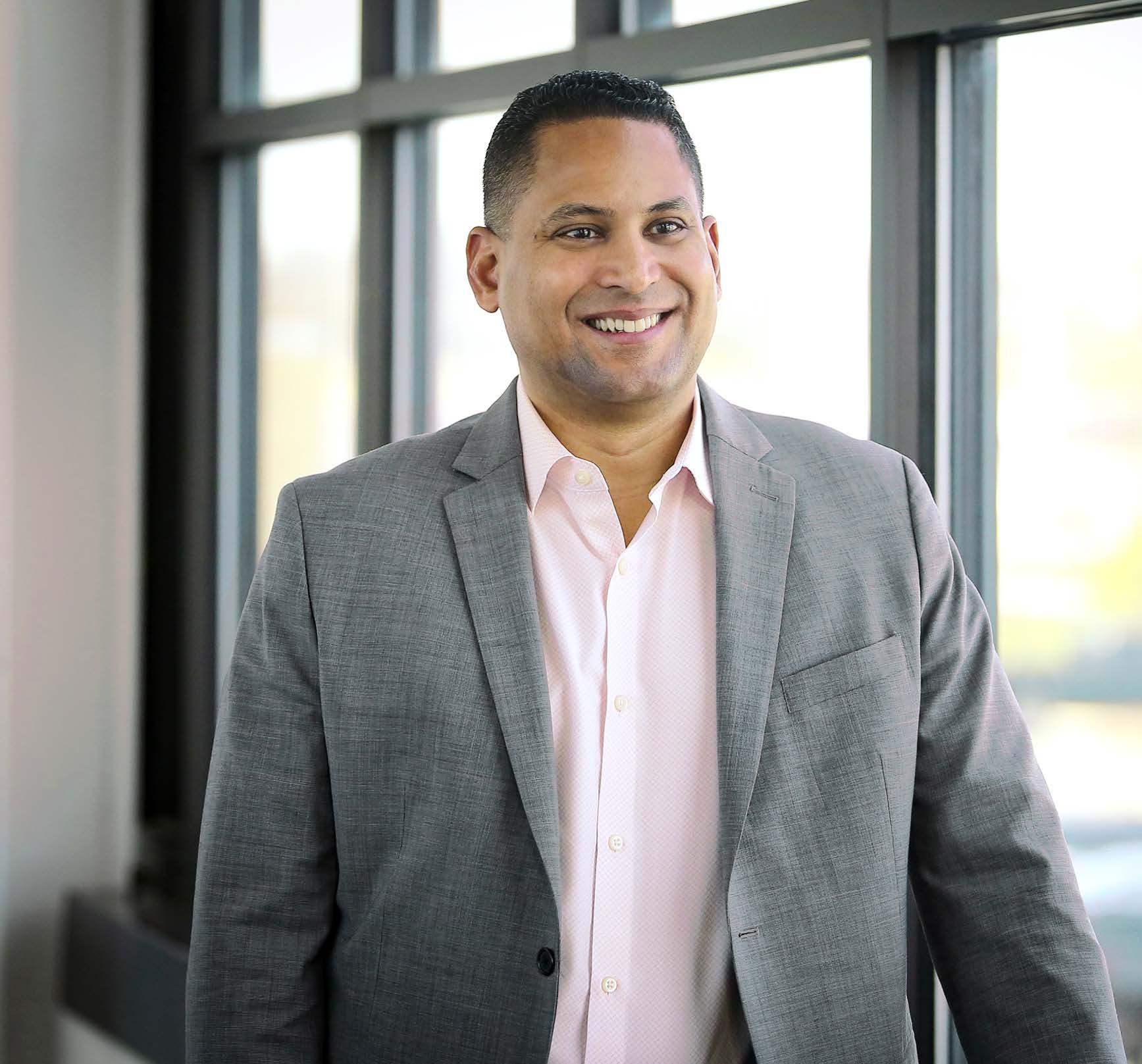
A SOLID FOUNDATION
One name has stayed with Alex Long throughout his career—Jackie Robinson. As a college student, Long received a four-year partial scholarship from the Jackie Robinson Foundation (JRF). The organization, founded by the widow of the famed baseball player and civil rights pioneer, provides scholarships coupled with support and leadership development resources to minority students.
Completely coincidentally, GE sponsored Long’s scholarship from the JRF, which led him to a summer internship with the corporation. Many years before eventually joining GE Aviation in 2015 as chief IP counsel, Long supported engineers who were then working on the GE90 turbofan jet engine while he was a student intern from MIT.
Later, when Long’s career took him to San Diego, JRF leaders asked him to present at the coastal city’s Jackie Robinson Family YMCA. He served on that’s organizations board of directors for ten years, helping the YMCA fulfil its mission of helping people realize their fullest potential through the development of spirit, mind, and body.
A chance encounter with another MIT alumnus led Alex Long down his career path of IP law. Since 2015, he has been a key component of GE Aviation’s legal team.
Weil salutes Alex Long for his exceptional accomplishments and values its relationship with the extraordinary legal team at GE Aviation

Weil, Gotshal & Manges LLP
weil.com
“IP is now just part of how we do business. There are tremendous benefits to be realized when a company unlocks the full potential of its IP portfolio.”
ALEX LONG
“I get paid to learn,” Long says. “There’s nothing better for someone who loves science and technology.”
In his first year, Long helped champion a shift in the culture at GE Aviation by raising awareness of the massive importance of intellectual property matters in the modern, highly competitive marketplace. “IP is now just part of how we do business,” Long explains. “There are tremendous benefits to be realized when a company unlocks the full potential of its IP portfolio, and GE Aviation is now thinking about that in new ways.” IP is playing an increasingly important role in business. Companies such as GE, which invest billions of dollars in research and development, must not only protect the value of that investment, but they also must unlock new ways to leverage their intellectual assets to expand market opportunities and generate new channels for revenues.
While traditional lawyers may handle negotiations, protect assets, and manage risk, Long’s unique background gives him the ability to create value at GE Aviation. That’s what he loves about his job. “I work for a company that’s almost 125 years old, but it feels like a start-up,” Long explains. “I get to try new ideas and empower others to take managed risks as we discover great things together. I’m having fun.”
“Weil is honored to work with Alex Long and the team at GE Aviation. We value our relationship with General Electric, and are excited to work with them as they continue their long history of innovation in the aviation industry.” –Brian Ferguson, partner and cochair of patent litigation at Weil Gotshal & Manges LLP





YES THAT MEANS YOU








the secret ingredient to success
Republic National Distributing Company
Five Guys
7-Eleven
secret ingredient
Customer service is always front and center for these six leaders of the food and beverage industry. By keeping their departments—from finance to HR—running smoothly, they help keep customers’ bellies full and their companies on top of the food chain.
Grubhub
Casey’s General Stores
Zoës Kitchen
the formula for delivering joy
Grubhub’s controller details the groundwork behind the symbiotic evolution of the online food-ordering giant and the nonprofit Holiday Heroes Foundation
Words by Jenny Draper
Portraits by Kristin Deitrich
Brandt Kucharski
Corporate Controller
Grubhub
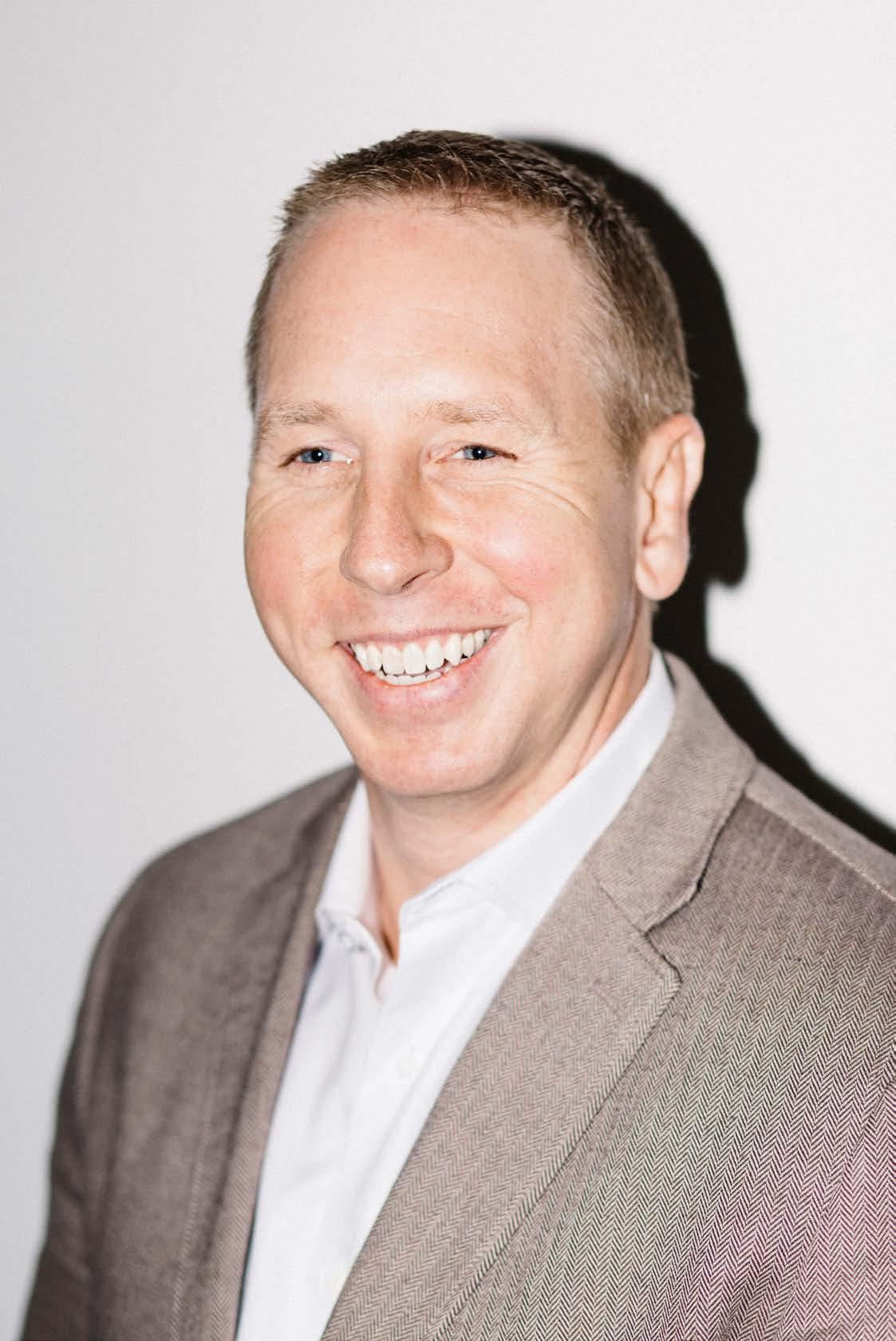
When Brandt Kucharski ran into two high schoolers who sold candy apples and raffle tickets outside of Wrigley Field in Chicago, he felt compelled to help. The sisters, Heather and Hayley Hagopian, were seeking to raise funds that they would use to buy gift cards, cook meals, entertain, and decorate hospital beds for children suffering from serious medical conditions such as cancer and those recovering from procedures such as heart transplants.
Kucharski had joined a start-up to lead the accounting department six months prior and knew he could apply his business principles to increase the girls’ impact. Yet his involvement not only expedited staggering growth for the girls’ grassroots charity, known as the Holiday Heroes Foundation, but also for the young company where he worked—Grubhub.
Today, the nearly $3 billion online restaurant-ordering company serves more than eight million people across more than a thousand US cities and London, but when Kucharski arrived at Grubhub in 2010, the company had fewer than fifty employees. He credits his wife, one of the first salespeople for what is now Internet radio giant Pandora, as his inspiration for the move. “I watched her and a handful of people build a company from the ground up and all the excitement she had taking the big risk,” he says. “I wanted to replicate that for myself.” As part of the Chicago start-up community, she introduced him to Grubhub founders Matt Maloney and Mike Evans. They hit it off, and the company’s future exponential growth was set further in motion.
Seven years later, Kucharski is now corporate controller for the company’s 1,500 full-time employees, as well as board chairman of the Holiday Heroes Foundation, which has undergone its own growth spurt. The nonprofit transformed a few thousand dollars of the Hagopian sisters’ funds into almost $1 million in revenue—a benchmark that Kucharski predicts will be surpassed this year. The foundation has since expanded to fifty hospitals across the Midwest, and its annual fundraising gala jumped from about 150 people in its first year to more than a thousand attendees in 2016.
Early on, the team decided to approach the gala differently than most other charitable organizations, according to Kucharski. They emphasized networking
rather than simply offering dinner and speeches. He explains that attendees get the chance to pass out hundreds of business cards in addition to drinks, appetizers, and entertainment to create a win-win situation for all partners involved. “Not only are you supporting a charity, but you’re also enhancing your own career to further your business and make great connections here in Chicago,” Kucharski explains. “And now we have people who are beating on the door to attend our gala.”
This year’s casino-themed gala, named Heroes of the Night, took place at Chicago’s Museum of Broadcast Communications and was sponsored by heavy hitters including Grant Thornton, BMO Harris, Armanino, Holland & Knight, and Wintrust. Establishing these business relationships is a central facet of Kucharski’s philosophy for dual growth. “The reason why we’re successful is we took a business approach in getting great advisers and mentors involved, like how Grubhub had venture capitalists who backed us,” he says. “We identified key people who might be able to support our foundation and set up strategic meetings with them.”
Considering Kucharski’s accounting background, he also applies a metrics-based approach to growing Holiday Heroes. “We built a database of people who might
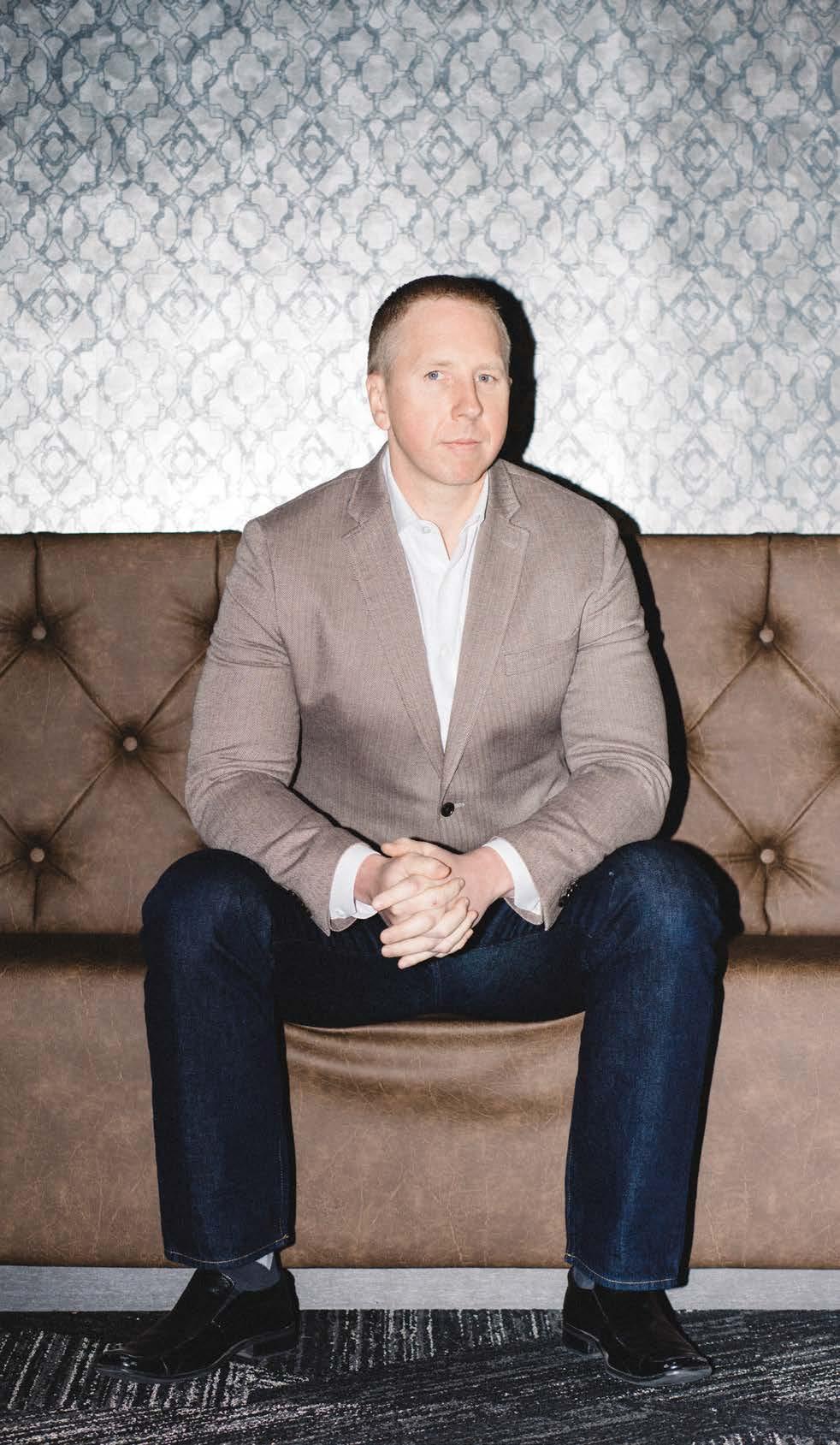
“Not only are you supporting a charity, but you’re also enhancing your own career to further your business and make great connections here in Chicago. And now we have people who are beating on the door to attend our gala.”
Brandt Kucharski
be able to influence our foundation, then branched out from them and targeted marketing communications,” he says. The team focuses on the pipeline and measures the effectiveness of different forms of outreach from e-mails to one-on-one meetings. Then, they evaluate touch points guided by a key performance indicator (KPI) mentality. This includes measuring web traffic and analyzing the mind-set of donors. “How do we get people who gave $50 last year to give $100 this year? How do we get people to give $10 a month in a new campaign, and what strategy works?” he says.
Yet the corporate controller ultimately judges the foundation’s success by how many families it touches. Holiday Heroes now partners with numerous hospitals, businesses, celebrities, and more to bring smiles to more than 2,500 kids facing chronic illnesses, as well as to their families who often travel long distances for each hospital visit. “It cripples the family, and what we’re really trying to do is give them some joy, hope, and love in the moment they need it,” he says. “Maybe it’s just something like a home-cooked meal for a family that lives on fast food or playing with these kids—to make them feel like kids—is really amazing.”
The foundation hosts themed hospital parties, creates craft kits, organizes toy drives, establishes fundraising

Brandt Kucharski and GrubHub!

Brandt Kucharski earned his master’s degree in accounting from Northern Illinois University. He worked as a certified public accountant for Crowe Horwath and Sagin before joining Grubhub as its controller. Kucharski was part of the executive team that helped lead Grubhub’s successful IPO in April 2014. He formed the board of the Holiday Heroes Foundation in 2011 as executive chairman and is also on the board of the Chicago Leadership Alliance and ReaLync. He loves to play beach volleyball but admits that he used to play it more often prior to the birth of his daughter. Still, he looks forward to each summer in Chicago to play at the city’s beaches.
partnership events like Midwest Fashion Week, and more to ease the heavy burdens endured by families with hospitalized children. All of these activities aim to reduce each child’s pain and stress while also promoting healthy social development and recovery.
Kucharski passionately leverages his controller experience as a major business partner to benefit children in need of comfort. “I’m energetic about what we do at the foundation, and I can’t hide how much I love the work,” he says. “At Grubhub, too, my employees know that I care and value them, and I’m here to grow their careers and advance the company in any way possible.”
Kucharski sees coinciding trajectories for the public company and the nonprofit organization; both high-growth futures excite him. He predicts Grubhub will continue to mature in the industry, tapping into the 95 percent of the market that still calls on the phone to order takeout, which culminates in a total addressable market of more than $200 billion in the online food delivery space in the United States. As for Holiday Heroes, he has his sights set on expanding the nonprofit foundation nationwide in the coming years. He credits both teams for their tremendous support and vision within untapped markets
Looking back, Kucharski says he’s glad that he wasn’t afraid to take a gamble. When he joined Grubhub, online ordering was in its nascency and the company had the task of helping to define the industry as it grew and refined its own ultimately successful business model. Kucharski saw a lot of promise in the company and advises other business leaders to take the risk if they connect to the mission and believe in its potential—just as he did with Holiday Heroes. “When I first met the two girls, no one else was doing what they were doing in real time,” Kucharski says. “There are other great foundations that raise money for cancer research or to cure leukemia, but that process takes a long time and it’s been ongoing for 40–50 years. These girls were having a direct impact and helping children in the moment, and we’re continuing to make a difference by showing love and support every day.”
BDO is proud to serve as Grubhub’s preferred financial due diligence provider on several acquisitions and wish them continued success. Providing end-to-end M&A advisory services adding value to the outcome of each transaction, BDO’s Transaction Advisory Services practice was recently ranked the fourth most active provider of diligence services in the United States based on deal volume reported by MergerMarket, as well as named the Due Diligence Provider of the Year at the British PE Awards.
“This

Transaction Advisory Services at BDO
Every transaction comes with a unique set of opportunities, potential pitfalls, and strategic objectives. From due diligence through post acquisition integration, BDO’s partner-led teams provide integrated, specially tailored services at every stage of the transaction cycle, across the full spectrum of acquisition and disposition needs.
Jerry Dentinger
Partner – Transaction Advisory Services
312-239-9191 / jdentinger@bdo.com
Accountants and Consultants
www.bdo.com
Ryan McCaslin
Managing Director – Transaction Advisory Services
312-233-1872 / rmccaslin@bdo.com
Darrell Riekena keeps IT innovations flowing at Republic National Distributing Company
an enterprising spirit
by Eddie O’Neill
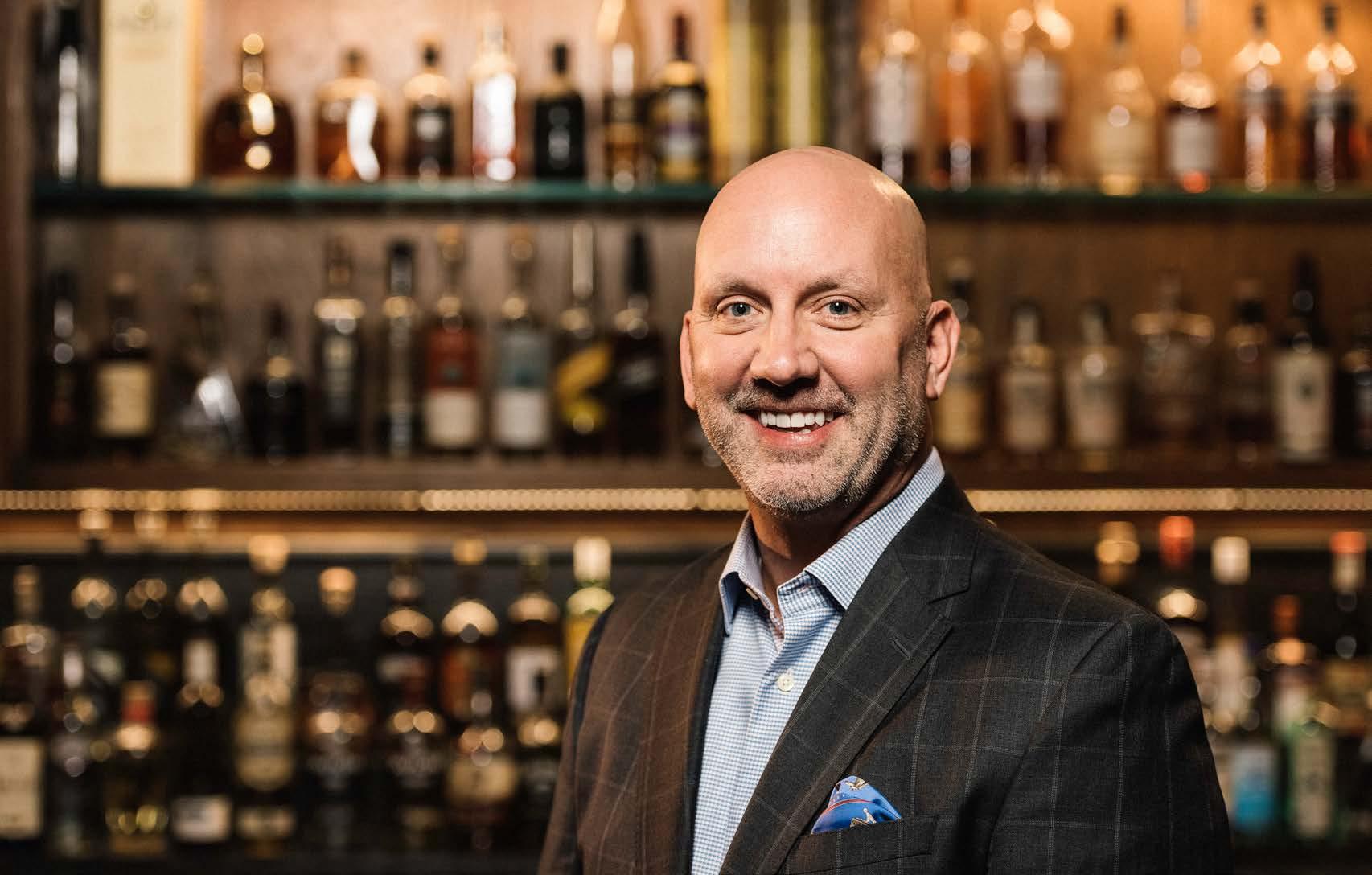
Matthew Cooper
When Darrell Riekena joined Republic National Distributing Company (RNDC) as chief information officer, he inherited an expansive landscape of technology architectures and applications. “Due to the company’s complex environment of growing up through mergers and acquisitions combined with a focus to serve customers in many markets, RNDC had a lot of different technological things going on,” he says of his challenges at the nation’s secondlargest wholesale wine and spirits distributor.
Darrell Riekena Chief Information Officer Republic National Distributing Company
“It was a tall order just to keep up with the status quo because we had so many technologies running on different platforms and systems,” he says.
Riekena, however, isn’t about status quo; he’s about creating breakthrough solutions. The Wisconsin native started out as a computer programmer and climbed his way up the ranks of IT departments at major retailers. His career has focused on finding new approaches for companies going through major transformations, from an organizational standpoint and a technology perspective.
He had previously worked with companies such as JCPenney, Limited Brands, Kroger, Target, and National DCP to implement enterprise solutions, deliver information and analytics platforms, and provide simplified, efficient operating models offered by IT shared-services models. In addition, he had worked on merging multiple companies, incubating new brands and concepts, relocating a corporate office, and building and developing a new team.
Over the past year, Riekena’s work at RNDC has been focused on simplifying a very complex IT model. Oracle’s suite of solutions has been essential for that process. “Instead of having to go to multiple technology providers for answers, Oracle is a common platform of solutions that meets the needs of different functional elements of your business,” he says.
In addition to Oracle, Deloitte was invaluable in the transformation. “Deloitte has been a great partner based on its ability to introduce leading business and technology practices, its depth of implementation experience, and its commitment to support RNDC for the long term,” he says. “It’s been going well in rolling out these changes to RNDC’s various markets.”
Riekena leads an IT team of more than seventy-five people, in addition to overseeing numerous contractors and consultants. Unlike other corporations,
RNDC does not have a true corporate office. Instead, the privately owned family business, which traces its roots to the era before Prohibition, has offices across twenty-two states and the District of Columbia. RNDC employs more than nine thousand associates. Riekena himself is based in Atlanta, one of RNDC’s Centers of Excellence. “It works out well having our associates close to several of the major markets we do business in,” he says.
RNDC values its role in the three-tier system of alcohol distribution established in the United States after the repeal of Prohibition. The three tiers are producers, distributors, and retailers, and the basic structure of the system is that alcoholic beverage producers may sell their products only to wholesale distributors who then may sell to retailers. Only retailers may sell to consumers.
“We’re a company built on strong relationships,” Riekena says. “Family is one of our core values, and this is evident in the way our associates conduct their business every day and how we value our customers.”
Among the RNDC family, 39 percent are millennials. “It’s a good thing,” Riekena says. “They come on board hungry for new technology and innovation. In fact, it’s expected. They’re asking, ‘How can I apply that to some aspect of our business?’ They’re constantly evaluating what we are doing and asking how we can do it better.”
The millennial workforce is also a generation that’s action-oriented. “This is a group that knows how to meet and get things done without having everyone on the team in the same room,” Riekena says. “They’re mobile and want to use collaboration tools such as web-conferencing or videos.”
However, Riekena says that his young workforce’s enthusiasm needs to be checked at times. They occasionally need to be reminded to take a step back, reexamine, and reassure themselves that they are on the right path.
“We have to continually evaluate how much change RNDC can digest at any one time,” he says. “We have to ask how we are going to make that innovation or idea stick and remain consistent across our organization.”
Technology has become interwoven into professional and personal daily life. Simplification is one of Riekena’s mantras. He notes that for technology investments to generate value, they need to be accessible and usable
“When you go about a change of this magnitude, it’s difficult. However, RNDC sees that,
by
going to an enterprise approach, we can perform better by choosing best practices of all of our markets. There is a desire to use a better technology platform as an enabler to continue evolving and to become more agile across the company.”
Darrell Riekena
and serve a purpose. The technology investments led by Riekena increase transparency of information at RNDC to improve personal and organizational performance while enhancing customer experiences.
Although he has served as RNDC’s IT chief for less than a year, Riekena has been impressed with the company’s adaptability and commitment to improvement.
“RNDC is open and willing to try change, and when you go about a change of this magnitude, it’s difficult,” he says. “However, RNDC sees that, by going to an enterprise approach, we can perform better by choosing best practices of all of our markets. There is a desire to use a better technology platform as an enabler to continue evolving and to become more agile across the company.”
While he and his team continue to adapt and finetune the Oracle platform, they are looking for technology solutions in other areas as well. For example, the team is working on how to better use real-time data, analytic functions, and automation in RNDC’s distribution centers to improve the efficiency in selecting and filling orders. They’re even looking at virtual reality training scenarios for employees.
“When you go about change of this magnitude, it’s difficult for everyone,” Riekena says. “But RNDC sees that by going to an enterprise approach, we can leverage the best practices of all of our markets and apply them to the entire organization. There is a willingness here to get to a better technology platform, to continue to evolve, and to become even more agile.”


a recipe for change
Alicia Howell and her accounting employees are always looking for ways to improve efficiency and help grow 7-Eleven’s convenience store sales and profits
by Russ Gager
Alicia Howell VP, Controller 7-Eleven
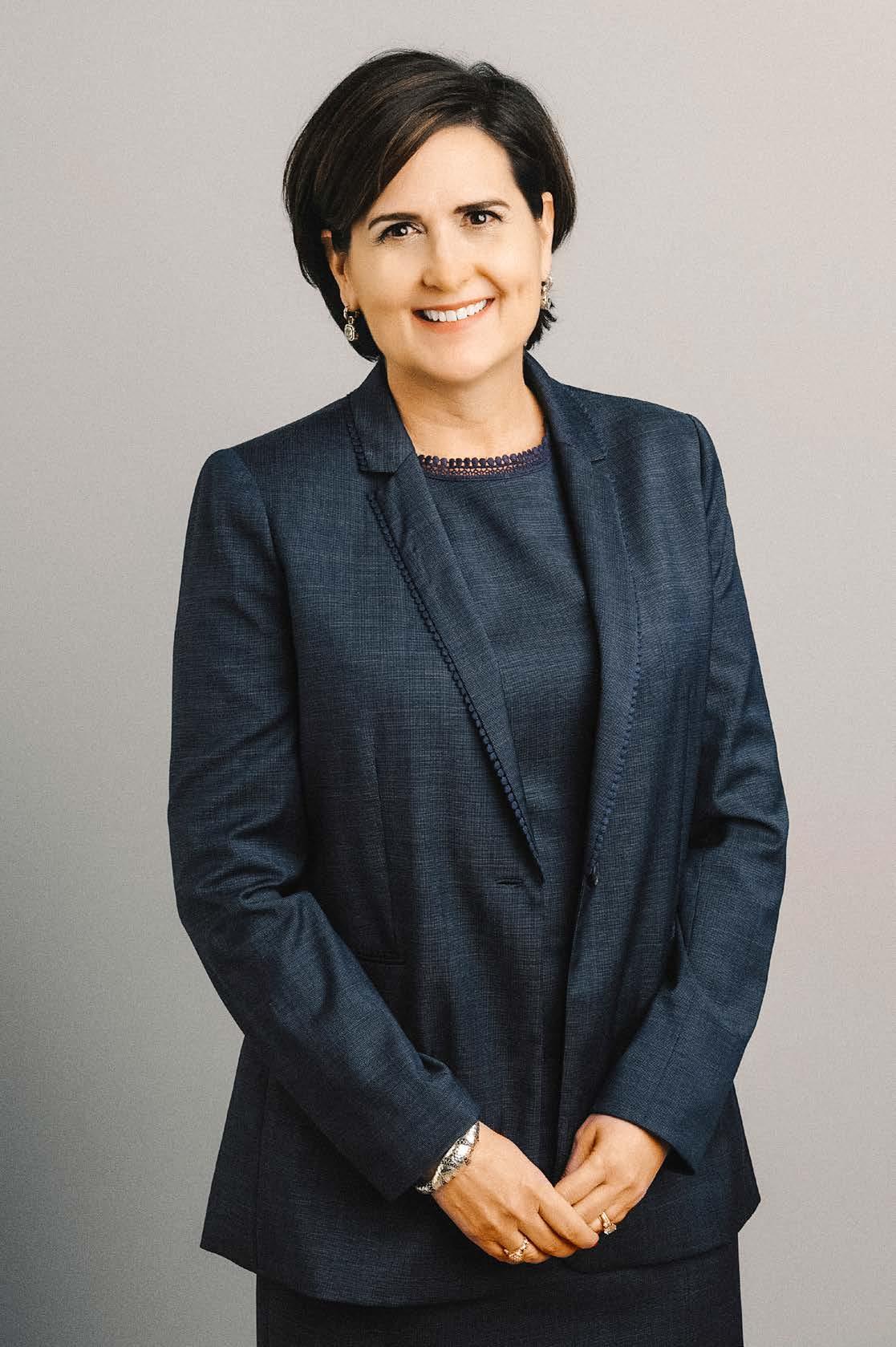
Retail—like most business—is a numbers game. But considering the thin margins in which retailers operate, accurate accounting is crucial. “Margin is very important,” says Alicia Howell, vice president and controller for 7-Eleven Inc. “If you’re not paying attention to your financial statements in any industry, I’m not sure how you would analyze results and make future decisions about your business.”
Howell heads up about a 450-person accounting department at 7-Eleven that touches every aspect of the organization. It handles all of 7-Eleven’s accounting, as well as its financial reporting, corporate accounting, and property and lease accounting in the United States and Canada. The department does store-level bookkeeping and performs all processing for the company’s more than nine thousand company-owned or franchised stores in the United States and Canada under the 7-Eleven name. Approximately 90 percent of the company’s US locations are franchises. In addition to store-level bookkeeping, Howell’s department is responsible for 7-Eleven’s customer service call center, accounting for the company-owned fuel business, the company’s supply chain, and processing royalties from international licensees, excluding Japan, where 7-Eleven’s parent company is located.
To achieve all this, the department has developed experts who have technical skills from many different areas of accounting, from public to retail accounting. There are team members whose expertise comes from their long tenures with the company. “I have people on my team who have been at the company for more than thirty years who are long-time 7-Eleven subject-matter experts,” Howell says.
To make use of that expertise, Howell and her team participate on steering committees for 7-Eleven’s several enterprise projects. One such project is focused on replacing the company’s legacy mainframe computer accounting system. Research for the transformational, multiyear project started in 2013, and implementation started in 2015. The transition to the new system is expected to be complete in the next few years.
“We have over two hundred resources on the project, and ultimately, the goal of it is to become more efficient, bring our system up to date, get off the legacy mainframe, streamline reports to achieve back-office efficiency, and simplify store processes,” Howell explains. “We work with franchisees to identify areas that will ultimately make it easier for stores to operate and take a lot of that back-office bureaucracy out of the system.”
Another interesting new tech development that Howell will help oversee is the company’s investigation into digital ordering and delivery of merchandise
to customers. Although it might not seem like an obvious accounting-based project, Howell will need to be involved. “My team will get involved with how we account for delivery services,” she explains. “Accounting is not so boring anymore, especially when you get into the digital world.”
To deliver more than the numbers, Howell hires individuals with backgrounds in data analytics and IT. Howell, however, also focuses on soft skills such as communication and presentation. “Those skills have become more and more important as we work with operators and franchisees,” she says.
Another unique difference between Howell’s team and other accounting teams comes from the fact that 7-Eleven keeps its books on a public entity basis, even though it is a private company and does not report to any public regulator in the United States. However, 7-Eleven’s parent company is subject to financial regulations in Japan. “It’s important for me and the board to maintain a strong control environment and an effective internal control over financial reporting,” Howell says.
As a way to keep that all on track, Howell has developed a personal leadership philosophy she calls T3: technical excellence, timely execution, and team environment. “Accounting can’t be a roadblock,” she says. “We identify accounting pain points and partner with operations to improve them. When I have to say no, I also have to provide alternatives and other options to achieve results. Ultimately, we win when our franchisees win.”
As a leader, Howell strives on a daily basis to have conversations with employees and remain receptive to
HANDS-ON RETAILING
Prior to reaching her current role at 7-Eleven in 2007, Alicia Howell was part-owner of a convenience store that she helped run on the weekends while working full-time in public accounting. In addition to giving her an advantage in her work with her new employer, the experience taught Howell a lot about the struggles of smallbusiness owners. “It really helped develop me overall as a leader and as a person,” she says.
“We identify accounting pain points and partner with operations to improve them. When I have to say no, I also have to provide alternatives and other options to achieve results. Ultimately, we win when our franchisees win.”
Alicia Howell
their ideas. Her leadership style is flexible, making sure to be approachable whether the employee is introverted or extroverted. She also believes in promoting from within. Of her nine directors, five were moved up from other positions in the department. “How we work and operate within 7-Eleven is extremely important and is occasionally more valuable than other types of experiences,” she says.
In addition to keeping a close eye on her own team, Howell and the accounting department are always seeking new efficiencies, often by automating processes. In essence, it all comes down to constantly being on the lookout for the opportunity to make positive change. “Our leadership at 7-Eleven is always challenging the status quo and open to changes,” she says. “We are open to the future of innovation and automation in accounting. We have to be able to maintain efficiency and help the company grow.”

a perfectly balanced career
After a winding career path, Peter Hanson strikes the right work/life balance at Five Guys
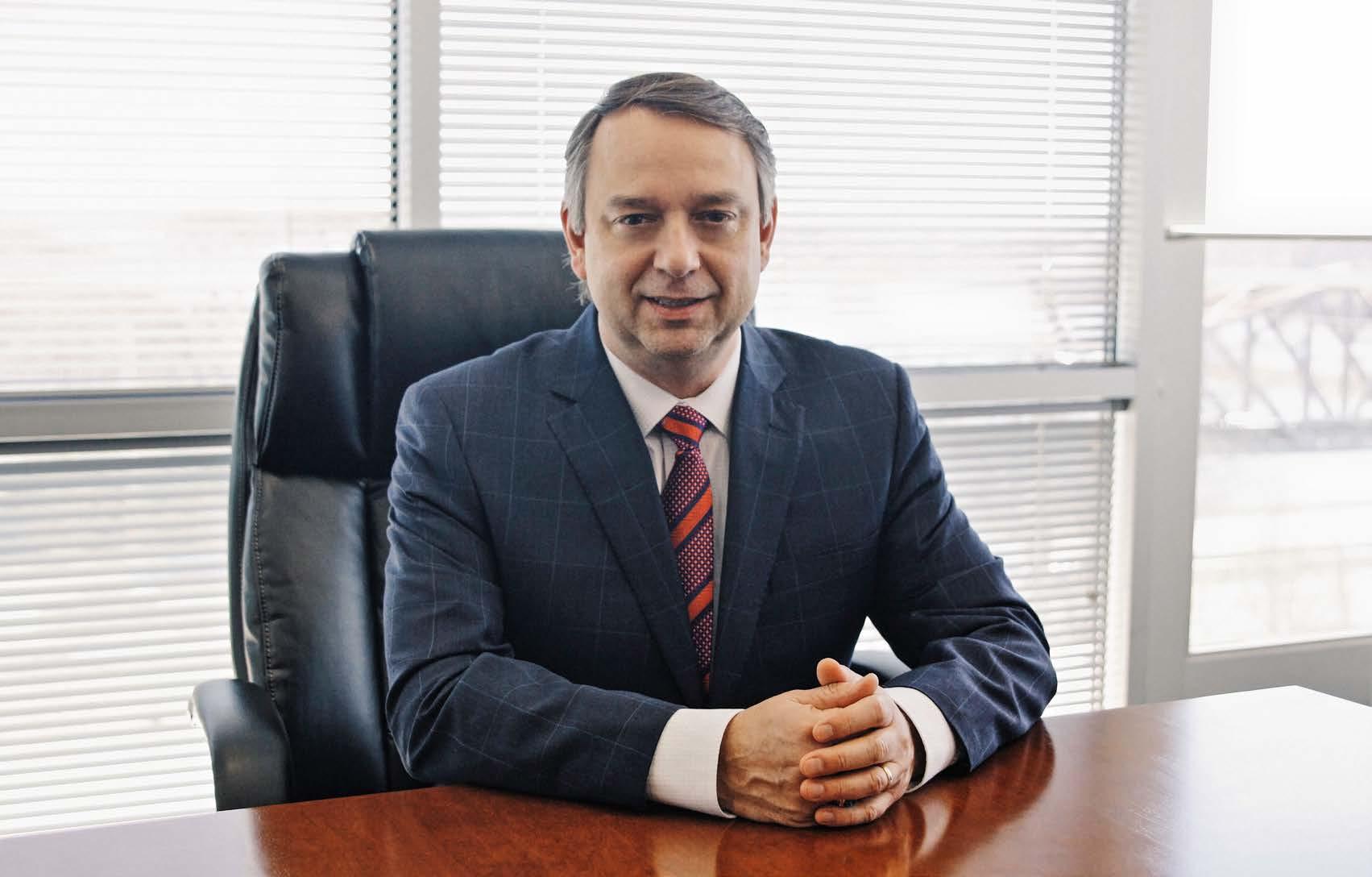
by Jonas Weir
Kenneth Westling
In September 2007, Peter Hanson was in the process of adopting his daughter from Guatemala. During this process, Hanson—who had just started as the CFO of burger chain Five Guys—knew that he would only be given a week’s notice to fly to Guatemala and pick her up.
Peter Hanson CFO
Five Guys
“I didn’t know when that time would be, so I did explain that to the family, the Murrell family, who owns Five Guys,” Hanson says. “They said they had no problem. That’s where they talked about how important it is to have a life with family and work balanced.”
Now, Hanson is celebrating his ten-year anniversary with the company. As an older father who doesn’t want to miss out on raising his daughter, he says he appreciates the work/life balance that Five Guys and the Murrell family promote, and he extends that sentiment to his team members. He also says that it’s one of the benefits of working for a privately owned company.
“When you work for a public organization and you’re reporting to shareholders, they don’t care about your work/life balance,” Hanson says. “They care about profitability and their dividends and things like that. The Murrells, of course, want to be profitable and make money, but just as long as we’re always having fun.”
Hanson hasn’t always had the benefit of a good work/life balance, though. When he was in college, his career path was disrupted by a family tragedy, which tipped the scale in the direction of life and family.
When he was eighteen years old, Hanson was studying computer science, learning programming languages such COBOL, RPG 2, and more, when his father died suddenly. In turn, he left school, moved back home, and began to work to help support his mother and younger sister, who was just eight years old at the time. Finally, when he was looking to return to higher education, he realized that his previous career plan was not going to work.
“My dad was a cameraman,” he says. “I was supposed to go to school for four years and then go back to where he worked, the union in New York City, and become a cameraman myself. After he passed away, my mom didn’t want me to do that.”
Wells Fargo
congratulates Peter Hanson, CFO of Five Guys Enterprises, LLC, for his passion and commitment to excellence.
We’re honored to work with him and wish him continued success.
To help determine what he should do, Hanson sat down with an uncle who helped guide him in his decision. Together, they looked at his skills, his grades, and what he wanted to do. At twenty-three years old, Hanson decided to attend school again—this time to study accounting. Two years later, he graduated with a bachelor’s in accounting from George Mason University and went on to pass the CPA exam.
Hanson began his career as an accountant at marketing data and analytics company ComScore Inc., and a few years later, he accepted the position of corporate controller at Comstock Homebuilding Companies Inc., now known as Comstock Holding Companies Inc. There, his work/life balance shifted again, this time back in the direction of work.
He began at Comstock in November 2003, and in March of 2004, the company’s president called Hanson into his office and let him know that the company would be going public, all while it was going through an audit—and the staff beneath Hanson was not ready for the herculean task at hand. “It was gruesome,” Hanson says.
For the next six months, Hanson worked overtime, spending countless hours at the office to get the company’s accounting straight in order to go public until the company filed its S1 in September and finally got listed on NASDAQ on December 14, 2004. Having never taken a company public before, Hanson saw the value in the process, despite the overload of work.
“It was a great work experience, even though it was grueling,” he says. “It was like being back in college and you’re pulling allnighters. I can’t tell you how many times I slept at the office and worked weekends. I got letters from my homeowner’s association saying that my lawn needed to be cut. I was neglecting my property, so the company would take care of that for me and my family. But it was a great experience. There’s nothing like going public and being right in the middle of it or being an intricate part of that process. It was rewarding.”

In 2007, though, Hanson began to find the work at Comstock less rewarding, and he began seeking a new challenge. He wasn’t quite sure what he wanted to do, though. He interviewed with a similar company, Beazer Homes, and even thought about opening his own accounting firm. Then, a friend of his let him know about Five Guys. This friend was assisting Five Guys’ owners and executive management team in recruiting a CFO. But Hanson already knew about the company.
“I was a customer before I was an employee,” he says. “When you’re working with auditors, there can be a lot of late nights. You’re occasionally bringing in food for everybody. They would bring in Five Guys every now and then, and I just craved that.”
Hanson liked the concept behind the restaurant chain and was intrigued, so he chose to look into it some more while he went through the interview process at Beazer. When he met the Five Guys’ general counsel for an interview, Hanson was surprised to meet him at a warehouse that was being converted from the Five Guys bakery to offices.
At the end of the day, he began to lean more toward the position at Beazer because of its proximity to his home. So, Hanson contacted his friend who had introduced him to Five Guys and let him know he wasn’t going to take the CFO position, citing how far away the office was from his home. The friend responded with another proposition: Hanson only had to come in on Tuesdays. Although he doubted he could efficiently run an accounting department with only one day a week in the office, the idea piqued his interest.
“I said, ‘Alright, I’ll give it a shot, and if I don’t like it in six months, I can always find another job or go back to what I was doing in the home-building industry,’’ he says. “I don’t regret the fact that I accepted the position at Five Guys, and here I am, ten years later.”
Over the past ten years, Hanson has overseen the accounting department while the company has grown exponentially. Even with the economic recession of 2008, Five Guys has grown by huge numbers every year Hanson has served as CFO. In fact, from 2006 to 2016, the company grew about 4,727 percent in terms of revenue growth and 1,150 percent in store growth. By 2016, the company had a total revenue of $531.3 million, with systemwide sales in excess of $1.5 billion. Today there are more than 1,400 stores. Hanson even got to oversee the company’s international expansion, which is something he’d never done before and found exciting. Throughout all of this, Hanson has had his fair share of success, but he couldn’t have accomplished it without the support and vision of the Murrell family.
“Once they get to know you after a year or two and they trust you, especially overseeing the company’s finances and taking care of all the other departments, such as IT, risk management, and stuff like that, they build confidence in you,” Hanson explains. “They always allotted me whatever time I needed to spend with my family as long as I was getting my job done.”
a taste for talent
by Eddie O’Neill
Nicky Gibson puts people first at restaurant chain Zoës Kitchen
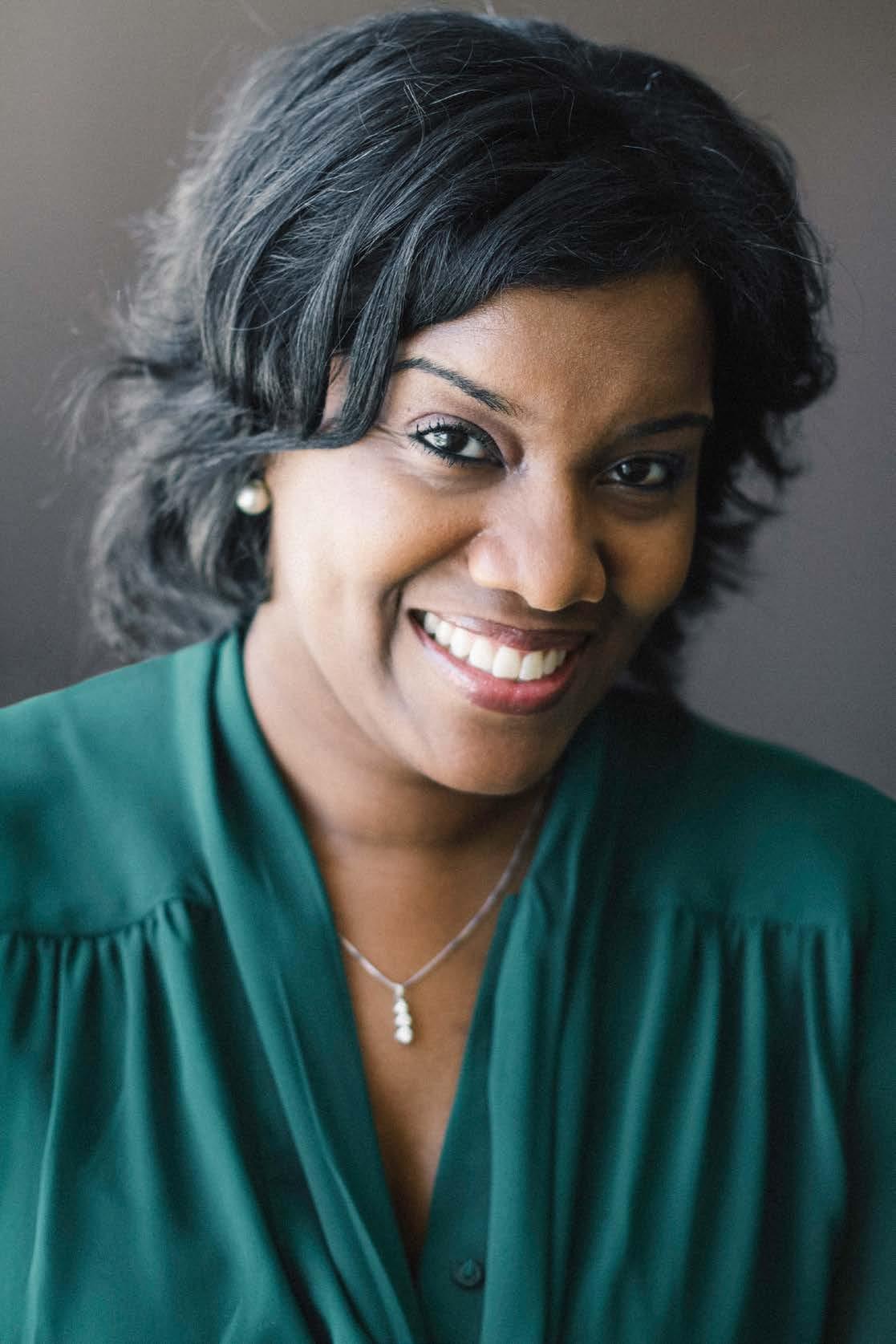
Nicky Gibson Director of Talent
Zoës Kitchen
As a student at Mississippi State University in the mid-1990s, Nicky Gibson had her eyes set on a career as a chemical engineer. After graduation, she worked as a sales engineer in the petroleum specialties division at ExxonMobil. She found it satisfying but not sufficient; she was searching for more.
“I’ve always had a personal philosophy to strive to make a difference in people’s lives,” she says. “The sales piece of the job just wasn’t filling my bucket.”
As Gibson tells the story, she was in the right place at the right time on a couple of occasions and had the opportunity to do some professional, career-recruiting work. She fell in love with this challenge.
“I jumped into that role as a recruiter and as an HR professional. I learned everything I could,” she recalls. And she hasn’t looked back.
Since 2014, Gibson has been director of talent acquisition at Zoës Kitchen, a fast-casual Mediterranean restaurant with more than two hundred locations, mainly across the southern United States. The restaurant prides itself on offering fresh, simple, and tasty food. Beyond the menu, Zoës promotes the Mediterranean lifestyle—where one lives every day to the fullest and emphasizes time spent with family and friends.
“I remember meeting with the company’s CEO, Kevin Miles,” Gibson says. “He told me that Zoës puts people first, and that really resonated with me.” In addition, Zoës mission to “deliver goodness from the inside out” hooked her.
“Although that might sound hokey and weird, as I thought about it, it made sense,” she says. “It means that everything we do at Zoës, from an e-mail to a smile, needs to deliver goodness. That’s certainly what I try to do every day, and I encourage my team to do the same.”
From Zoës home office in Plano, Texas, Gibson oversees two field recruiters and one home-office recruiter. She explains that the engineering skills she learned in college haven’t gone to waste. In the few years she’s been with the company, she’s streamlined and restructured Zoës talent-acquisition system. In doing so, she has saved the restaurant hundreds of thousands of dollars.
When she came on board, Gibson says that Zoës had some recruitment systems, but they were haphazard. In fact, the restaurant was using a recruiting agency to hire for basic, general-management positions. Zoës was spending more than
$200,000 a year to hire people who would be earning $40,000 to $45,000 a year.
“It didn’t make sense,” she says. “I suggested that we create a real, high-powered recruiting team with the skill set to go find these people and in turn reduce our agency costs.”
This involved some department restructuring and filling recruiting spots with people who were excited about the brand.
“One of my strengths is process improvement or process re-engineering,” Gibson says. “I’m big on establishing formulas and sticking to them. I always tell my team, ‘If you execute the process the same way every time, you will get an end result, which is hiring the best person for the job.’”
This approach has worked. Gibson says that this past year Zoës did not spend a dime on agency costs, and that this year the company does not even have a budget for a recruiting agency—something Gibson is particularly proud of. “I love recruiting,” she says. “If people are true recruiting professionals, they should be able to find people anywhere. We shouldn’t have to use an agency.”
Gibson and her team aren’t content with good managers; they want great ones.
“I love recruiting. If people are true recruiting professionals, they should be able to find people anywhere. We shouldn’t have to use an agency.”
Nicky Gibson
She is excited about the company’s new employee-assessment system that’s being considered. It will be designed to be interactive and to have capabilities for video-based evaluations and gamification that will replace an antiquated, one-hundred-question paper assessment. This technology can evaluate not only a person’s answers to survey questions, but it can also analyze an individual’s gestures and voice inflections, among other things.
“I’m excited because I think it’s going to be a game changer for us,” Gibson says. “It will help my recruiters assess talent better on the
front end of the process and make our system more efficient.”
The majority of Zoës Kitchen’s employees are hourly workers, but that doesn’t mean that working for the company has to be just another restaurant job. In fact, Gibson is adamant that if Zoës wants good talent on every level, the company has to get people excited about being a part of the organization’s brand and culture.
For Gibson, that process starts from the first click on the career page at the Zoës website. “I’m working on putting our culture and values front and center,” she explains. “Potential talent should know first and foremost who we are, what we do, and what we have to offer beyond just shifts and benefits. We want to sell you on the brand. This is why you want to come to work with us at Zoës.” The new career web page made its debut in July 2017.
Gibson also realizes that not every hourly employee at the restaurant is going to make a career out of Zoës. However, she wants whatever length of time people spend working at the restaurant to be a positive experience.
“If you leave us, I want you to say, ‘That was the best job, I ever had,’” Gibson says. And that’s the Zoës way.



Recruit and Hire Hourly talent
Anywhere
fuel and family
Cindi Summers helps support Casey’s General Stores’ vision of being much more than just convenience stores
by Eddie O’Neill
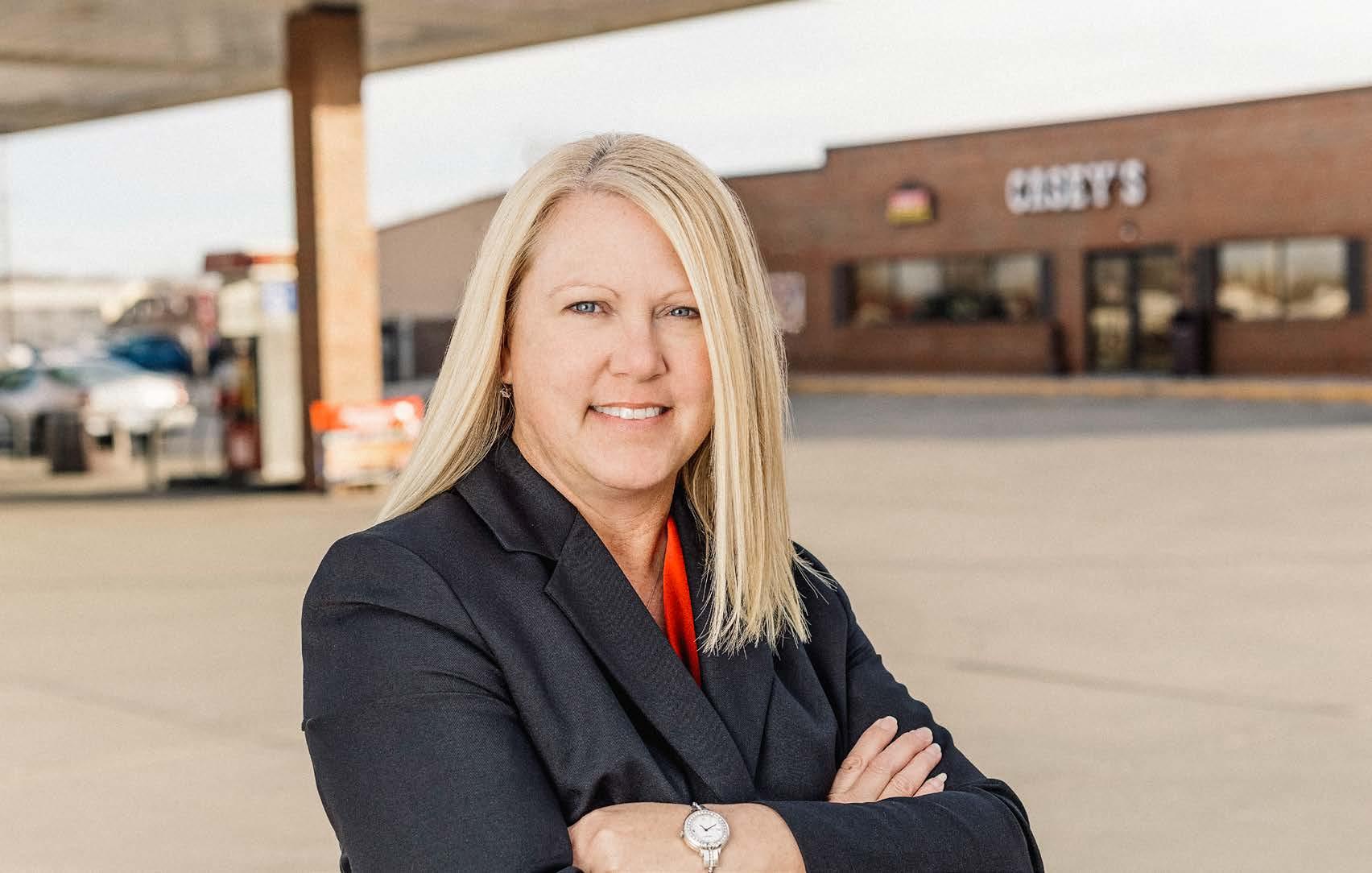
Kevin Barber
This past year was one of the most difficult in Cindi Summers’s career. The senior vice president of human resources for Casey’s General Stores was part of a team responsible for finding a new HR information system. The project would impact Casey’s thirty-six thousand employees and its two thousand gas station/convenience stores scattered across fifteen states.
Cindi Summers SVP, Human Resources
Casey’s General Stores
From its headquarters in Ankeny, Iowa, Casey’s was using a patchwork of independent, disconnected computer software systems in its human resources and payroll departments. Computer programmers were in charge of interfacing systems and producing spreadsheets and data reports. Because of this antiquated system, Summers says that reports and vital data were not current or they would arrive just before a department deadline. Casey’s method of hiring employees was equally outdated. They mostly used a paper application system until September 2016.
“An applicant typically visited one of our stores to fill out an application the old-fashioned way,” Summers says. “We knew we needed a system more robust that would handle our growth.”
Summers was part of a task force assigned to purchase a new system that would be a one-stop shop for employees and managers seeking to access both personal and company-wide data.
“It was a very stressful and daunting project,” she says. “It took us a year to find a new system that would fit our needs. It involved countless hours from the HR, payroll, and IT departments.” However, Summers notes that those long, stressful days and nights a year ago have paid off.
“Now all of our employees have their own dashboard where they can see their schedules, pay stubs, and company announcements,” she says. “Managers can now get real-time data on their employees’ hours during the week. They can adjust to avoid unnecessary expenses, such as incurring overtime or being overstaffed in their stores.”







Although such data did exist before the new HR system was rolled out in the fall of 2016, accessing and making use of that information had been a complex, timeconsuming chore. “Now, managers can spend that time on other critical business in their stores,” she says.
In addition to paving the way for Casey’s future by implementing new HR systems, Summers is also championing Casey’s legacy.
Casey’s was founded in 1958 in Des Moines, Iowa, by Don Lamberti, who ran a small convenience store. A friend of his, Kurvin C. “K.C.” Fish, a gasoline salesman, encouraged Lamberti to purchase a gas station in nearby Boone, Iowa. Lamberti followed his friend’s advice, and the concept of a filling station with a general store was born. The store was named Casey’s after the initials of his good friend. The organization’s close-knit spirit has continued ever since.
“I grew up on Casey’s,” Summers says. Her grandmother worked at the Casey’s in Marshalltown, Iowa, and Summers can remember stopping by the store after school to get her cheese-bread and doughnut fix. It’s no surprise then that one of the company’s slogans—“A convenience store and a whole lot more”—hits particularly close to home for Summers.
Moreover, Casey’s operates 57 percent of its stores in towns with populations of fewer than 5,000 people. “We have a lot of family values here,” Summers says. “Don Lamberti’s son sits on our board of directors, and his grandkids came to our daycare. For a publicly held company, I’ve never seen family ideals so woven throughout the entire organization.”
Summers also says that for many of Casey’s employees, this is more than just a convenience store job. The company, she says, has a career path for those who work hard and are good at relating to customers. “We just have a lot of people here who care, and that’s really what keeps me going,” Summers says.
The Family Tree
As for her activities outside the office, Cindi Summers is a genealogy buff. Her bookshelves are full of thick books and binders related to the topic. Her father’s side of the family has deep roots planted in the central Missouri area.
“Every so often, my husband and I like to take our kids down to the Sedalia and Bevier, Missouri, area, and we go traipsing through old cemeteries,” she says. “I want my kids to know and carry on our family story.”
to help everyone there,” Summers says. “I was good at what I did and was invited to be a part of HR projects. Human resources quickly seemed really rewarding to me.”
In HR, Summer has found her place. She has gone beyond the department’s typical duties and discovered the true value in HR. “Done right, human resources goes beyond simply managing staffing needs and administering payroll,” she says. “It’s about building relationships and being there for your employees and managers when they need you.”


When work is something you look forward to, the alarm clock gets a whole lot friendlier. Because when your employees look forward to their jobs, what they produce can be truly inspiring. ADP’s workforce solutions help you craft a more engaged and efficient workplace. Visit adp.com/hellowork and see how we can provide a more human resource for your business.






Although she loves the work, Summers didn’t set out to become a career HR manager. In fact, when she took a career and personality survey in high school, it showed her as being best suited to operating a cement mixer or to becoming a paralegal. In college, she did obtain a paralegal degree and then took an entry-level job with an insurance company that paid death and disability claims.
“I was captivated by the stories that I heard in that job, and I felt that I wanted
Her struggles these days involve keeping up with the myriad of ever-changing compliance and workforce regulations. These include changes in federal, state, and even local laws and rules. However, the benefits of working for a big company with small-town values more than compensates for the complex work of staying on top of workforce compliance issues.
Summers’s workload this year is lighter with the new HR system up and running. She isn’t resting on her laurels, though; she and her team still have a few more modules to launch. Then, there is the ongoing job of making sure that all systems run smoothly and that they help keep the Casey’s family united and productive.
STRATEGY
Nonstop Service to Data Rights
A legal leader at American Airlines details the strategy behind securing its digital property
Words by JENNY DRAPER Photo by KRISTIN DEITRICH
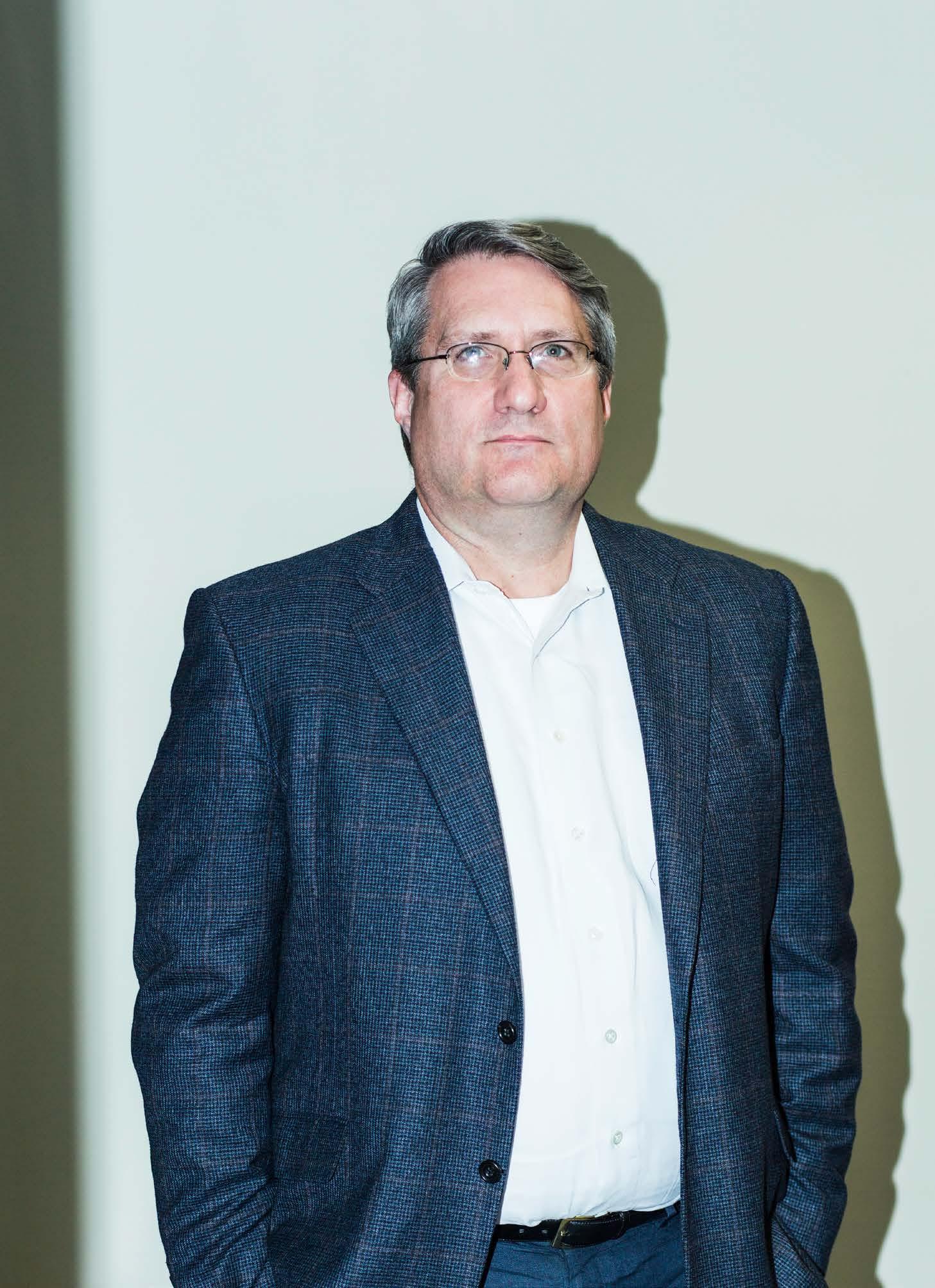
Donald Broadfield
Chief Intellectual Property and Data Counsel
American Airlines Fort Worth, TX
MMore than eighty years ago, several small airlines combined to form what is now the world’s largest airline in the United States, with a fleet of more than 900 that each day operates more than 6,700 flights that carry more than 400,000 passengers. Together with its affiliates, the company serves 350 destinations in more than fifty countries. American operates hubs in Dallas-Fort Worth, Chicago, Miami, Washington, DC, Philadelphia, New York, Los Angeles, Phoenix, and Charlotte, North Carolina. And at American’s headquarters in Fort Worth, Donald Broadfield protects American’s commercial data as chief intellectual property and data counsel.
Broadfield knows maintaining the proprietary nature of American’s commercial data is crucial for the company. For example, flight information is important because it pinpoints what is happening to each aircraft from the minute it pushes back from a gate to the minute it arrives at its destination. “That information is highly valuable, and in particular, arrival times can benefit the company, the passengers, and other companies involved in the passenger’s trip, such as hotels and rental car companies,” he explains. “Similar data received from third parties might be stale as a delayed feed or incomplete. We protect the integrity of American data and provide access to the data to the flight information in a real-time basis.” For example, if a passenger books a midsize car and the rental company has two left on the property, knowing exactly when the flight lands helps coordinate availability to ensure a car is ready when the customer arrives.
Yet, flight data covers only part of the intellectual property landscape over which Broadfield presides. In 2004, American Airlines wanted to drive more business to its website due to booking fees that the company paid to global distribution systems. “At the time, we found that a lot of entities were scraping our information and touting themselves as our agent, even though they weren’t,” he says. To protect its relationship with the passenger and to retain that significant amount of money, the more bookings the company drives to AA.com, the more it saves and the more it’s able to personally interact with its own customers.
That initiative became the cornerstone of Broadfield’s philosophy: just as a person owns his or her personal information, a corporation owns the information it produces. “Data is created by American Airlines every second of every day,” he says. “We’re not talking about the personally identifiable information of an individual. We’re talking about commercial data—goods, services, and our offerings—which is ours and vital to us. So, we take actions to protect it.”
Working with the client, he developed a two-pronged strategy that consists of first attempting to get third-party data scrapers under license as official agents and then litigating against those scrapers who continued to not comply with American’s terms and conditions. “Often the initial gut reaction is that you can’t own commercial data,” Broadfield says. “Well, we believe you can, so we get the courts past that point by showing what we’re doing with it and what we hope to accomplish.” Broadfield, alongside his legal team and outside counsel, pieces together arguments based on common law and intellectual property.
DID YOU KNOW?
American Airlines may offer in-flight movies to its passengers, but it has played its own role on the big screen as well. While historic aviator Charles Lindbergh flew the first American Airlines flight that transported US mail from St. Louis to Chicago in 1926, the airline company continued to establish itself as a national icon throughout cinema. In particular, American Airlines makes appearances in pop culture’s recent history.
In the 1990s, John Hughes’s Home Alone trilogy showcased the airline in several scenes, and it even sponsored the original home video releases. Then, in 2009, American Airlines partnered with Paramount Pictures to feature its aircraft in the film Up in the Air, starring George Clooney and Anna Kendrick. Again, in 2013, American Airlines banded together with Disney to promote the animated comedy Planes The collaboration included the brand’s cameo appearance with the airliner character named Tripp.
Broadfield describes commercial data as the new oil, and almost every company produces its own valuable, yet vulnerable data that’s ripe for the taking by outside companies. He explains that these third-party data brokers often don’t generate data themselves but obtain data elsewhere by scraping another company’s e-mails or using Internet browser cookies to track visitors to the other company’s website. “A company must protect its data against those intrusive kinds of gathering methods,” he says. “Otherwise, it’s going to find that it is less relevant in the marketplace because someone else is controlling the consumer relationship.”
The airline industry itself is the linchpin of the global economy because it facilitates the transportation network of people and cargo around the word. When what’s going on in the world affects an airline, it affects all other industries’ ability to move products or conduct business. Through that lens, commercial data becomes even more important, Broadfield says, especially considering airlines use data to increase operational and economic efficiency.
As for Broadfield, he appreciates how there has never been a dull day within the legal department, where he’s worked for thirteen years. “Within my first thirty days on the job, I was tasked with taking on the intellectual property work, given the challenges it was facing at the time,” he says. “So, my first task was to conduct an audit to determine the lay of American’s intellectual property landscape. In addition to the intellectual property, I am responsible for complex commercial litigation, plus anything with a nexus to that—like distribution, marketing, and social media.” In that role, he strengthened the American Airlines trademark portfolio and litigated and settled suits against Yahoo and Google over branded keyword search terms.
Although he prepares for each day, Broadfield admits that the volatile nature of the airline business means that his daily
BRINKS GILSON & LIONE CONGRATULATES
WE ARE PROUD TO SERVE AS COUNSEL TO DON AND AMERICAN AIRLINES
JEFF










LANDING WHERE HE’S MEANT TO BE
Before opting to go in-house for American Airlines as an antitrust and intellectual property counsel in 2004, Donald Broadfield had been working at the law firm Morgan, Lewis & Bockius in Washington, DC, as an associate. Joining American Airlines was a fullcircle moment for Broadfield, who had worked in the airline industry at Texas Air—the former holding company of Continental, Frontier, People Express, and a few other airlines—before earning his JD from Case Western Reserve University School of Law.
tasks are often unpredictable, including counseling, agreements, risk management, and litigation—the whole gamut within that area of law.
Now, Broadfield oversees about a dozen direct reports, whom he leads through mentorship to help fortify American Airlines’ commercial data future. Looking ahead, he aims to advance an industry standard for commercial data protections and expand it outside the courts into legislation.
“I can see how the arguments I make for commercial data can carry over into the arguments for increased protections on private information as well,” he says. “Everyone thinks of airlines as solely flying aircrafts and transporting passengers, but commercial data is a big aspect of what we distribute every day to our agencies in support of our customers and of our business.”
“Don is exceptional and tireless in his protection of American and its extraordinary brand. We are very proud of his accomplishments and honored to be part of his team.” —Bert Ocariz, Shook, Hardy & Bacon


Easy Rider
Motorcycle enthusiast Mark Rubinoff knows a thing or two about moving from one adventure to the next, and he applies that spirit to Thomas Jefferson University
By PAMELA SORNSON


Mark Rubinoff has been into motorcycles for more than fifteen years. Seven years ago, he bought his first full-size bike, and he’s been taking short trips around Pennsylvania ever since. His longest ride was a sixhour trek to catch an IndyCar race in New York. When he’s not cruising around Philadelphia, Rubinoff can usually be found at Thomas Jefferson University (TJU). He joined the school and its affiliate, Jefferson Health, in 2014 to participate in the medical center’s transition to electronic medical records (EMRs). Rubinoff was brought in to negotiate the licensing and usage terms for all of the elements involved in the project. It was not an insignificant task, considering he started with nothing more than a binder stuffed with hundreds of pages detailing the organization’s digital wish list. In a little more than two years, he was able to bring the center’s ambulatory services online this past January. At the time of publication, he hopes to have launched the inpatient services aspect—a goal originally slated for July 2017.
ENGINEER, TECHNOLOGY EXPERT, LAWYER
As special counsel for technology and intellectual property, Rubinoff is uniquely qualified to bring TJU’s records management into the twenty-first century. With training as an electrical engineer, Rubinoff spent part of his bachelor’s degree programming the punch cards that were then business as usual for computer science studies. “I really loved it,” he recalls. “I even took classes in the summers, if that doesn’t make me sound too geeky.” After he graduated, Rubinoff spent a few years selling computer components and educating customers about the high commercial value of computers and their programming capabilities, then-unknown quantities due to the relative newness of the digital age. Coming from a family of lawyers, Rubinoff also noted that proper licensing and protection of software products were as necessary to their success as their capacities, so he went to law school in pursuit of that skill set. Nine subsequent years of negotiating technology and commercial agreements in the financial sector gave him front-end experience in innovating technology to meet enterprise goals, regardless of their location in any one industrial vertical. The shift in America’s healthcare industry to “all-digital, all the time” opened the door to taking his one-of-a-kind knowledge base to where it was needed most, so he chose TJU and Jefferson Health as his first foray into the healthcare technology field.
NEW TOOLS
Bringing the center online was an immense project. The facility was replacing its existing electronic medical record system, which
Mark Rubinoff Special Counsel for Technology and Intellectual Property
Thomas Jefferson University and Hospital Philadelphia, PA
included more than a hundred separate software agreements. Rubinoff was learning the nuts and bolts of the healthcare industry, a formidable challenge in and of itself. His discussions involved all facets of all of TJU’s existing and future facilities, including product vendors, internal systems management, compliance departments, technology capacities, liabilities, and more. Perhaps most importantly, the end product had to maintain the integrity of and respect for each of TJU’s foundational pillars of excellence: academic, clinical, philanthropic, and innovative. It took five months to negotiate the revised system to a launch position and another eighteen months to achieve an implementation stage. During the process, Rubinoff’s biggest challenge was working with the medical professionals—not because they were difficult, but because some of them had to learn to articulate their needs. Luckily, Rubinoff’s ability to speak the language of the engineers, software designers and developers, and legal staff proved to be a highly valuable shortcut. He negotiated the agreements between the center and its new technology vendors and suppliers, and then he brought those services online to improve all aspects of the facility, including how it delivers, records, and reports its healthcare activities.
KEEPING THINGS SAFE
Rubinoff’s legal background also proved fortuitous regarding technology security and conversations about liability. The center’s comprehensive training ran for months before the launch, ensuring that staff knew from the start what they were doing, which reduced liability risks. The hospital’s in-house technology security team was also intimately involved in developing and rolling out processes from day one, and they worked well with Rubinoff’s deep knowledge of digital security trends and realities. The final EMR system—at least for now—uses a combination
THE LATEST EXPERIMENT
Neither a believer nor a critic, special counsel for technology and intellectual property Mark Rubinoff is currently exploring the foray of Thomas Jefferson University (TJU) into Pennsylvania’s newly legalized medical marijuana industry. As the first health sciences university in the United States to provide research and support for medical marijuana, TJU will offer innovative educational and academic resources about the herb and its effect on overall health. Rubinoff’s first concern is establishing the criteria and training for the certifications needed for Pennsylvania physicians to dispense the drug, yet another new venture on the horizon.
of on-premises and cloud configurations to facilitate, protect, and store the thousands of digital interactions that occur at the school and health center every day.
Rubinoff is aware that digital vulnerabilities and their subsequent liabilities are a constant threat. Accordingly, all large data-sharing projects go through him first so that he can vet for access, ancillary usage rights, and other licensing and liability challenges. His team of more than fifteen lawyers focuses on the center’s other legal oversight requirements, including patenting of in-house innovations, human resources, and regulatory compliances, among others.
NEW HORIZONS
In addition to the in-house advancements, Rubinoff is always on the lookout for new technologies, services, and other tools to enhance the medical facility’s capacity to serve its community. He sees the user experience as an emerging element of the EMR system and predicts that artificial intelligence will play a pivotal role in delivering future health services; he expects to be making deals for those services sooner rather than later.
A self-described renaissance man, Rubinoff enjoys the flexibility and adventure of his position at Thomas Jefferson University – Jefferson Health and is eager to explore new technical and medical trends on the horizon. In the meantime, he’s also trying to schedule a week-long junket on his newest motorbike. From behind those handlebars, he’s eager to finally explore the expanse of America’s wide horizons, too.
Cozen O’Connor provides comprehensive IP portfolio counseling and guides clients from conception to issuance to enforcement. We represent corporate clients from startups to multinational companies and handle all types of intellectual property—patents, trademarks, trade names, domain names, service marks, trade dress, copyrights, trade secrets, and rights of publicity and privacy.
Camille M. Miller (215) 665-7273
cmiller@cozen.com
Kyle Vos Strache (215) 665-2747
kvosstrache@cozen.com
One Liberty Place 1650 Market Street | Suite 2800 Philadelphia, PA 19103
600 attorneys | 24 of ces cozen.com
The Change Agent
Sales transformation expert Paul J. Loftus shares his five-pillar approach to remake and improve any organization from the inside out
By ZACH BALIVA
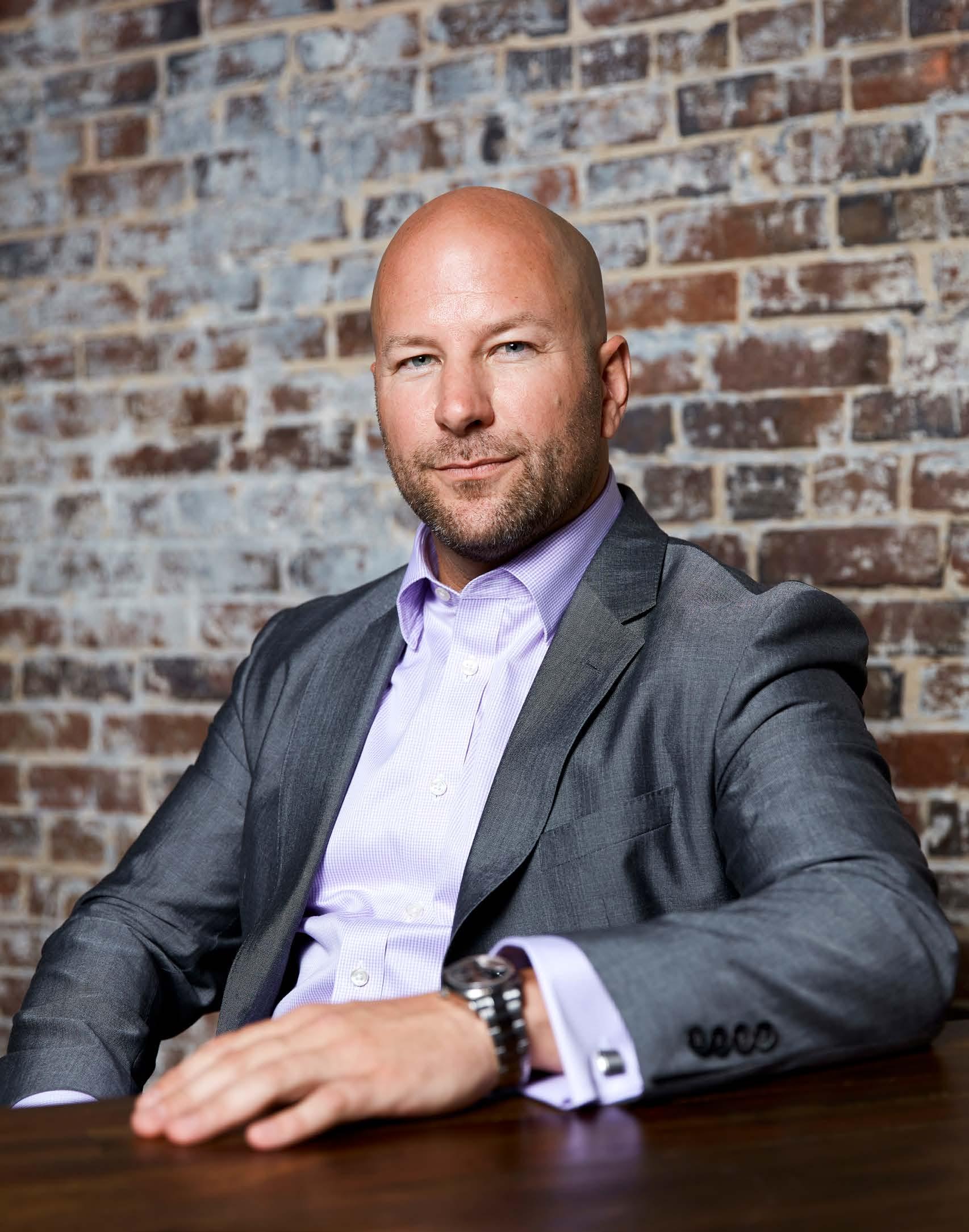
Paul Loftus VP, Sales and Revenue Retention
Wolters Kluwer
Kennesaw, GA
Ben Rollins
This year, all around the world, many companies will attempt to reinvent, alter, renovate, and improve their sales process. Sales transformations are difficult. Many companies try them, and almost as many fail. With so much at stake, no organization can afford to waste time, money, and energy without the perfect road map. That’s why Paul Loftus, vice president of sales and revenue retention at Wolters Kluwer, has developed the Five Pillars of Sales Transformation. Over the past nineteen years, Loftus has led dramatic renewals at various companies; he helped renew ADP’s National Account Benefit Administration division, he opened new public-sector markets, and secured new heights in the Human Resources Business Process Outsourcing division. Most recently, Loftus helped Wolters Kluwer Tax & Accounting reach record sales by leading the sales evolution from a traditional publishing organization to a modern software company. He recently sat with Profile to discuss his multiple sales transformations and his Five Pillar plan that every successful sales leader needs to know.
How did you become a sales transformation leader?
I’ve always raised my hand for jobs and roles that aren’t the most desirable. That’s how you learn. That’s how you get the chance to really make your mark and gain visibility and insight into important parts of a business that you wouldn’t otherwise see. I realized early on that nobody was going to throw me the keys to the Porsche, but they would let me drive the car that needed the most work.
How has your father influenced your career?
My father passed away nineteen years ago, but even well after his passing, he has had an extremely powerful impact on my life and career. He had a sound work ethic and
a belief in family and God. He truly lives in all of his six children and now in his grandchildren. As a matter of fact, the strength from both of my parents was passed to all of us in different capacities; they produced doctors, company presidents, entrepreneurs, and artists. No matter the profession, we are all very driven but still value a work/life balance. My dad was a well-read businessman who believed in solving customer problems before that was fashionable. He would solve their problems even when it wasn’t with his solution, and that approach created strong relationships. He taught me and my siblings that relationships are everything and that the customer or people always come first. My mother’s conviction to what she believes in and my dad’s strong ethical business code will always be the guiding light to anything I embark on in business or personal life for the rest of my life.
Now that you’ve led some successful transformations, you’ve developed a Five Pillar plan. But where did that all start?
You make mistakes and learn from every assignment. Some mistakes will be bigger than others, but it’s what you do after you make those mistakes that defines you and your leadership. I’ve found that everything starts with good talent. Collective IQ is stronger than a single IQ. I started to learn a lot about teams and about myself, and I’ve always been interested in putting those lessons and ideas together to form a plan to avoid the repetition of mistakes.
Do you find that employees embrace these transformation projects?
Nobody wants to be told they’re in a turnaround situation or that they need transformation. They want to understand the potential and be included in the improvement processes. I believe the best leaders need to be very sensitive to that and clearly communicate the plan along the way. You have to listen to the culture and to the people. The difficult part is sorting out the noise generated from change and the real problems that could result in bigger issues.
Why do companies call you? What’s behind a sales transformation?
It can be many things: a new CEO, a new strategy, poor sales, market changes. Usually it’s some combination of many factors. Most recently, at Wolters Kluwer, we needed to evolve our way of approaching the marketplace. If it’s true what CEB says that 57 percent of the sales process has been completed through self-research prior to a sales person being contacted, then we need to stop talking features and start provoking our customers to think differently by providing market insight. The fast-car, big-cigar salesman has no place in today’s environment. Companies today are looking for sellers to provide them industry insight, minimize their risk, or show them how to be more productive. The best sales teams no longer sell with their product, but rather, they sell to their solution. It’s massive change.
What’s the goal of a sales transformation?
It’s simple. You want to increase revenue by aligning sales execution with the business goals and by generating higher levels of productivity from the sellers. You need to provoke different thoughts or new behaviors by getting your clients and prospects to simply stop and say, “I never looked at it that way.”
What are the Five Pillars of your process?
It starts with alignment. You have to be aligned with the business’s CEO. A good CEO wants fast results, but he or she must understand how the transformation will unfold. It might seem slow at first. Most transformations will regress before they reach the desired state. Next is talent. You have to have the right talent profile that will meet the needs of your customers. Third is process and ensuring that you have the right tools and steps in place for consistent and sustainable success. Fourth is messaging: the communication to your associates of why we are doing what we are doing and a value proposition that resonates with your clients and prospects. Last but certainly not least is technology/enablement. The adherence and discipline to a customer relationship management system and a sales governance will create a culture of accountability.
What does someone in charge of a transformation need to do well?
You need to have thick skin and listen. In general, people don’t like to change and definitely don’t like to be told to change. Believe in the process but listen the entire time. It is inevitable that there will be adjustments needed. Be agile, listen, admit when you are wrong, and adjust quickly.
What common mistakes have you seen?
When I started doing this, I would try to flex too hard and force too much change too fast. That brings frustration and fatigue. There need to be phases to your approach. Leaders should understand that every organization is different. Your assessment of where people are and how much change they can accommodate is critical.
Tell me about potential results. What can companies expect?
It might take a couple years, but if you follow the Five Pillars of Sales Transformation, I promise you will see results. I did a threeyear transformation where, in year three, we broke all kinds of records. We hit our EBITA (earnings before interest, taxes, and amortization) and revenue targets while delivering double-digit sales growth. We did all this while decreasing our sales expense by 24 percent and increasing our first-year sellers’ productivity by 40 percent.
What do you enjoy most about this kind of work?
I actually don’t do it for the results. I do it for the process. I love taking something that could be viewed as chaotic or messy and putting the form and the discipline and the structure around it that allows for people to be more productive and shine in their environment. I believe the best managers should have a goal to manage themselves obsolete. If you’ve done that, you’ve done exactly what the organization needs, and it will be time for you to take on your next challenge. My goal is to put an organization on a trajectory to be wildly successful and then walk away and do it all over again.



Be one of the many industry leaders that choose Consensus for customized workshops taught by results-driven and field-tested negotiators, mediators, and executives





Lead From Your Seat
Steven Bradford steps beyond the compliance function and diversifies his skill set to make sure office furniture manufacturer HNI stays nimble to keep up with significant growth
By MICHELLE MARKELZ
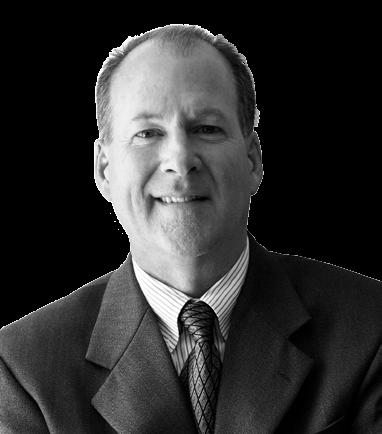
Steven Bradford VP, General Counsel, and Secretary HNI Corporation Muscatine, IA
Steven Bradford’s work has taken him from New Jersey to the Netherlands, representing a host of industries from paint to perfume. When a colleague promoted the open general counsel position at HNI Corporation, the only caveat for Bradford was the location: the tiny town of Muscatine, Iowa. But he gave it a shot and was instantly charged by the collegial atmosphere, bright executive team, and challenging work. Now, he’s sharing some insight into his legal work for HNI.
Let’s start with a little context: HNI is the number two furniture manufacturer in North America. What’s your competition?
There are three large players in the world of office furniture: Herman Miller, Steelcase, and HNI, and we’re all close in terms of size. HNI is perhaps least well known to the man
on the street because the other two companies go to market under the brand of their company name, whereas we are a house of brands. Our brands have a global presence with the largest and deepest breadth of office furniture solutions and greater ability to tailor and serve customers’ needs. Our major competitors are well-run companies and competition is tough, but we believe HNI is uniquely suited to provide exactly what the user needs where and when they need it.
What unique challenges do you face given the nature of your business?
Since office furniture is an infrequent purchase for most companies, it might be one of the first things cut when economic times are tough. HNI has a long history of lean manufacturing. During the recent recession, all of our departments, including legal, embraced the ethic of efficiency we apply in our manufacturing.
How are you applying this principle to your department?
I had to find ways to cut costs while still accomplishing our objectives, whether they be in court or in the office. We identified and eliminated low value-added activities and waste. We implemented processes of standard work for regular activities, such as routine contract review, and provided tools for client self-help. We found we were spending more money to defend some cases than they were worth, so now our focus is on early case resolution through negotiated mitigation rather than litigation. We’ve also changed the way we handle intellectual property work by bringing an attorney in-house to cut our external spending by more than half.
You often attend trade shows such as NeoCon in Chicago. How do these shows benefit you in your legal role?
The better I know and understand our business, the better I can serve the business as general counsel. Going to trade shows allows me to connect not just with the senior leadership, but to meet with field sales, government sales, marketing, product development, and other teams and with our dealers and customers. Learning first-hand about how our new products are received by the market helps inform future strategy discussions. For example, we often have international customers visit us at NeoCon. Meeting these customers helps me better assist our international business managers grow their businesses and deal with the challenges of international operations.
I imagine these challenges are extensive and change with each new location. HNI is working to expand in both India and China.
How difficult is it for you and the company to establish a legal presence in a new country or region?
India and China are two markets we’re expanding into because we see enormous future opportunity as these economies develop. We approach challenges with a process we call “People, Structure, Process.” We think leadership is the key, so we start by hiring people with the same values and business acumen that we look for in our US employees. We want them to be locals, not imported Americans. Once we have leadership in place, we focus on the operational structure of the business, and finally, we establish processes to incorporate repeatable standard work. I focus on building the HNI culture of transparent compliance with the local leadership teams. We talk about our corporate values and how they apply locally. We provide training, which can be used at all levels of the organization, and we work on cascading that information and training in a clear and consistent way at all levels.
International expansion doesn’t happen in a day; it necessitates a strategic outlook from the entire management team. Such a mind-set is one that is quickly becoming required for any general counsel who wants to be effective in their industry. How are you influencing strategy at HNI?
We have a small executive team, and I’m involved in most of the strategic discussions about the business, not always in a legal capacity, but often as a sounding board for ideas. These might include new business opportunities, product developments, dealing with changes in the market, and competitive responses. I had an interesting experience a few years ago when I served for a number of

Full-Service Global Law Firm
Providing Insight Where Law, Business and Government Meet
We are a full-service global law firm, giving our clients a voice, supporting their ambitions and achieving successful outcomes. Our multidisciplinary team of more than 1,500 lawyers in 46 offices across 21 countries provides unrivalled access to expertise and invaluable connections on the ground. It is a seamless service that operates on any scale.
Matthew M. Holman Partner

+1 602 528 4083 matthew.holman@squirepb.com
46 Offices in 21 Countries squirepattonboggs.com Local Connections. Global Influence.
McVey & Parsky, LLC
Congratulates
STEVEN BRADFORD
Vice President, General Counsel and Secretary HNI CORPORATION on his many accomplishments, professionalism and remarkable career at HNI. We are pleased to be a part of the HNI legal team.
“Meeting customers helps me better assist our international business managers grow their businesses and deal with the challenges of international operations.”
STEVEN BRADFORD
McVey & Parsky, LLC
Attorneys at Law
months as HNI’s interim CIO. As I learned more about our IT systems, it became clear that significant changes were required to support our growing business and the complexity created by changing market demands. Embarking on a significant systems change is an expensive and risky undertaking. A prior company I worked for undertook a similar project, which went horribly wrong, and production stopped for months. I was asked to investigate what failed and what lessons could be learned.
And that helped inform your decisions at HNI?
Yes. My prior experience with other companies and my experience working with our IT group helped me understand and contribute to the challenging upgrade of our infrastructure systems. I’m impressed with the thoughtful and careful way HNI’s management, under the involved leadership of our CEO, managed this important project. It bodes very well for the success of the project and is an example of how strategy is developed and implemented.
A Roadmap for the Future of Surgery
How Dr. Kenneth Burhop is helping Integra LifeSciences prepare for the next decade of healthcare
by ALEX STEWART
Kenneth Burhop sat in the United Airlines lounge in Dulles International Airport on a cloudy Wednesday. He had driven an hour and a half from a conference in Maryland to the airport that morning and had exactly one hour to spare before his next teleconference meeting. At that moment, his emails had read like this:
“Sorry for not getting back to you sooner, but I have been traveling extensively— returned from Japan on Wednesday, spent all day Thursday flying from home in San Diego to New Jersey, all day ELT meetings in New Jersey on Friday, fly back home Friday night and then fly to Washington, DC, leaving home at 4 a.m. on Sunday.”
But Burhop never sounds haggard or jet-lagged. He sounds positively upbeat, either evidence of a midmorning espresso kicking in or a natural energy rivaled only by an NFL cheerleader. It’s clear that one or the other has been his secret weapon for the past thirty years and not just this week, sparking his rise at Baxter Healthcare and propelling his work of research-anddevelopment planning, implementation, and optimization at Integra LifeSciences.
While earning his PhD in veterinary science, Burhop became fascinated by how the body reacts to an inflammatory insult, such as shock, burn, and trauma. He spent three years in a National Institute of Healthcare postdoctoral fellowship, learning more about how the body responded to inflammation. Over the years, Burhop has authored more than forty publications and seventy abstracts and has multiple patents to his name. He started at Baxter in the corporate inflammation program. There, his team tested the body’s response to IVs, heart bypass machinery, heart valves, and more. “It was kind of like a kid in a candy store,” Burhop says.
Next, he led the animal testing program. Products at the beginning and end of their life cycles went through Burhop’s department. He was constantly learning about new products and how to make them safer and more biocompatible. Burhop quickly assumed roles of increasing responsibility, spending most of his time at Baxter developing blood substitutes.
Kenneth Burhop Corporate VP, Chief Scientific Officer Integra LifeSciences Plainsboro, NJ
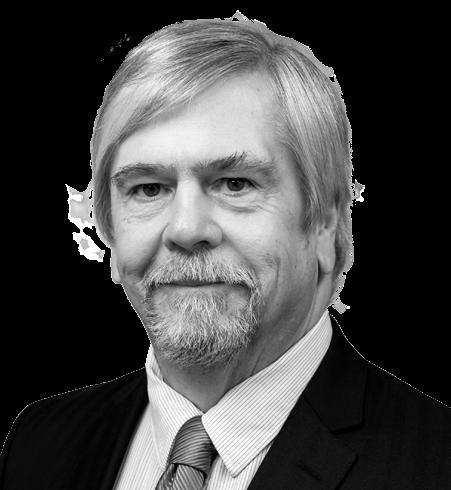

“Face time is important. I tried to know everyone at work, from the janitor to
A visionary leader
A great scientist A trusted partner
Success is delivered only to the deserving. Congratulations on your achievements Dr. Burhop
BRIDGE PTS, Inc.
Specialized Research, Rapid ResultsTM
After ten years of managing people, he developed three rules for being successful at work. The first is to have fun. The work he was doing had to be interesting, helpful, and collaborative. The second is that people are everything. “Face time is important,” he says. “I tried to know everyone at work, from the janitor to the CEO.” Finally, the third is to never stop learning. He spent most of his tenure at Baxter working with universities and researchers to unveil new products and solutions for the body’s ailments.
But after twenty-four years at Baxter, things had changed. At the time, layoffs and restructuring eliminated the fun, made the people disposable, and kept Burhop from continuing to learn. His daughter pointed out he wasn’t living by his three rules, so he left to work at a start-up in San Diego.
A few years later, an old boss from Baxter enlisted Burhop’s expertise. Today, he works at Integra, a company that specializes in devices used in orthopedic extremity surgery, neurosurgery, and reconstructive and general surgery. With more than 3,700 employees worldwide, Integra needed someone versed in both large company processes and innovative medical R&D. Burhop thought it sounded like fun, and he was hired as corporate vice president and chief scientific officer in 2014.
Burhop’s goal is to accelerate the company’s clinical organization and short- and long-term regenerative medicine R&D strategy. One of his first initiatives was streamlining the fragmented R&D resources across the company.
“When I came to Integra, the first thing we did was consolidate all these little fragments of the regenerative businesses and clinical expertise into one,” he says. “It didn’t make sense to duplicate it if you start talking about speed and efficiency.” His next goal was to develop and implement common processes across all divisions.
In the past ten years, Integra LifeSciences has acquired more than forty companies. Integrating these new acquisitions and getting these small companies to operate as one large company has been essential. Burhop’s experiences at Baxter helped him with strategic planning and enforcing common values across these businesses. But he is fully aware that each division—and each person—brings something different to the table.
“Every presentation I’ve ever given for the last fifteen years has a picture of Clint Eastwood from Magnum Force, 1973,” he says. “It says, ‘A man’s gotta know his limitations.’ I can’t possibly know what everyone is doing on a day-to-day basis. I don’t have the same experience as they do. So, I know that as one of my limitations.”
His collaborative management style contributes to his love of learning new things. “I spend a lot of my time trying to understand what is that unmet clinical need,” he says.
Burhop is also helping Integra look far into the future, anticipating the needs of the healthcare industry up to ten years out. “That’s what I get excited about,” he says. “This is what gets me up in the morning, when I go, ‘Wow, this could really change a patient’s life.’ This is the fun part of this whole job.”
IP Law of a Different Stripe
At Zebra Technologies, Aaron Bernstein navigates the intricate balance of trade secrets, design copyright, and ever-shifting changes in IP law
By LORI FREDRICKSON
Safeguarding new designs, trade secrets, and copyrighted material has become as complex as it is essential to tech companies. But changes in the industry have also led to dramatic shifts in patent law over the past several years. As Aaron Bernstein, vice president of IP litigation and transactions with Zebra Technologies describes it, “There’s been a swinging of the pendulum.”
Having worked as an IP attorney for tech clients and companies since the early 1990s, Bernstein has had a frontrow seat to the evolution of the tech industry and of IP law. He has since become an authority on the intricacies of IP law, as well as its increasing value and necessity to business leaders. “What my team is good at is understanding the role of IP for the business and how it can be leveraged to advance business objectives,” Bernstein explains. “The company needs specialists who understand that because a lot of IP is not necessarily intuitive.”
After studying and working in engineering in the 1980s, Bernstein came to patent law after he first learned about the field through friends who were in law school at the time. He was interested in it both as an endeavor that calls on many skills and as something he was uniquely suited to. Patent law is the only legal field in the United States that requires additional credentials outside of law school and the state bar, specifically a science degree, which Bernstein already had. As a limited field, it was also highly in demand.
Having worked with technology, Bernstein had a solid understanding of the industries he worked with. Initially his clients were law firms, and then he moved on to become an in-house attorney for companies such as Intel, Symbol Technologies, and Motorola. In 2014, Bernstein joined Zebra, following its major acquisition of Motorola

Aaron Bernstein VP, IP Litigation and Transactions, Product Groups Counsel Zebra Technologies Holtsville, NY
Solutions’ Enterprise business that focused on providing equipment and solutions that help businesses operate more efficiently.
Working alongside a second vice president of IP at Zebra, Terri Smith, Bernstein’s work is multifold: securing rights for technology and putting in processes to preserve them, including safeguarding trade secrets and confidential information within the company; finding and patenting inventions; and licensing each kind of IP, including copyrights associated with software. He also leverages rights by finding where patents are valuable and where they might enable Zebra to secure licensing fees from other companies.
Bernstein emphasizes that building Zebra’s IP portfolio is valuable in part for deterring IP assertions from competitors.
“A primary reason that a big company maintains a large patent portfolio is to discourage other big companies from starting a patent war,” Bernstein explains. To protect the company, he defends against outside attempts to exploit IP rights in claims that are filed against Zebra, and he also secures rights in collaborative relationships with other companies where IP from both are used.
“We provide value to the company because we can explain the role of IP in a business enterprise and look after it competently and leverage it to advance business
We are proud to work with innovative, collaborative leaders in the technology industry and congratulate the many achievements of Aaron Bernstein and Zebra Technologies.
objectives,” Bernstein explains. He adds that since acquiring Motorola Solutions’ Enterprise business, Zebra has generated more than $3.5 billion per year in revenue, of which 9–10 percent is spent on research and development and innovating new products, services, and solutions. Since competitors are likely to use those innovations without paying licensing fees if those innovations aren’t legally protected with IP rights, Bernstein notes that it’s vital to make sure that these cases are secure.
For that reason, serving as an on-site authority on current IP laws and how they are changing is integral to Bernstein’s role. This has been a frequent issue over the past several years, as those laws have dramatically shifted, largely in response to the rise of patent trolls, also known as patent assertion entities, beginning in the late 1990s. These are typically patent lawyers or other motivated businesspersons who track down existing patents that might be easily purchased and then use those to make a case of infringement against companies who are using related technology—often when their connection to that technology is tangential at best.
Previously, Bernstein explains, the law favored patents and awarding high damages, which made companies want to avoid going to court over an assertion. And even when cases were extremely unlikely to win, it could be more economical to write a check rather than face the extremely high cost of a patent lawsuit. Win or lose, legal fees average many millions. All that led to a pervasive, flourishing industry around acquiring and making a case for what are essentially junk patents. While Bernstein was at Intel, the term “trolls” was coined as a kinder term in response to defamation charges against an Intel executive referring to them as “patent extortionists.”
By the late 2000s, big companies began lobbying for proposed legal changes, and in recent years—including a 2014 Supreme Court decision that called into question the viability of all patents that involve software and computers—the law has developed in a direction that curbs the power of patent trolls. But this, too, has led to complications in the IP field. “The artifact of this is that now everyone’s patents are a little less powerful,” Bernstein says. This requires looking harder at whether an innovation can actually be patented. Because those laws have been in flux and could potentially change again in the future, he also has to look at whether something unlikely to receive a patent now might be worth the attempt if laws might later make it eligible.
“IP law is the framework that provides economic incentive for people and companies to create and bring things into the world that never existed.”
AARON BERNSTEIN
In the tech industry, Bernstein says, these issues are compounded by the fact that new technologies mature extremely fast. Receiving a patent takes 3–5 years to process, and many innovations will be outmoded by the end of that term and will no longer be worth the cost of having or maintaining a patent. This hasn’t made pursuing patents any less of a focus, in part for that competitive value of having a large portfolio. But it is a strong example of why IP specialists are such a vital asset to the tech industry, along with Bernstein’s other work, including defending against claims, negotiating contracts that involve IP, licensing the IP, and enforcing against competitors. And at Zebra Technologies, which tripled its revenue as well as its staff with the acquisition of Motorola Solutions’ Enterprise business, it requires rigorous management and training on policies and confidentiality practices across multiple departments. This, along with improving the ways that the legal model is integrated into Zebra’s system, has been a focus of Bernstein’s since joining the company.
Bernstein is passionate about what he does in part because of the role IP plays for innovation. “IP law is the framework that provides economic incentive for people and companies to create and bring things into the world that never existed. In a capitalist economy, we couldn’t invest in innovation if there weren’t laws allowing us to keep it to ourselves for a while,” he says. “This sounds a bit trite, but innovation and creativity are what carry mankind forward. It’s what can make tomorrow better than yesterday.”
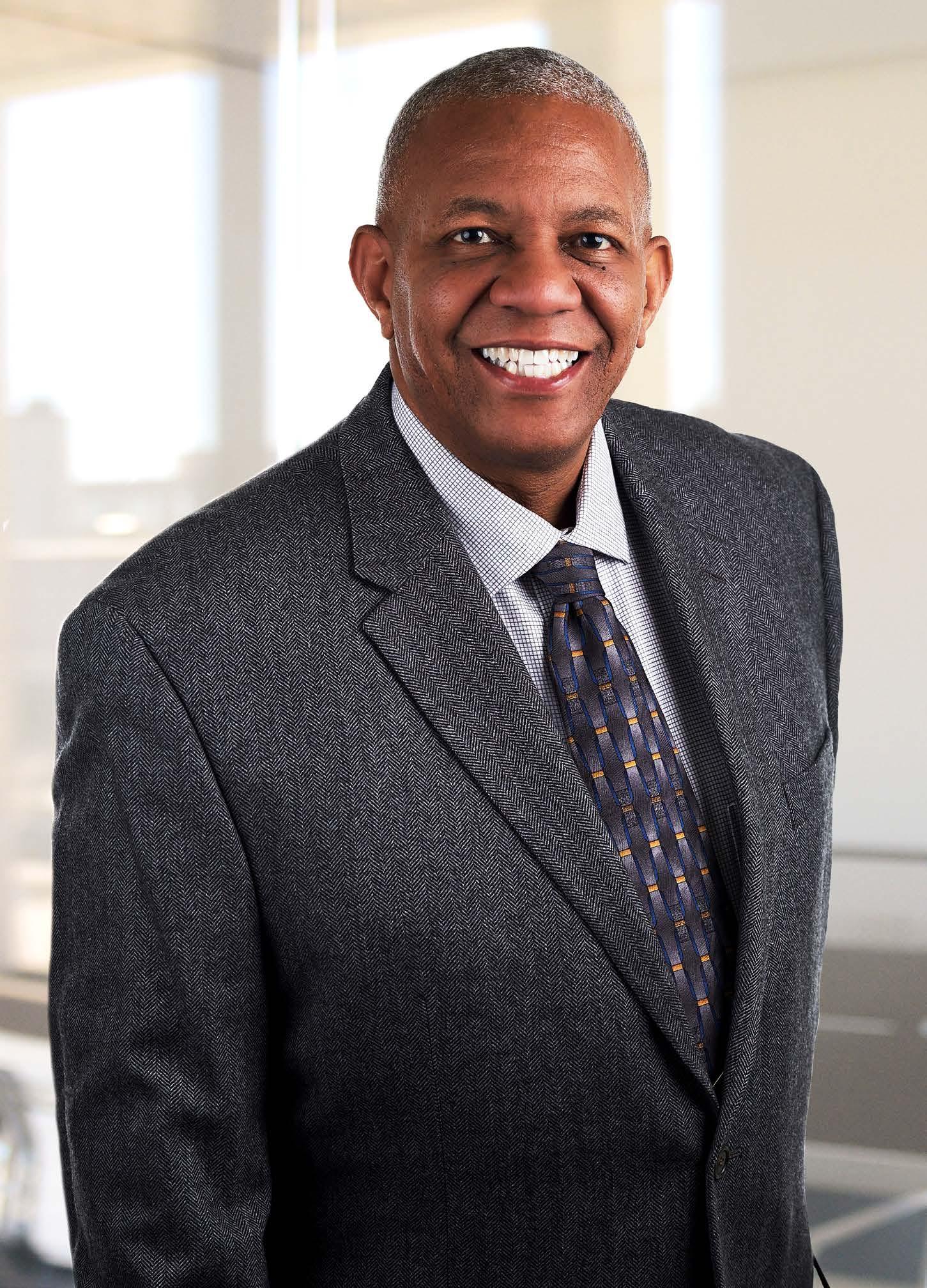
Minimize Risk, Maximize Relationships
Hologic’s Michael Lewis shares five audit department best practices
By JEFF SILVER
As a global developer, manufacturer, and supplier of diagnostic products, medical imaging systems for breast and surgical health, gynecological surgical products, and medical aesthetic systems, Hologic must address countless regulatory, financial, security, and operational risks. Leading that responsibility is Michael Lewis, vice president of internal audit. With nearly three decades of experience and expertise, Lewis has key recommendations on how audit teams can best minimize risk and maximize relationships in all types of companies and industries.
USE DATA TO DIRECT YOUR FOCUS AND AVOID BIAS AND PRECONCEIVED IDEAS
Hologic’s internal audit department uses a two-dimensional enterprise risk management (ERM) identification process that helps prioritize potential risks and how likely they are to occur. That process was initially based on surveys of senior management but has grown to include external scans. Drawing from sources such as the Transparency International Corruption Perception Index and information from the big four accounting firms and other audit and risk compliance organizations, Lewis can identify a broader range of challenges.
“You don’t want to be limited to what you already know or to what you can access internally,” Lewis says. “It’s important to be aware of
what others are seeing and sensitive to hot spots that might otherwise be overlooked. From there, we can compare that to our lines of business and assess where we might have more exposure and rank areas that need the most attention.”
He works with senior management to triage the results and achieve better allocation of resources. By determining, for example, the top areas of concern, the department can deliver more comprehensive and highquality results that address the most pressing concerns. In addition to this prioritizing process, Lewis and his team do projectspecific risk assessments that fall within the identified areas.
In 2017, Hologic’s top risks included cybersecurity, business continuity, and regulatory compliance.
ASSESS RISK AND ADAPT TO IT THROUGHOUT THE YEAR
Many organizations perform annual risk assessments, but Hologic conducts several assessments throughout the year. This
Michael Lewis VP of Internal Audit
Hologic Bedford, MA
Drive insights
Deloitte helps internal audit leaders make an impact that matters. How? By combining advanced analytics with deep subject matter expertise, proprietary labs, and innovative methods to uncover insights. We help internal audit transform into a function that not only delivers assurance, but also advises and anticipates risk.
Unlock the potential of internal audit. See where insights lead.
www.deloitte.com/us/internalaudit

ensures the company is focusing on the right areas at the right time. “Businesses reforecast as markets and other factors change. We do the same,” Lewis says. “It’s not uncommon to find that a new project has taken on more value than one we signed on for six or eight months ago. It just makes sense to adapt along with the risks.”
MANAGE
AND NURTURE
RELATIONSHIPS AT ALL LEVELS OF THE BUSINESS ON AN ONGOING BASIS
At Hologic, interactions with colleagues and partners are ongoing. This takes the form of formal, regularly scheduled meetings with senior management, as well as open-door walk-ins for everyone from field managers to the general counsel, CFO, and CEO.
Lewis indicates that such open communication and collaboration helps address what he calls “audit’s identity crisis.” By this, he means the wide range of preconceived notions people have about formal reviews or examinations, whether they be internal or external, ranging from the IRS to OSHA.
“At Hologic, it starts with the chief audit executive and extends to internal audit staff being open and transparent while delivering value-added products that provide meaningful results,” Lewis says. “You develop mutual respect along with the brand of the department.”
One of his strategies is to actively solicit feedback from board members and other senior stakeholders. He makes a point of getting their feedback on presentations to ensure he’s addressed their concerns and does so according to their preferences: Did he speak too long? Did he offer too much or too little information?
Not only does their input ensure alignment with strategic priorities, but Lewis is able to incorporate their individual expertise. “Board members have seen issues and various solutions at other organizations,” he says. “That gives us added insight into how we can monitor and avoid similar challenges.”
DO EXTENSIVE RESEARCH AND WORK COLLABORATIVELY WHEN PREPARING FOR FIELD AUDITS
Audits can be disruptive, but audit departments can mitigate that impact through comprehensive preparation that includes process, owner, and management input. Lewis says everyone is more receptive
“A change in leadership, a change in the latest headlines, or some other strategic objective will have an impact on the audit department.”
MICHAEL LEWIS
and cooperative when they understand the process, the required documents, and anticipated schedules. Lewis feels strongly that each step should be transparent, from the opening meeting to the final report, so that everyone involved has clear expectations and accountability. And better cooperation leads to better results.
ALWAYS BE AWARE OF PRIORITIES AND ADAPT ACCORDINGLY
Every environment has its own culture, so Lewis advises that his recommendations are customized for each one. “A change in leadership, a change in the latest headlines, or some other strategic objective will have an impact on the audit department,” he says. “By staying tuned in to evolving priorities, you can be sure that you offer independent, objective assessments, and increase the value and integrity of your efforts.”
Keep the Ball Moving
Stephen Finkel helps his finance team understand how their work fits into the big picture
By RUSS GAGER
SStephen Finkel’s responsibilities at FJC Security Services are all-encompassing. He leads a team of forty employees in the finance department, where they determine the costs for proposals ranging from massive federal or city projects—where wage rates might be subject to a host of regulations—to local ones. Finkel oversees FJC’s corporate strategy, financial management, reporting and planning, taxation, bids and proposals, union matters, audit, compliance, acquisitions, collective bargaining agreements, the Service Contract Act, and New York Labor Law 230. He also provides guidance for information technologies strategies and human resources along with employee benefits and the Affordable Care Act.
During the seventeen years that Finkel progressed from assistant controller to his present position, FJC Security Services has grown from a $40 million company to a $300 million one. He attributes the company’s growth to its model of creating leaders, not just workers, among its employees. “The people that I have are willing to grow and really take the next project and not just stay static,” he says.
Finkel’s management philosophy is to give his supervisory employees a full, 360-degree view of a project instead of just limiting their understanding to the one aspect of the project on which they are working. Finkel then asks them to explain it back to him so that he is sure they fully understand it. Once he’s sure they do, he asks them to create a flow chart that they could use to pass the information along to their employees.
“If you show them the finish line, where the goals and objectives are, and reverse engineer the project, it really seems to work out well,” Finkel says. “I’ve been able to grow employees through the years. I’ve taken interns, and over the years, they became senior directors of compliance or controllers by that method. You relate with each one differently, and you find their strength and teach around their strength. It’s been very successful.”
Finkel uses standard methods for recruiting employees, such as looking for interns from local colleges, taking out job ads, or relying on headhunters. During the recruitment process, Finkel seeks out a
Stephen Finkel SVP, Chief Financial Officer
FJC Security Services Inc. Floral Park, NY
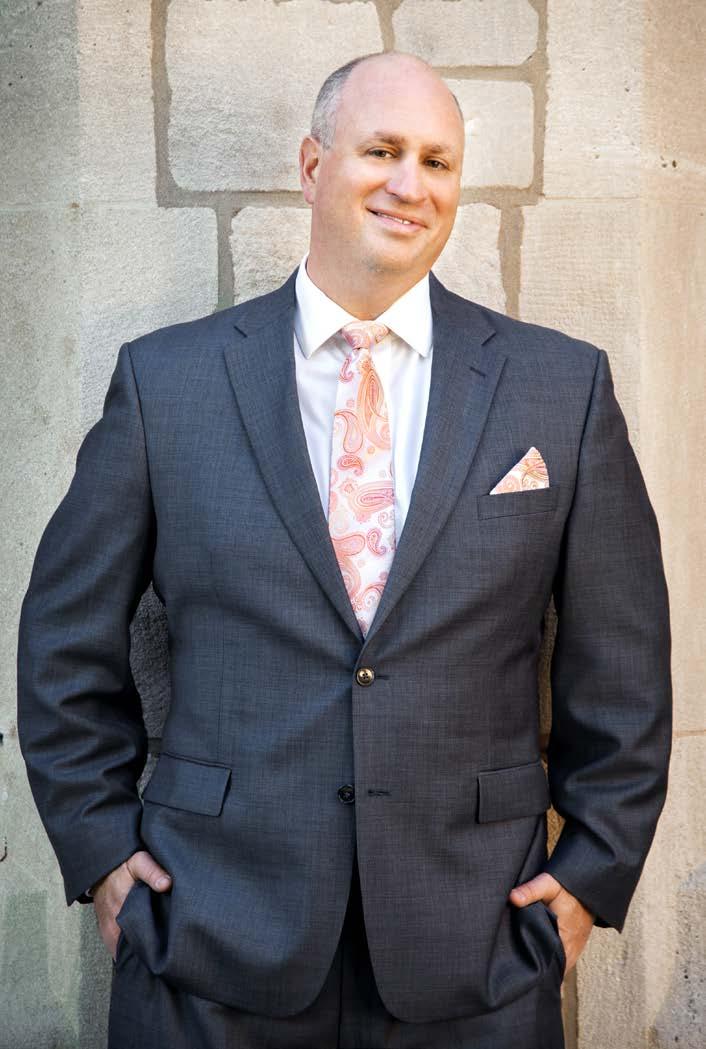
certain type of person, in addition to someone who has the right expertise. “We look to the core of the person,” he says. “You can definitely teach them, but you want to see if they are coachable and have the right core— that they can grow and develop—and not be a person there just for the day job. I’ve been pretty fortunate in choosing the right people around me.”
Ensuring that FJC complies with the myriad of regulations in the states in which it operates is beyond challenging, Finkel says. His department must keep track of changing overtime and minimum and prevailing wage rates, collective bargaining agreements, healthcare reform, and tax changes. “The guard industry is a highly regulated staffing industry because we have federal and city contracts,” Finkel explains. “When you are dealing with a high-volume, low-margin business, you have to be careful on every increase. These have dramatic impacts on a company like ours.”
Finkel attributes his success in finance to his earlier experience at FJC when he attended executive meetings and worked with other vice presidents of the company to make finance more than just a support function. “When I first started, there was a big divide between operations and finance,” Finkel recalls. Finance helped to make FJC more profitable by training employees throughout the company in how to be more efficient. “I feel like finance touches everything,” he says. “We became part of a team instead of siloed. We gave them the proper tools and support—which they never had
“The people that I have are willing to grow and really take the next project and not just stay static.”
STEPHEN FINKEL
A SECRET PROJECT
Guiding a company through an ownership transition is always a challenge, and it is one that has kept Stephen Finkel, senior vice president and chief financial officer of FJC Security Services Inc., busy outside of his regular office hours.
“I spent my entire summer preparing the due diligence, and I could not involve anyone in my company in the acquisition of our own company,” Finkel recalls. “You have to work completely off hours, secretly, and have a poker face in the office because you have to keep everybody working and not have people flee a company that might be sold. It’s definitely a challenge.”
Finkel is finishing work on the sale of FJC Security Services to Allied Universal, which occurred on October 1 of 2016. Allied Universal is a $5.5 billion company with approximately 150,000 employees that, like FJC, specializes in all types of security services, including providing security professionals and electronic security. The transition was completed March 31, and afterwards, Finkel was named vice president of finance for the FJC division of Allied Universal.
JUST FOR KICKS
It’s no coincidence that Stephen Finkel uses terminology from team sports when discussing business: he has been coaching his children’s soccer teams for fourteen years. At one point, he was coaching three teams—his two sons’ teams and his daughter’s team— in addition to being a certified soccer referee, a supervisor for the Long Island Soccer League, and the treasurer of the Police Activity League in Bethpage, New York.
Finkel utilized his financial and IT skills to move the soccer leagues from paper to online registration payment systems. “I did a lot of volunteer work on the side helping those programs,” Finkel says. “Once I got them to a certain point where they were automated, I brought in other people to take those jobs. I did that for several years.” He also was awarded Long Island Junior Soccer League (LIJSL) Coach of the Year in 2009 and LIJSL Volunteer of the Year in 2010.
When he started work on his master’s degree in organizational science and his children got older and developed other interests, he reduced his coaching workload. But now that his fourteen-year-old daughter is competitive in dance, he even participated in a dance routine onstage with eleven other fathers in one of her dance performances. “I needed to do something with her,” Finkel says. “I did all three shows.”
“When we had auditors come in, we prepared everything for them. We’ve been audited by the best, and each time we passed the audits with flying colors.”
STEPHEN FINKEL
before—and that’s what we’re really doing now on a wider scale. Instead of just the vice presidents, now it’s down to the operators.”
Between August 2013 and May 2016, Finkel obtained a master’s degree in organizational leadership at Quinnipiac University, in addition to working at FJC. This enabled him to bring a leadership coach into FJC to help create leaders from within. He also encourages his employees to become certified fraud examiners. “I had two of my employees get that, and it really gave them instant credibility,” Finkel says. “When we had auditors come in, we prepared everything for them. We’ve been audited by the best, and each time we passed the audits with flying colors.” In 2014, Finkel won the CFO of the Year award for a private company with more than $50 million in revenue from Long Island Business News magazine.
When supervisors train their employees to be managers, those employees have the skills to be promoted if their supervisors
leave the company. “Creating a good farm system is very important,” Finkel explains. “It’s the way that you work with them. Instead of just dumping work on them, you also give them their goals to achieve. You have to listen to them. It’s a two-way street. Even though you’re their boss, you also have to be their mentor.”
TD Bank, America’s Most Convenient Bank, is one of the ten largest banks in the United States, providing more than 8.9 million customers with a full range of retail, small business, and commercial banking products and services at more than 1,275 convenient locations throughout the Northeast, Mid-Atlantic, Metro DC, the Carolinas, and Florida. In addition, TD Bank and its subsidiaries offer customized private banking and wealth management services through TD Wealth, and vehicle financing and dealer commercial services through TD Auto Finance.
Contact Emily Stoddard | SVP | Middle Market Team Lead in NYC at 646-981-4270 if she can assist you with your banking needs.

Well done!
TD is proud to partner with Stephen Finkel and FJC Security Services. Congratulations on your success, and we look forward to working with you!
How the General Counsel Can Create a Culture of Know
CRST International’s Lisa Stephenson explains how building relationships and identifying risk helps make the general counsel an indispensable partner
By ADAM KIVEL
As one of the largest transportation companies in the country, CRST handles freight across the contiguous United States, Mexico, and Canada. Crossing all those borders means the organization needs to keep track of a myriad of different safety regulations, environmental regulations, employment laws, Department of Transportation regulations, and more. CRST comprises eight separate operating companies, which require a lot of communication and collaboration to keep everyone on the same page when it comes to potential legal issues. Although many legal professionals might approach managing that risk with a big “No!” rubber stamp, general counsel Lisa Stephenson works to keep everything running smoothly at CRST.
“I don’t believe in perpetuating a culture of no,” Stephenson says. “I really like to work with our executives and figure out how we can be creative and find workable solutions.” That comes, in part, from a history full of

challenging roles in complex organizations. After receiving her JD from the University of Iowa, Stephenson clerked for two federal judges in the Northern and Southern Districts of Iowa and then spent some time in private practice. While working at Simmons Perrine Moyer Bergman PLC, she worked extensively on matters for the firm’s biggest client, CRST.
In fact, Stephenson’s relationship with her predecessor, CRST’s first general counsel, Eric Baker, exemplifies her approach to the role. The two worked closely in her time as outside counsel for CRST, and when he decided to go into private practice, she found that her strong relationships at the organization and institutional knowledge made her a natural fit for Baker’s role.
Lisa Stephenson VP, General Counsel
CRST International Cedar Rapids, IA
And that focus on people and relationships has continued to be a
driving force in her career. “Eric was well respected, and he’s still a dear friend,” she says. “And now I hire him, ironically, as an outside counsel for some of our cases.”
Maintaining strong relationships with outside counsel is an important part of Stephenson’s role. As the head of a two-person legal department for such a large organization, she must have trusted partners across the country in a variety of fields. “I couldn’t do this job without those relationships,” she says. “I think the fact that it wasn’t long ago that I was sitting in their chair helps.” Whether it means finding someone just down the block or across the country, Stephenson works to find the go-to firm to handle any issue that might come up. Although her team in-house is only two people, she sees this network of outside counsel as an extension of the department and values them as such.
That said, Stephenson loves that she’s able to touch every part of the business, after primarily handling employment work as outside counsel. “I’m involved in safety, in regulatory, and, right when I started with CRST, I got to work on the largest acquisition it had ever done,” she says. “That’s something I had never done professionally, and I learned so much from getting involved.” Rather than having multiple clients and driving toward specific trial dates, she relishes the opportunity to focus on a single, large client and to know that decisions she makes will have ramifications for decades to come. From negotiating major contracts to handling sensitive employment matters, Stephenson makes sure to identify potential risks, communicate them to the necessary CRST teams, and work with them to mitigate any exposure.
In addition to building strong relationships with outside counsel, Stephenson is sure to bring that focus to her own organization. “I know the president of every one of our eight operating companies,” she says. “We talk on the phone all the time. I’m blessed to work with true experts in their respective fields. It’s a true team effort around here, and everybody’s expected to be at the top of their game.”
Although it’s been a steep learning curve getting up to speed with the business focus, CEO David Rusch has been a strong mentor and guide. “He’s wicked smart and a shrewd businessman, but in his heart, he is a teacher,” Stephenson says. “He takes joy in mentoring and teaching people that want to learn.” That collaborative, hardworking
spirit runs throughout CRST, and Stephenson is proud to make it a big part of her work.
Mentorship heavily influenced how Stephenson arrived to that value system. When working with Judge John Jarvey, she learned from his keen legal mind and the honor he felt in serving others. Kevin Visser, Stephenson’s senior partner at Simmons Perrine, reinforced in her the value of hard work and being prepared. But, first and foremost, Stephenson credits her parents. “I go back to pretty humble beginnings here in Iowa, watching my parents get up and go to work every single day,” she says. “They didn’t have high-paying, glamorous jobs. They just went to work every single day and were loyal and hard workers to provide for our family.”
Even though this is her first role in-house, Stephenson sees the impact that legal has on nearly every issue that CRST faces. “In today’s day and age, there’s a legal aspect to everything a business does,” she says. But the organization’s strong roots and entrepreneurial spirit mean that challenges and opportunities to learn are welcomed— and while Stephenson works to help manage risks, some are absolutely necessary for the success of CRST. “You have to take risks, you have to grow, and you have to make wise business decisions,” she says. “My job is a small but hopefully important role in facilitating that.”
The scope of Lisa Stephenson’s responsibilities as general counsel for CRST is daunting, including risk management, acquisitions, and supervision of litigation nationwide. We at Lewis Brisbois have been honored to assist Ms. Stephenson in these efforts, and her composed and professional handling of these responsibilities is extremely impressive.
Congratulations to Lisa Stephenson on her recognition as an innovative leader in the transportation industry. Gallivan, White & Boyd, P.A.’s Commercial Transportation Team is proud of its relationship with CRST International and the legal support and services it provides to it in North Carolina and South Carolina.
Jenner & Block is proud to be part of the strategic legal team assembled by Lisa Stephenson. She is a visionary leader with extraordinary insight, judgment, and good nature. A great and growing company like CRST deserves no less. Jenner & Block is a destination law firm for complex commercial litigation and sophisticated corporate transactional work. With more than a century of unrelenting client advocacy experience, clients around the world trust Jenner & Block with their most sensitive, strategic, and consequential matters.


A Calm Sea Doesn’t Make a Good Sailor
With a firm belief that the customer experience is today’s competitive battleground, Myke Hawkins and his team help clients navigate the choppy seas of modern workforce management
by RANDALL COLBURN
Digital disruption is changing the very definition of work, and the stakes are higher than ever as companies strive to leverage talent to gain a competitive advantage. With one-third of the global workforce now engaged in nontraditional assignments, companies must deal with cost, speed, quality, and compliance across all labor categories—whether that’s full-time employees, freelancers, independent contractors, or temporary employees. HR, procurement, and operations teams face critical and costly decisions about choosing partners who can connect them with the talent they need to move their businesses forward.
It’s a complex challenge tailor-made for Myke Hawkins and the global sales team at Kelly Services. After originating the temporary staffing industry in 1946, Kelly has continually evolved and now provides workforce and talent solutions across the globe. Hawkins, the company’s senior vice president and global sales leader, is on the front lines of that evolution.
“The workforce solutions space solves so many business and human capital problems for Fortune 1000 companies around the world in terms of how they recruit, retain, and retire their talent,” Hawkins says. “Our customers need to navigate the modern needs and preferences of workers who are more flexible and fluid than ever before. The
Myke Hawkins SVP, Global Sales Leader
Kelly Services
Troy, MI
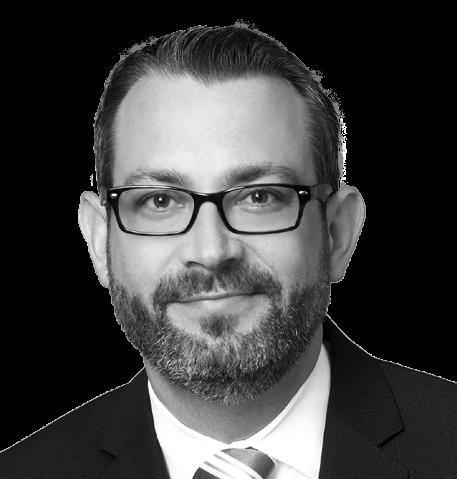
John Meiu

impact of staying the same or doing nothing as the talent landscape continues to shift is a real risk that we help our customers address. So, better understanding the businesses our customers are in, uncovering their most pressing problems, and bringing a consultative, problem-solving mentality to the table is our primary focus.”
It’s a focus shared across Hawkins’s global sales team, whose responsibilities include closing some of the most complex deals in the industry with some of the largest companies in the world—along with driving continual growth in a portfolio that boasts long-term relationships with many Fortune 500 clients. “My time is spent looking at transformational growth and strengthening the company’s core to defeat competition,” he says. “The challenge is twofold: how do we accelerate top-line revenue and bottom-line profitability?” It’s a challenge that Hawkins’s team is meeting head-on, with a packed calendar of town halls and go-to-market calls, not to mention training and development initiatives that make sure sales leaders are the best coaches they can be.
To further equip his team to drive growth and serve as truly consultative partners, Hawkins introduced Kelly to the Challenger methodology through a partnership with CEB, a best practices insight and technology company. “The traditional approach of selling features and benefits no longer works,” Hawkins says, citing research confirming that today’s customers make most purchase decisions before even having a conversation with a potential provider. “The Challenger methodology flips traditional selling models upside down and puts the client at the center of it all. From my perspective, the companies best equipped to win market share in today’s environment are those that know their customer’s business inside and out and who bring commercial insight that solves business problems the customer might not even know they have.”
As a seasoned leader and lifelong sales pro, Hawkins is aware it takes more than training and tools to make a world-class sales force. It takes an engaged, energized, passionate team that knows they’re fully accountable for driving growth and that thrives on the challenge. Those characteristics describe Hawkins perfectly. “I approach each endeavor with an unwavering commitment to personal growth, an intense focus around advancing creativity and innovation, and deploying an intestinal fortitude to succeed,” he says. “I’m always pushing limits, testing boundaries, and seeking new knowledge.”
“The workforce solutions space solves so many business and human capital problems for Fortune 1000 companies around the world.”
MYKE HAWKINS
He sees a direct correlation between his sales team’s engagement and its ability to hit its growth targets for the company. “People innately want to be a part of something bigger than themselves. They want to know that what they do every day is making a difference,” he explains. “Setting a compelling mission that everyone can rally around, providing line of sight to our business priorities, and inspiring our colleagues to deliver their best selves to the company and to their customers delivers growth.”
A firm believer that nothing of significance is ever achieved by one person working alone, Hawkins’s ideas about engagement and culture extend beyond his own team. He’s a big proponent of what he calls interlock: the notion that his team’s success is dependent on the success of others, and vice versa. “As a global sales leader, you’re at the intersection of top-line growth and bottom-line profitability,” he says. “You have to navigate across all domains whether that’s operational service delivery, finance, marketing, legal, or more. That means you’re in a position to influence the culture of a company and the successes of other people as you work through every part of the customer life cycle. Every discussion, meeting, and exchange of words is an opportunity to make a positive impact.”
Hawkins’s approach is paying off: his team is expanding the value they deliver to
customers, capturing more market share, and posting impressive year-over-year improvements in their sales metrics. As he looks ahead to the future, Hawkins is unfailingly optimistic. “Each day brings a set of new challenges that I love because I thrive on change and ambiguity,” he says.
There’s no doubt that with the pace of change in the working world, Hawkins and his team will have opportunities to thrive for many years to come.
SCOUT’S HONOR
Growing up in Flint, Michigan, Myke Hawkins was actively involved with the Boy Scouts and eventually became an Eagle Scout—which he says had a large positive influence on his values as an adult, especially one in charge of a large company.
The scouts also contributed to his active lifestyle and love of nature. He loves fishing, camping, and exploring the outdoors with his family.
When he’s not working at Kelly Services, Hawkins also loves working on his assortment of vintage, highhorsepower cars and cranking out tunes on his electric guitar–with the amp turned all the way up.

Master of All Trades
As general counsel for AVX Corporation, Evan Slavitt does a little bit of everything and relishes the complex scope of corporate law
By KASEY CHEYDLEUR
Photos by RAYMOND MCCREA JONES
AAs the general counsel for AVX Corporation, Evan Slavitt keeps very busy. Working for the leading international manufacturer and supplier of electronic passive components and interconnect solutions, Slavitt finds a constant stream of challenging and interesting work, as he interacts with every aspect of the business. But the biggest misconception about corporate law, he explains, is that it’s boring. “Think about a guy running a store,” Slavitt says. “He’s hiring people, he’s buying merchandise, and he’s dealing with real estate. He’s doing all kinds of stuff every day. And corporate lawyers deal with that same stuff every day.”
Slavitt may be in corporate law now, but he didn’t start there. After graduating from Yale University and Harvard Law School, where he was an editor of the Harvard Law Review, he served as an attorney in the Antitrust Division of the US Department of Justice, and then as an assistant US attorney for the District of Massachusetts. He next spent twenty years in private practice as a trial attorney in Boston. Ten years ago, however, he sensed it was time for a change and joined AVX as its general counsel.
Slavitt describes the differences between his time as a trial attorney and in-house counsel with an analogy. “With trial attorneys, we all walk into the room, and there is a dead body on the floor, and our job is to figure what happened and who is responsible—but no matter how we work it, someone is already dead,” he says. “As an in-house counsel, my job is figuring out how to avoid these problems and fix things before there is a dead body on the floor and teach people inside the company what they need to know to understand the legal implications of their decisions.”
After transitioning to AVX, Slavitt was surprised by the variety that his new position offered. The organization operates in twelve countries and serves a broad range of markets including: computer, telecommunications infrastructure, cellular, industrial, automotive, consumer, military, and medical sectors—and Slavitt is involved in all of it. “My role is basically anything that walks in the door,” he says. “I have responsibilities everywhere the company could interact with the laws and the statutes of any country, which is spectacularly broad. My job is to navigate these waters, translate legal jargon to businesses and businesspeople so they can understand it, minimize the risk by reviewing contracts and other legal documents, assist people when it’s time to think about acquisitions, and do basically all the block and tackling work you have to do for a company that operates around the world.”
In addition to his legal work, he oversees the health and safety department for the company. Slavitt had previously worked in environmental law at a private practice, which, he explains, made him a natural fit to supervise the department. He now conducts health and safety inspections for some AVX plants every year and oversees the environmental health and safety efforts for the company. Slavitt credits his team for helping him manage the initial learning curve as he made the transition from the legal side to the policy side.

Slavitt knows he’s not always right, and a key part of what he looks for when hiring is people who are willing to ask smart questions and point out places where he might have missed something. “Historically, my management style is: I hire people to do their job. It is not my job to do their job. If I were going to do their job, I wouldn’t hire them,” Slavitt says. “So I have to find the right people for the job and give them the tools to do it well, but I see myself as much as a facilitator as someone to whom they report.” When working with teams, Slavitt tries to avoid giving out answers and instead guides team members to make their own decisions. He believes that the benefits are twofold: the team might come up with a better solution than what he had in mind, and they are also challenged to think more like leaders.
Recently, Slavitt’s team has been working to get the company in line with the United Kingdom’s Modern Slavery Act, which seeks to prevent slavery and trafficking within the United Kingdom and associated businesses. His team had to ensure that every company within the international AVX group had completed the necessary notices, implemented
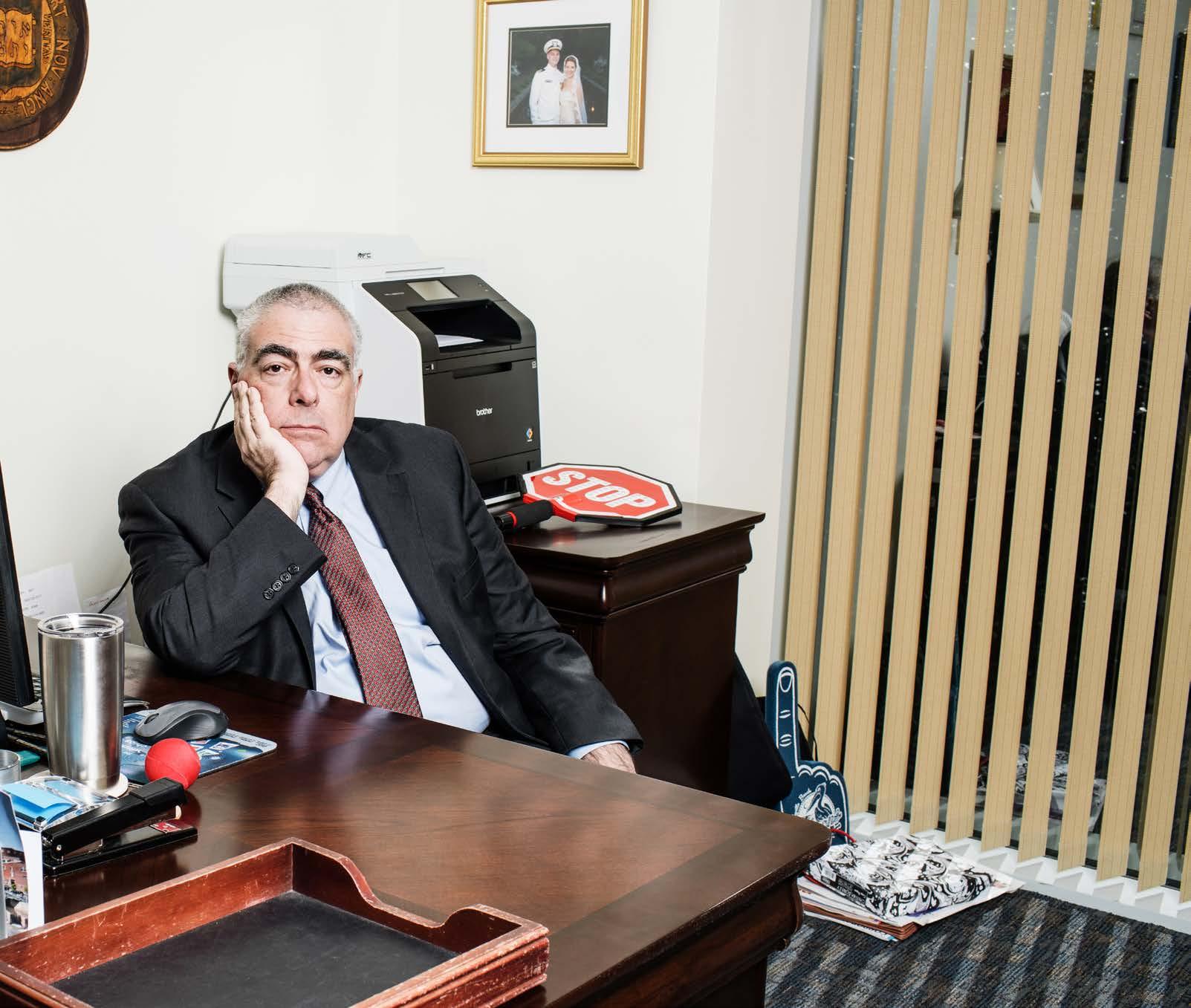
the required rules, and revised the contracts with vendors so that they were legitimately monitoring the labor of their supply chain. AVX is now fully compliant with the law.
One resource Slavitt has found invaluable since his transition to in-house counsel is the Association of Corporate Counsel (ACC), a global, in-house bar association for professional corporate counsel. Over the past three years he has turned his focus to cybersecurity issues and how they relate to law firms. “A lot of the time, we get cybersecurity information that is about how our company should deal with vendors or customers, but lawyers hire a lot of law firms,” Slavitt says. “And until recently, no one was really paying attention to the cybersecurity issues of law firms and telling in-house counsel, or helping in-house counsel, understand what they needed to know to evaluate the quality of the cybersecurity of the firms they were hiring.”
Evan Slavitt General Counsel
This new focus has led him to flexing his writing muscles for the ACC blog. No stranger to
“My role is basically anything that walks in the door. I have responsibilities everywhere the company could interact with the laws and the statutes of any country, which is spectacularly broad.”
EVAN SLAVITT
AVX Corporation
Fountain Inn, SC
Proud to support the Maria Mitchell Association Nutter recognizes Evan Slavitt for his distinguished work and accomplishments as a legal counselor and strategist.
Over many years working together we have come to know the depth of his insight and intelligence, and the strength of his commitment and character.
We value and are proud of our relationship with Evan and AVX Corporation.
writing—in 2012 he published a novel called Death of a Prosecutor —Slavitt says the blog presented a unique challenge. “The blog is like the old days when I was in high school, where you have to write a one-page essay on something interesting and do it within five hundred words,” Slavitt says. “And particularly for lawyers, trying to do that is not as easy as it sounds. I have been guest blogging to see what it was like to have one particular point and then explain it in a short period of time. So if someone is scanning through the blog, they can say, ‘Oh, that’s interesting. Now I know this.’”
While he has given up predicting his career path, Slavitt says that one thing that has become clear is the importance of truly listening to those around him. “The best piece of advice, both for lawyers and businesspeople, is to listen,” he says. “Too many people—particularly in the legal business—are thinking about what they want to say while the other person is talking and they are not actually hearing any of the important stuff. And as I have gotten older, it has become clearer to me that I know a lot, but it is important to listen to others because they might know something I don’t, and I need to know what their real question is, not just what they seem to be saying.”
Mintz Levin is proud to recognize Profile magazine’s honoree, AVX Corporation’s Evan Slavitt. With a versatile set of talents, Evan is capable of handling diverse matters, from mergers and acquisitions to complex patent litigation. His breadth of knowledge, strong analytical skills, and business-orientated approach enable him to find practical solutions to the most complex legal problems. He is a pleasure to work with and a true friend.
Congratulations, Evan!
“Nutter holds Evan Slavitt in the highest regard as a very savvy legal counselor with an extraordinary breadth of knowledge, and we greatly value our long-standing partnership with AVX.” —Mary Ryan, Partner, Litigation, Nutter
“Nutter is honored to work with Evan Slavitt and others at AVX. We are pleased to be a part of his team and congratulate him on this well-deserved recognition.” —Ronald Cahill, Partner, IP Litigation Chair, Nutter
Congratulations to Evan Slavitt on his well-deserved recognition. Parker Poe values our relationship with AVX Corporation and we thank Evan for sharing his talents with our firm. It is our mission to provide the highest quality of professional service to meet the needs of our diverse client base.

Parker Poe applauds Evan Slavitt, Senior Vice President, General Counsel and Corporate Secretary at AVX Corporation for his success as an

With nearly 200 attorneys in seven offices, Parker Poe represents clients globally in corporate, finance, regulatory, real estate and litigation matters. We provide solutions for industry leaders in:


www.parkerpoe.com




We are a full-service Am Law 100 firm with 500 attorneys serving clients worldwide. Our Corporate & Securities Practice – ranked National Tier 1 in “Best Law Firms” – leverages practical business and legal insight to help clients grow and succeed.
Mintz Levin applauds Evan Slavitt of AVX Corporation for his visionary leadership and commitment to the technology industry. www.mintz.com
Kia Canada’s High-Octane Marketing Strategy
Ted Lancaster is using his diverse industry experience to launch Kia’s new luxury sports sedan, the all-new 2018 Kia Stinger
By RUSS GAGER
For Ted Lancaster, a high-performance luxury sports sedan should do more than just get the driver and passengers to their destination quickly; it should elevate their state-of-mind during the journey. That is one of the goals of Kia’s new 2018 Stinger luxury sports sedan, which will be available in North America later this year. “This vehicle will have the get-up-and-go performance to get you excited, without sacrificing comfort,” says Lancaster, who is Kia Canada’s vice president and chief operating officer. “You won’t feel exhausted after a long drive with this vehicle, but you will have enjoyed the journey immensely.” But all of this design and engineering expertise needs to be presented effectively to create sales, and that is where Lancaster steps in.
The all-wheel-drive, five-passenger fastback will provide Kia with a strong entry in the luxury segment, which is dominated by high-performance vehicles with jack-rabbit accelerations and suspensions designed more for racing than touring. The Stinger’s extended wheelbase, Lancaster says, is designed to create a spacious cabin interior and smooth ride. “I think it comes down to the strong design and how they’ve really stretched the wheels as wide, forward and back, as much as possible,” Lancaster explains. “It really does create a much smoother ride, and you don’t sacrifice cabin space. You can take three or four passengers in this vehicle and really enjoy it.” He also points out that the car’s wide hatchback contributes to better-than-expected cargo capacity.

Ted Lancaster VP, COO Kia Canada Toronto
Peter Schreyer, Kia Motors’ chief design officer, oversaw the Stinger’s design. And as the head of Kia’s Vehicle Test and High-Performance Development department, Albert Biermann supervised the development of the vehicle’s ride and handling. To refine its design and engineering, Kia tested the Stinger on the famous Nurburgring racing circuit in Germany.
To get all of that information in front of the public eye, Lancaster is supervising the Stinger’s launch in Canada. The first task has been to build excitement around its introduction, starting with the vehicle making the rounds of the major North American auto shows. Its Canadian debut was in February at the Canadian International Auto Show in Toronto after its premiere in January at the North American International Auto Show in Detroit. Additional stops were at auto shows in Montreal, Vancouver, and Edmonton.
“We are being very strategic with this launch,” Lancaster explains. “It can help elevate the brand. A lot of time is being spent ensuring that we, as an organization in Canada, properly launch, prepare, and execute the overall marketing plan for the Stinger. Conceptually, it’s going to focus on the design
and performance and really highlighting the overall enjoyment of the ride.” To introduce and market the Stinger, Lancaster’s sales, marketing, logistics, and distributing teams are examining a multitude of details.
“All of them have to report to me on their progress with regard to getting this vehicle to market,” he says. “It takes a lot of time to prepare for a vehicle like this. We are working every day to make sure we get out to the marketplace and resonate with consumers as much as possible.”
Kia is using social media extensively. The company is preparing teaser videos for the Canadian market and promoting the Stinger’s introduction on Facebook and Instagram. “We’re focused on leveraging the Stinger to build as much excitement with as many people as we can,” Lancaster says. The Stinger’s introduction in Toronto was shown on Facebook Live as it was happening. Other marketing possibilities include doing a mall tour with the Stinger and establishing a dedicated consumer microsite for the vehicle.
Another possible marketing promotion being considered is sending a Stinger to a circuit of dealers in the major metropolitan areas of Canada for one week each. During
that week, each dealer could show the Stinger to select customers for potential preorders before it was transported to the next dealer on the circuit.
This type of promotion ties in with Lancaster’s experience in automotive sales. He spent roughly five years on the sales floor before working his way up through management positions. “I’ve always had an attachment to the retail side throughout my career,” he explains. “If you’re going to be an executive in this industry, having a strong understanding of retail operations is an asset.” Additionally, before going into automotive sales, Lancaster studied law.
During his more than twenty years in the automotive industry, Lancaster has worked at Honda, Mercedes-Benz, Mitsubishi, and Nissan. He was also the director of national development at the Dilawri Group of Companies. “I’ve worked in pretty much every department,” Lancaster says. “I’ve had exposure to a variety of agencies and how they operate. I’m a student of the marketplace in Canada.” He is also continually learning about changes in consumer preferences, habits, and trends. “This allows me to work with our team here to provide the best possible marketing
initiatives to build the brand and grow the business,” Lancaster says.
Lancaster is heavily involved with marketing the Stinger and other products—such as Kia’s hybrid crossover, the Niro—as well as with press events and interviews about new models and the brand. Last year, Kia scored highest in the J.D. Power 2016 US Initial Quality Study, with the lowest number of problems reported by consumers. “That was fantastic, a great accomplishment for our brand,” Lancaster says. “That type of quality engineering is what is going into the Stinger.”
Last year, Kia grew 5.5 percent in Canada and is up 3 percent in retail sales early in 2017. “We’re heading in the right direction,” Lancaster says. “We are a brand that is on the move, but we do have a gap between the quality of the product and the impression of our brand in Canada—but we’re steadily elevating that to meet the brand’s quality. Whenever you have a macro launch of something, you can change the brand impression. You can leave a strong ripple in the marketplace, so you want to be as effective as you possibly can. The Stinger is a great opportunity to attract a lot of new consumers to the Kia brand, and we’re ready to deliver once we get their attention.”

Lewin EVP, General Counsel
Stephen Voss
Cindy
The Legal Side of Human Services
After serving as general counsel for Volunteers of America and the National Wildlife Federation, Cindy Lewin found the perfect fusion of human services, advocacy, and outreach with AARP
By RANDALL COLBURN
When you’re young, you want to help. But when you’re young, what it means to help can be difficult to articulate. Cindy Lewin wanted to help—to make meaningful, concrete change. And, after a few years working on Capitol Hill, she saw her chance in policy and legislation. That led her to Yale Law School. As she studied, however, Lewin kept an eye on Washington. What she saw was discouraging.
“I watched to see what had been happening with all the issues I had been working on, issues that were so incredibly important to me,” she says. “I saw that nothing had happened to them. People were having all the same discussions and arguments we’d been having the year before. Nothing really changed.” Advocacy, it turns out, is a slow, agonizing process. But Lewin strapped in, and over the next twenty-five years, she forged a career that encompasses organizations that effect change both in Washington and on the front lines.
“When you look back at your career path, you can see how it makes sense. But when you’re at the beginning of it, you don’t know where you’re going,” says Lewin, reflecting on the arc that led her from law school to private practice and, eventually, to serving as the general counsel of three large, national nonprofits.
Today, she serves as the executive vice president and general counsel of AARP, the juggernaut nonprofit that, for half a century, has worked to enhance the quality of life for people as they grow older. “It’s just such a universal mission. I love that about it,” Lewin says, emphasizing the company’s efforts toward destigmatizing the aging process. “We want to help people face this part of their lives, to recognize that it doesn’t have to be a decline and that it can be a fulfilling time.”
Lewin views her position at AARP as a culmination of her prior experiences,
“When you look back at your career path, you can see how it makes sense. But when you’re at the beginning of it, you don’t know where you’re going.”
CINDY LEWIN
specifically her roles at Volunteers of America and the National Wildlife Federation. At AARP, she’s able to combine the outreach and human services of the former with the advocacy and education of the latter.
“It’s America’s best-kept secret,” Lewin says of Volunteers of America. “It’s the kind of charity that’s doing good work in every community, and you don’t necessarily know it.” She was struck by what she described as the organization’s “ministry of service,” which encompasses everything from providing assisted living and affordable housing to sponsoring Meals on Wheels programs and adoption services. As one
of the organization’s first general counsel, Lewin essentially built the legal department from scratch.
Eight years later, Volunteers of America found itself deeply involved with the evacuation and relocation of the survivors of Hurricane Katrina. Lewin even helped man the company’s dedicated 1-800 number, and it was this experience that inspired her move to the National Wildlife Federation. “I felt that storm was really exacerbated by climate change, and that we were going to see storm after storm like that,” she says. “At the time, the National Wildlife Federation had a CEO that made climate change the main priority. That’s what he saw as the biggest threat to



LEWIN’S BOARD MEMBERSHIPS
National Human Services Assembly
Brings together roughly eighty national human services nonprofits.
AARP is a member.
Aims to share best practices and give a voice to the human services sector as a whole.
“We want to have a collective vision for the human services sector,” Lewin says. “So we learn from each other and work together for people. That’s the joy of being on that board.”
Friends of the National Zoo
Involved in a multitude of the Smithsonian National Zoo’s operations.
Provides volunteers, education, concessions, events, and guest services at the zoo, right down to trash collection.
“It ties back to my conservation work with the National Wildlife Federation,” Lewin says. “And it’s great to think about how we can make coming to the zoo fun, but also help people understand that zoos are really saving species.”
the environment. It was a very energized, passionate atmosphere. We felt that we needed to save the world.”
Both there and at Volunteers of America, Lewin saw her role as a path maker. As general counsel, she cleared obstacles and absorbed the kinds of distractions and worries that could otherwise hinder those on the front lines. “You have their back legally,” she says. That attitude carries over to her work with AARP, though most gratifying for Lewin is her role on the executive team. There, she’s intimately involved in the mission of the organization, whether in regard to advocacy, innovation, or specific programs.
One such program is AARP’s work with Experience Corps, which allows older people to act as tutors to students from challenged schools. “I’ve been thrilled,” she says of the program, which she worked hard to bring into the AARP family. “We’ve grown the program and the impact, not only on the kids and how much better they read, but also on the senior tutors who are engaged and getting out of the house and even into other volunteer activities and paid work.”
And that’s really the goal. With timetested initiatives and new ones born from its ever-growing Disrupt Aging movement, AARP is providing options to older Americans as it builds peer communities and creates opportunities for technological engagement. “We’re empowering people to choose how they live as they age,” she says.
Now is the time for advocacy, with a new administration in Washington, Lewin says. “A lot of AARP’s critical issues are going to be in play,” she says. “But we are prepared.”
As we get older, it’s not the question of how we can help that’s difficult to articulate; rather, it’s the question of what change looks like. “I don’t know exactly how you change the world,” Lewin says. “But I believe that nonprofits have a critical role to play.” Thanks to committed people like Lewin, the movement for change marches on.


Stir Up
New Thrills
At Six Flags, the senior vice president of inpark services boosts the theme parks’ gusto through imaginative products and events

By JENNY DRAPER
DDavid McKillips answers the phone from Texas, where he’s on-site at one of Six Flags’ eighteen theme parks across North America. He’s more than one thousand miles away from his New York office, but his tour is just kicking off. For the next thirty days, the senior vice president of in-park services is on the road with the entire management team to address many of Six Flags’ forty-five thousand employees face-to-face at annual town hall meetings throughout the United States, Canada, and Mexico. “We really enjoy spending time in our parks and meeting with the full-time and seasonal leadership team members to get their feedback and ensure that we are fired up and ready to go for the upcoming season,” McKillips says. The excitement in his voice is tangible.
His team does indeed have a lot to be excited about this year. After emerging from bankruptcy in 2010, Six Flags entered a high-growth period under new management that ushered in a new phase of the company’s fifty-six-year evolution—a blossoming of creativity and expansion that continues to this day. “The current management group brought a whole new level of focus, thinking, and innovation,” McKillips says. “It’s incredible. We have had seven consecutive years of record growth.”
Part of this transformation is thanks to McKillips, who now oversees four divisions for all theme parks on the continent: culinary, retail, games and attractions, and procurement and purchasing. He’s currently trying to ramp up Six Flags’ brand loyalty by providing unique park experiences. For example, his team is launching a signature candy shop with the Coaster Candy brand, starting with the flagship Atlanta location. “This will be a fantastic guest experience,” he says. “We are going to bring theater to the candy experience, making our homemade caramel apples, fudge, and treats right in front of you.”
Another project that thrills the leader of in-park services is the implementation of an interactive imaging program at the theme parks. “Having a picture or a memory from your day’s visit is so important right now, and our guests want to share these memories quickly and easily,” McKillips says. “Our guests are always taking their own selfies in the park, and we wanted to complement—not compete with—their smartphones.”
Now, Six Flags will self-operate the traditional front gate, character, seasonal, and ride photos that, in four parks currently, are seamlessly integrated into the Six Flags app. Guests can scan a code on the spot to download selfie borders and
post to social media. An imaging innovation center will also include green-screen technology, augmented reality, and shareable video experiences. By increasing investment in innovation, McKillips aims to include self-serve kiosks in restaurants and mobile ordering technology, too.
McKillips says insight is the motivating force behind these positive changes. “Our senior leadership makes it a point to listen to our guests and our employees,” he says. “We talk to them face-to-face, we exchange e-mails, and we do extensive research to stay abreast of what is happening in each of our parks. It really helps me stay in touch with what they are thinking and feeling about the business.”
McKillips is conscious of each rung in the industry not only because of that constant communication, but also because of his personal experience. Twenty-five years ago, he started working in the operations department at SeaWorld in Orlando, Florida, cleaning up trash around the dolphin community pool area. “I really enjoyed being in an environment that is focused on making people happy,” he says. “I thought, ‘This is absolutely what I want to do. I want to work in entertainment.’” He moved around into sound engineering, catering, promotions, and marketing until he had pretty much done every job at the park.
So he transitioned to Sesame Place in Pennsylvania, where he promoted the Sesame Street-themed park for two years before what McKillips describes as his big moment. When he attended the promotional expo in Chicago, he heard a presentation about the power of superheroes given by DC Comics senior vice president of promotions Joel Ehrlich. McKillips—who cites Batman and Plastic Man as his superhero favorites—knew he wanted to work for him. So, McKillips introduced himself and
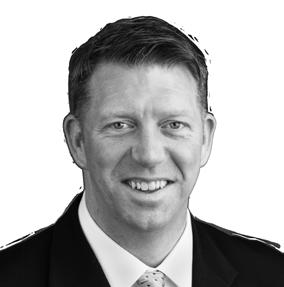
David McKillips SVP, In-Park Services
Six Flags New York, NY
said he’d love to work there someday. Ehrlich called him and said they had a sales position. Although he never thought he would be in sales, he leapt at the opportunity.
For nearly a decade, McKillips worked in advertising and promotions for the comic book juggernaut in New York City. DC Comics—known for its iconic characters, including Superman, Batman, Wonder Woman, the Flash, and the Green Lantern— offered McKillips the chance to move up the ranks. He became the associate publisher of the company’s humor title, Mad magazine, and then ultimately was promoted to the position of vice president of advertising and promotions for all of DC Comics.
His full-circle moment occurred in 2000, when McKillips developed a comic book map for Six Flags in partnership with DC Comics, since the parks feature thrill rides titled after characters in the DC Universe. He sold advertising and promotions within the comic book map and established a great relationship with Six Flags. Then, the management team changed in 2007, and the company asked McKillips to join Six Flags to help form a new partnership group. “I thought it was an incredible, exciting opportunity to combine both facets of my career,” he says. “I had theme park experience, which I loved, and I had experience working with the DC superheroes properties, which I loved, and now I could do both.”
McKillips jumped aboard and created the Six Flags media networks, the sponsorship arm of the new management team that would introduce a new era of company growth. “We have a lot of fun,” he says. “We created incredible corporate alliances with great brands such as Coca-Cola, Cartoon Network, and M&M’s. We also worked with all the movie studios. I was involved with all of the negotiations and partnership discussions related to intellectual

A
New Paradigm In Guest Convenience








ScooterBug and Best Lockers provide innovative guest mobility and secure storage locker solutions to the leisure and entertainment industry. With customers around the globe, we understand how to integrate our unique turnkey solutions to help enhance the guest experience while also creating new revenue streams for our customers.






























property incorporation and creating the programming that aired on Six Flags’ in-park TV network.” McKillips’s team has also brought in retail brands and in-park restaurants, such as Johnny Rockets and Cold Stone Creamery. For eight years, McKillips expanded the partnership group to drive revenue and promotions. Then this past year, he switched from the sponsorship sales team to his current role heading in-park services. “My job is to complement that incredible experience our guests have on our award-winning rides with a great experience in our restaurants, retail locations, and games,” he says. “I’m looking at trends throughout all of entertainment, dining, and retail, and thinking about how we can approach the business dynamically in each one of those areas.”
In terms of the number of outlets and meals served, Six Flags is more or less a top one hundred restaurant in the United States, according to McKillips. That means that food and beverage innovation is key at the biggest regional theme park company in the world. He considers all the details, from line speed to menu management, to build strategic efficiencies. “We also make every effort to regionalize our concepts, especially around food, because the flavor profiles are a little bit different depending on what market you are in,” McKillips says. “For example, if you live in Northern California, you may have a burger with avocado and bean sprouts, while in New Jersey your burger is topped with bacon and cheese and even Taylor Ham.”
Six Flags expands its operating season past the primary summertime season with year-round events, featuring specialty menus and themed attractions. Mardi Gras celebrations are taking place this spring at Six Flags Fiesta Texas and Six Flags Mexico. The company also is home to the largest Halloween event in the theme park industry, Fright Fest. The company is expanding its footprint even further with its Holiday in the Park program, an immersive wintertime experience currently in nine parks with millions of twinkling lights, snow hills for sledding, holiday-themed shows, and seasonal flavors such as red velvet funnel cake.
“These signature events are so much fun not only for our guests, but for our employees as well because we get to play in all four seasons. We want to introduce new treats and experiences each spring, summer, fall, and winter,” McKillips says. “We want people to get excited about coming to our parks. Come for the rides, but stay for the total in-park experience.”

The Race for Fast Fashion
Britton Russell leads Charming Charlie into the fast-fashion retail model
By DAVID LEVINE
Although fast food has a long-established history, the concept of fast fashion is still only beginning to gain widespread attention outside of the retail world. In the ever-more competitive fashion marketplace, retailers are striving to shave time from production cycles to meet—or lead—trends that consumers want now. That’s the focus of Britton Russell, senior vice president, chief supply chain officer, for Charming Charlie.
Launched in 2004, Charming Charlie is known for its fashionable and affordable selection of earrings, necklaces, bracelets, handbags, clothing, and other items for girls and women of all ages. The retailer’s four hundred stores, which immerse customers in a vibrant environment and organize merchandise on the sales floor by color, are located primarily in shopping centers and outlet malls across the United States, Canada, and internationally.
The fast-fashion model was first championed by companies such as Zara and H&M. Russell is currently working to implement this strategy with Charming Charlie. He joined the Houston-based company in 2014, bringing with him a long résumé with stops at leading retailers all over the world.
Russell grew up in Oregon and went to Duke University (and is still a big Blue Devils
basketball fan). After college, he wanted to move back to the Northwest, so he took a job at Nike as a production scheduler. “I tracked shipments all around the world,” he says. “I got into it by accident but loved it.” He then became a sourcing manager and worked in product development and logistics and distribution. He was with Nike for about four years and then went to a global retail and consumer products consulting firm in Atlanta. He spent four years overseas, in Tokyo and Hong Kong, and then returned to the United States and became partner of the firm. After that, he served as an executive in supply chain management for The Home Depot, Mexx (a division of Liz Claiborne), and Michael Kors, in addition to overseas assignments in China and Europe.
At Charming Charlie, his role covers a broad set of areas: product development, sourcing, quality, logistics, distribution, and customer service. “Some of those areas we are actively changing; some we are maintaining,” he says. “You go through the priorities of the business, and that’s where I focus my attention.”
One of the areas Russell is changing to move toward the fast-fashion
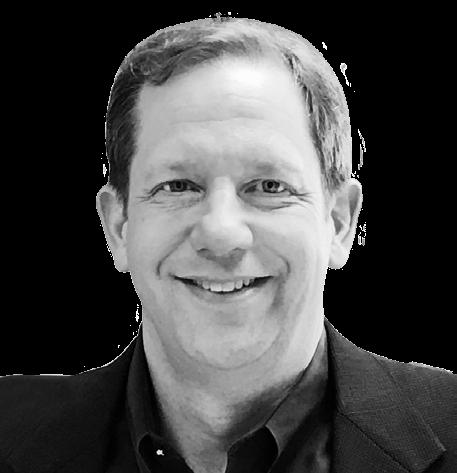
Britton Russell SVP, Chief Supply Chain Officer
Charming Charlie Missouri City, TX
model is sourcing. “We are building closer relationships with direct suppliers and also making sure we are using US-based suppliers, with the right balance between the two,” he says. In this capacity, the company opened a sourcing office in Shanghai to create a local presence and ensure quality with direct suppliers. More recently, Russell has focused more on logistics, working to ship directly from its suppliers to overseas franchisees.
Now, it’s all about fast fashion and speed. “How do you compress lead times?” he says. “How do you lead trends and still make decisions on new products in a relatively short time?” To do that, Russell is focusing on improving management of supply and demand. So, Russell is looking at the existing demand and projecting what products will be needed. This, he says, will increase accuracy, reduce lost sales or mark downs, and make for a more efficient business model.
To begin, Russell looks to streamline approval processes. “How do you take out layers of approvals? You help others understand what the clear guidelines are, so they can make decisions,” he says. “You can also use technology, through visual representations or pictures, to monitor quality and also make sure materials and inventory are available when they are needed.”

THE RACE FOR SPEED
For the past twenty years, fast-fashion brands such as Zara and H&M have outperformed traditional clothing retailers such as the Gap. In fact, both Zara’s and H&M’s market capitalizations are more than twice the Gap’s today.
Britton Russell sees many benefits to moving toward this model. First, it can make Charming Charlie faster on trends by allowing its teams to react and have product in stores much faster, to buy later to learn market trends, to have greater product insight through increased buying cycle, and to have greater accuracy in styles and quantities purchased.

“It’s amazing how fast retail is changing. . . . You make sure you are changing as fast as the retail environment is changing, to keep pace and stay ahead.”
BRITTON RUSSELL
Overall, Russell describes the move to fast fashion as a three-phase project. The first phase looked at eliminating excess time in the process. “For example, if a manufacturer can make a product in eight weeks and we were ordering it for twelve weeks, we take that extra time out and move it to the schedules that products should take,” he says. “We then manage exceptions outside of that.”
The second phase, which he says is a bit harder, is working on more sophisticated improvements, such as picking suppliers to compress production cycles. “We reduced our time by about 25 percent in the first year and realized we could see a significant improvement if we can also get inside the time frame of a season,” he says. “If I can order now and get the product in season, that is a huge advantage. We are currently working to get inside that seasonal window for some initial products.” After that, phase three will involve trying to get an even bigger percentage of products inside that seasonal window.
Russell says he doesn’t necessarily have a leadership philosophy—but he does have strategies. “I tend to be a big believer in regular feedback on performance, using quantitative metrics that we track,” he says. “I tend to meet with my reports on a weekly or biweekly basis. We discuss the things we expect them to do, which are linked into each person over a quarter, typically—where they
are, are they getting it done or not. I focus less on the day-to-day, and more on what moves us as an organization.”
In retail, organizations have to move fast. “As we came out of the holidays this year, it was amazing to see how fast retail was changing,” he says. “Department stores performed poorly over the 2017 holiday period, online shopping increased by 15 percent from the previous year, and Amazon increased by 22 percent.”
To stay up to date, Russell and Charming Charlie are staying on their toes. “You make sure you are changing as fast as the retail environment is changing, to keep pace and stay ahead of the changes,” he says. “That’s part of my responsibility, and it’s exciting.”
Imoshion Handbags is honored to partner with Britton Russell, senior vice president and chief supply chain officer of Charming Charlie!
Imoshion Handbags is a luxury vegan handbag line based in downtown Los Angeles. Its modern sensibility paired with European styling and cruelty-free credo has sparked the interest of countless Hollywood stars and artists alike. You can find Imoshion Handbags at independent boutiques and select department stores throughout the country or by visiting www.imoshionstore.com.
LF Logistics is a proud partner of Britton Russell and the Charming Charlie logistics teams in Asia and the United States. We understand the business needs of the fashion industry and we are always one step ahead to provide our customers with the ultimate logistics solutions.
Congratulations to Charming Charlie and Britton Russell on their recognition by Profile. We look forward to our continued relationship.
LF LOGISTICS



Over 80 years experience with unique and expert design, the most innovative technology, top-of-the-line logistics, we bring high-quality trendsetting fashion accessories to our customers.
Eric Cohen Exec VP of Sales and Marketing
385 FIFTH AVENUE, STE 609 NEW YORK, NY 10016
T: 516.277.0202 I F: 516.277.0302 ERIC@NYSFASHION.COM

LF Logistics, a wholly-owned subsidiary of Li & Fung, is a leading logistics provider specializing in key verticals of Footwear & Apparel, FMCG, Food and Beverage, Retail, Electronics and Healthcare. We handle nearly 400 brands worldwide, operate more than 230 distribution centers, ship more than 600,000 ocean containers yearly and deliver over 100 million units of consumer products each day.
SERVICES
• Distribution Center Management
• Transport Management
• Freight Forwarding
• Hubbing & Consolidation
• Omini-Channel Services
• Order Management Services
• Value Added Services

BANGLADESH


EARTH’S BOUNTIFUL ENERGY SOURCES WOULD BE OF LITTLE USE TO US WITHOUT PEOPLE WHO KNOW HOW TO CHANNEL THEM. THESE FOUR EXECUTIVES HARNESS OUR PLANET’S NATURAL RESOURCES TO POWER THEIR COMPANIES AND FUEL OUR DAILY LIVES.
Anchored to the People
CPS ENERGY’S FIRST FINANCIAL EXPERT TO TURN CEO REFLECTS ON YEAR ONE AND WHAT’S TO COME
BY JENNY DRAPER
PAULA GOLDWILLIAMS CEO CPS ENERGY
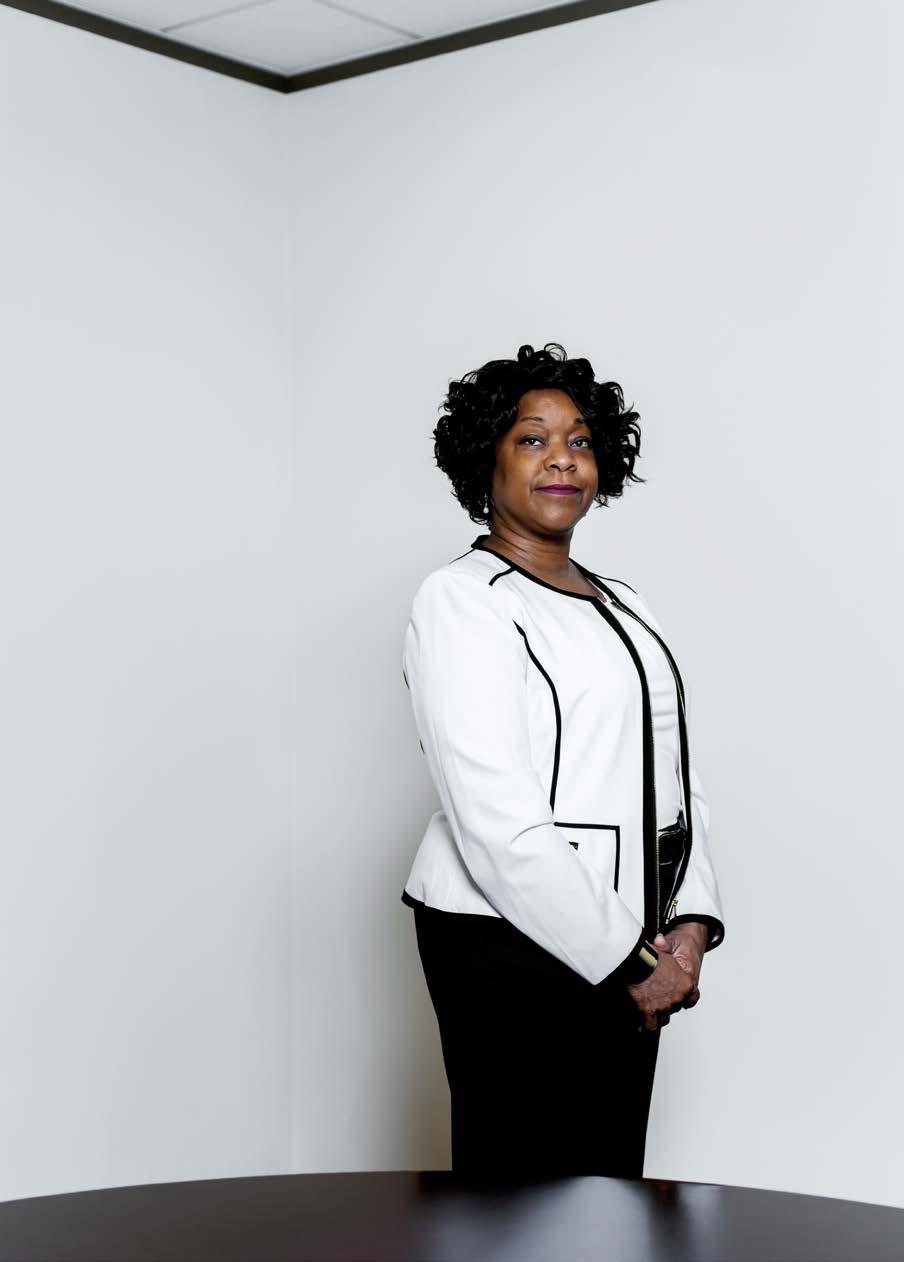
hen the national search began for a new CEO at the largest gas and electric municipal utility in the United States, its financial leader spoke up. “I asked if I could run the company in the interim while the board thought about who they wanted,” says Paula Gold-Williams, who assumed that a candidate with an engineering background might be preferred. Yet nine months later, she officially took the helm of CPS Energy in July 2016. “When I started my career in accounting, I never envisioned that I would end up running a billion-dollar company,” she says. “But it has been a great ride, and I am honored to do what I do today.”
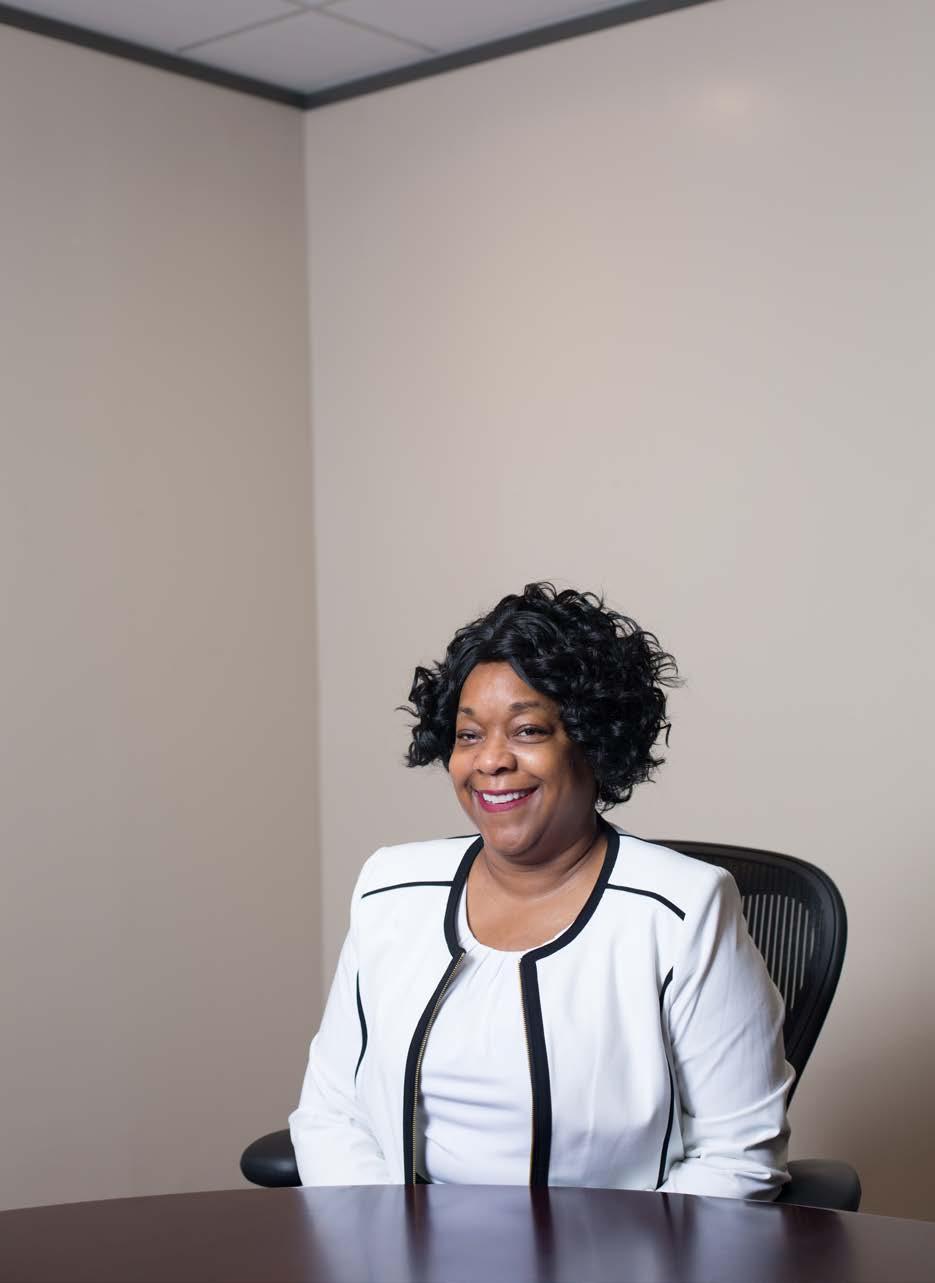
instead of fracturing all that energy apart, I look to pull it all together.”
CPS Energy provides service to more than 800,000 electric and 340,000 natural gas customers in the greater San Antonio area. Furthermore, it has almost $11 billion in assets and generates $2.5 billion in revenue annually. The Texas community, the seventh largest in the nation, serves as primary direct investors for the fully integrated company that ranks number one in the state for solar generation and among the top wind energy buyers. From distribution lines to call centers to its diverse energy portfolio—wind, solar, coal, gas, and nuclear—CPS Energy does it all.
Yet Gold-Williams knows none of it is possible without the company’s workforce. “People here have long, rich histories,” she says. “They’re phenomenal. They go out in the storms, in harsh, hot weather, and they’re keeping all of this infrastructure maintained for thirty, forty, fifty years. My focus is on our talent and on our growth, using the exponential value of our more than three thousand employees, and
Gold-Williams’s first year as president and CEO for the 157-yearold company marked a period focusing on stability and confidence for these employees during the leadership transition. Entering her second year, Gold-Williams seeks to maintain that strong focus on customer service and innovation as the energy industry moves toward intense changes in the next five to ten years. “Much like the telephone industry shifted from landlines to cellular, the Internet of Things is branching out within the energy business,” she says. “We have a wonderful opportunity to take this company into the next 157 years and build energy solutions that people really haven’t been accustomed to before.”
Although renewables seem to be the industry’s hot topic, CPS Energy already has more than one thousand megawatts of wind and over five hundred megawatts of utility-scale and distributed solar. Gold-Williams says the company is also thinking beyond the current scope to explore new types of technology, from energy storage to smart grid systems. In fact, this year CPS Energy is focused on several Smart City projects such as new environmental sensors and smart streetlights, as well as growing partnerships with the local water and transportation companies.
CPS Energy also performs on the global stage, according to Gold-Williams. The company partners with leaders in the New Energy Economy (NEE), including solar and inverter companies,
“THERE’S A LOT OF BENEFIT IN COMING INTO OUR INDUSTRY NOW, AND CPS ENERGY IN PARTICULAR IS EMBRACING ALL THAT. WE WANT GREAT PEOPLE TO COME IN THE DOOR WHO DON’T HAVE A LOT OF BOUNDARIES AND WHO WANT TO GROW DEEPER ROOTS AND WIDE BRANCHES.”
that implement green initiatives in South Korea and Germany, as well as across Africa, Central America, South America, and North America. “It’s fascinating that our community attracts global technology companies to support economic development,” Gold-Williams says. “It helps us think about growing the energy business going forward. We are regionally confined, but we’re not confined in terms of talent.”
Gold-Williams describes CPS Energy as an engineering analytics company whose engineers span electrical, mechanical, environmental, civil, industrial, and nuclear disciplines. As the company’s former chief financial officer, treasurer, chief administrative officer, and controller since 2004, Gold-Williams says she became bilingual: she translates the engineers’ technical perspective into the business model. “I measure the impact both quantitatively, because I’m an accountant, and qualitatively, because I focus on our people,” she says.
As a non-engineer, Gold-Williams maintains that the energy industry offers a great growth career for any range of talent. “The industry will train good people who are willing to learn and have a deep level of curiosity,” she says. “There’s a lot of benefit in coming into our industry now, and CPS Energy in particular is embracing all that. We want great people to come in the door who don’t have a lot of boundaries and who want to grow deeper roots and wide branches.”
Although her parents didn’t have the opportunity to attend or finish college, Gold-Williams says that her family placed a high value on education. For that reason, she went on to earn an associate of fine arts degree from San Antonio College, a bachelor’s degree in
business administration from St. Mary’s University, and a master’s degree in finance and accounting from Regis University.
She describes her background as eclectic because of her immersion in so many different industries, including telecommunications and cable, banking, mining, food service, and theater operations. Gold-Williams also gained IT and HR experience while focusing on tech security and implementation of payroll and financial systems. “I learned more about human behavior, how people think, and how you can use your performance management system to encourage people to be better fulfilled,” she says.
Before joining CPS Energy, Gold-Williams was a regional controller for Time-Warner Cable and vice president of finance for Luby’s Inc. She remains a certified public accountant and a chartered global management accountant. “Accounting is a vehicle to learn how the business utilizes its money to go forward, so I’ve been able to jump into different organizations and really understand where the value is and what’s important,” she says.
At CPS Energy, Gold-Williams aims to provide alignment, clarity, focus, and execution, all while leading without pretense and focusing on both mentorship and bilateral relationships with her teams. “My priorities are engaged employees, customers whom we value highly, and supporting the community in which we live, anchored through the prism of an evolving business that’s changing right in front of us,” she says. “My background in different industries, and being flexible and exposed to a lot of different thinking from technical, creative, and strategic people has really put me in a position where I’m able to manage through this complexity but get a great deal of clarity along the way.”
Digging Deep
HOW PETER PAPPAS CREATED OPPORTUNITY FOR BOSQUE SYSTEMS DURING AN ECONOMIC DOWNTURN
BY ALEX STEWART
hen gas prices dropped dramatically in 2015, after volatile surges the previous year, Peter Pappas knew that’d he’d have his work cut out for him. Having served the oil and natural gas industry for the past four years during an upcycle, he knew changes were coming, and he was the one responsible for making them. In turn, he thought back to his previous positions to assess solutions for maintaining and increasing his company’s book of clients.
Before joining Bosque Systems, Pappas worked at several national insurance companies. His first job was in Blue Cross Blue Shield in Oklahoma’s management training program. There, he learned how to work with business owners and how they thought, walked, and talked. After a year, he joined a local insurance intermediary group as a producer and was quickly promoted to vice president. The group was then purchased by the multinational Willis North America, where Pappas spent seven more years. In this role, he worked with executive teams as a broker-consultant to design and implement risk-management and benefit solutions. That position taught Pappas how important and difficult differentiation can be. He also learned an important principle of creating value: understand your customers’ needs before selling a product.
During his time at Willis North America, Pappas reconnected with an old friend from his high school days, Clane LaCrosse, whose saltwater disposal company was working with Willis. The two would bounce ideas off each other. LaCrosse asked for advice about managing sales and company growth, and Pappas would inquire about services and his day-to-day approach to his work. After a couple of years, LaCrosse asked Pappas
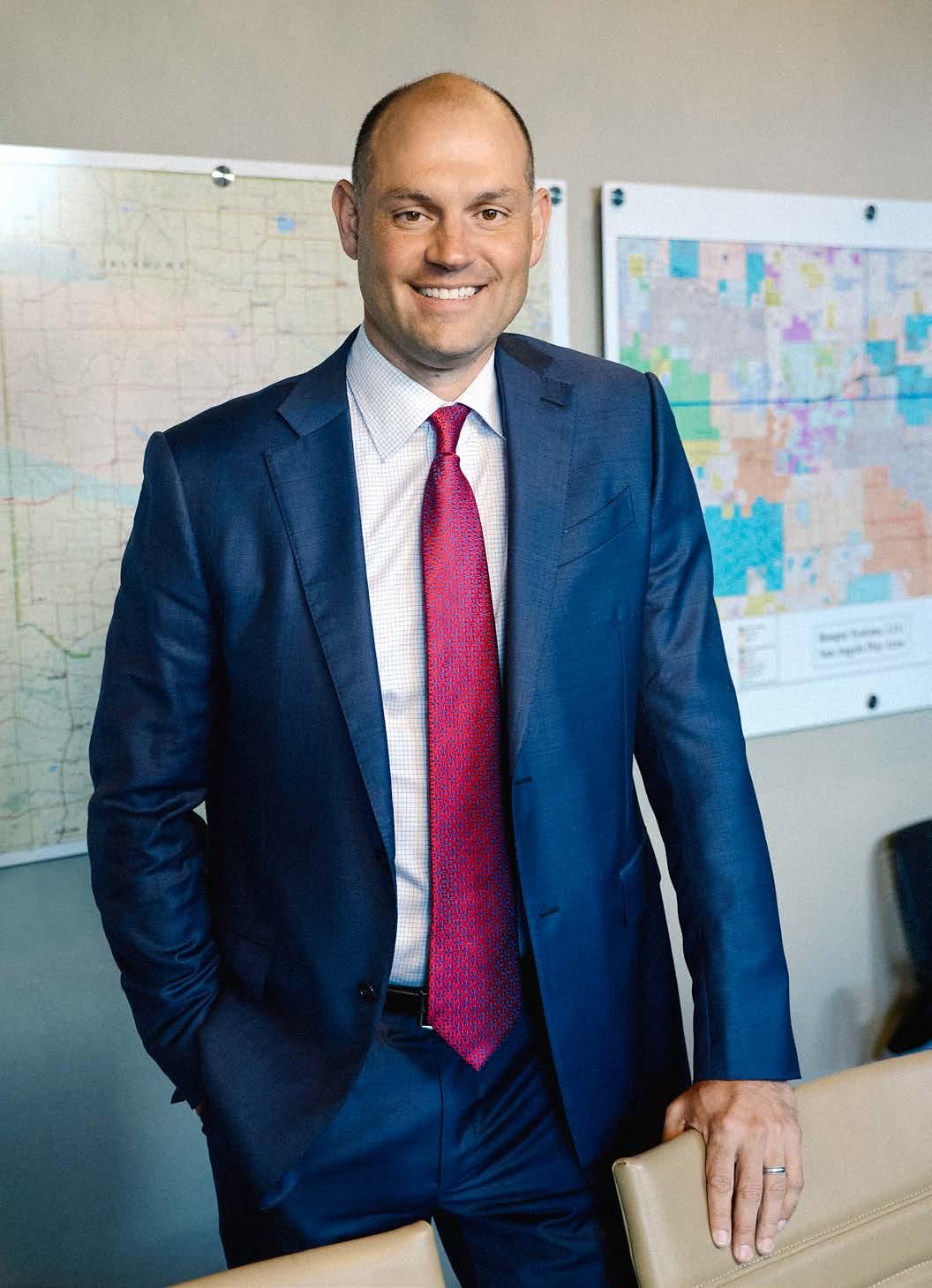
Limerick
PETER PAPPAS VP, GROWTH AND BUSINESS DEVELOPMENT
BOSQUE
SYSTEMS
to join his team, and Pappas accepted the challenge.
“I was in a pretty comfortable place financially with Willis,” Pappas says. “But I also was starting to become a little bit restless. I was ready for a new challenge.” So in 2011, he joined the fledgling Bosque Systems in Fort Worth, Texas. Today, as the vice president of growth and business development, he manages individual market leaders, new business opportunities, and growth across the company’s current and emerging markets. He also oversees Bosque’s marketing and sales teams.
Bosque Systems is a fluid management provider that serves the oil and natural gas industry. With seven markets across the country, the company works with some of the largest oil and natural gas well operators. When the company was founded in 2007, Bosque’s first line of business was saltwater disposal because owners LaCrosse and Joe Mitchell noticed major changes in the Barnett Shale’s oil and gas industry. The increase in activity required more saltwater disposal capacity than was available in the region, which led the company to build its first saltwater disposal site, named Bosque, in Cresson, Texas.
As oil and natural gas production in North America increased in the early 2010s, the demand for water recycling services grew even larger. The hydraulic fracturing method
“WE TOOK A DIFFERENT APPROACH THAT REALLY WASN’T BEING DONE IN THE INDUSTRY AT THE TIME. WE COULD REACT QUICKLY. WE’RE INNOVATIVE WHEN IT COMES TO THE TECHNOLOGY THAT WE USE TO CLEAN WATER.”
BIG SAVINGS

employed by oil and gas operators relies heavily on water, and until this time, operators had been sourcing from lakes, ponds, rivers, and municipal supplies. Freshwater shortages and sustainability concerns bred a market for water recycling options. Bosque forecasted the industry’s new demand and was able to quickly adapt its business model to accommodate by switching to a consultative and solutions-based business model.
Bosque’s services now provide full, water life-cycle management, which includes environmentally responsible practices in recovering, transporting, storing, treating, recycling, and handling pre-frac, flow-back, and produced water and other fluids in the oil field.
All of this was possible, Pappas explains, because of the company’s small size of about three hundred employees. Having only worked at large corporations up to this point, the surprising agility of this young company was a new thrill, and it turned out to be a significant advantage in helping the company stay afloat when oil prices plunged. Bosque quickly shifted from a corporatecentric model to a regional one. This enabled the organization to make adjustments in individual markets quickly, without affecting other regions.
Pappas also reemphasized the company’s consultative approach to business during this time. “Needs changed during the downturn,” Pappas says. “We pivoted as an organization. Rather than try to push a product, we instead asked, ‘What are your problems, and how can we help solve them?’”
Pappas’s tenacious attitude and persistence worked. Not only did Bosque Systems maintain its client base, but it actually grew. “We took a different approach that really wasn’t being done in the industry at the time,” he says. “We could react quickly. We’re innovative when it comes to the technology that we use to clean water.”
Bosque’s highly entrepreneurial environment and the constant challenge that comes with working for a smaller organization are what drive Pappas. This economic downturn also made him a better listener and a more strategic solutions provider. “What are the operators’ needs?” Pappas asks. “Let us provide the solutions.”
Enterprise Fleet Management wants to congratulate Bosque Systems for its exceptional service recognition! Enterprise helps Bosque Systems manage its company vehicles—from financing and delivery, to vehicle maintenance and resale. Together with its affiliate, Enterprise Holdings, Enterprise Fleet Management owns the largest fleet in the world, enabling the company to offer cost savings along with peace of mind and convenience. Enterprise Fleet Management values its relationship with Bosque Systems and is proud to be a long-standing partner.
Enterprise Fleet Management provides full-service vehicle management services for companies, government agencies and organizations operating medium-sized fleets of twenty or more vehicles, as well as those seeking an alternative to employee reimbursement programs. Enterprise Fleet Management is comprised of local, dedicated account teams to help companies minimize operating challenges and reduce fleet expenses.



High-end Metal Manufacturing-PV Accessories & Professional Aluminum Manufacturer
Akcome as the largest photovoltaic accessory supplier with leading strength in China, AKCOME is engaged in the manufacture of photovoltaic accessories and equipment. On one hand, it is engaged in the manufacture of accessories such as frame and profiles, solar cells, EVA new materials and PV ribbon and other photovoltaic modules; on the other hand, it manufactures complete equipment such as modules and system brackets for solar power stations. Several products take lead in the industry.
alu@akcome.com | en.akgroup.com.cn/
HOW SUNPOWER CORPORATION HAS DEVELOPED A PROCESS TO WIN TOP HONORS FOR MANUFACTURING AND SUPPLY CHAIN EXCELLENCE
BY RUSS KLETTKE
ot all solar panels are made in environmentally responsible ways.
But SunPower Corporation, a leading US manufacturer, has developed a process to win top honors for manufacturing and supply chain excellence.
Except for people who work in the sustainability professions or its advocates, perceptions of solar energy have typically been narrow. For much of the population, solar power is embodied in the visible solar panels seen on higher-priced homes and a few commercial buildings.
Those perceptions might be changing as an increasing number of utility-scale solar farms are being built in the United States and around the world, with each installation powering hundreds of thousands of homes. And although detractors have rightfully criticized some of the less-than-green manufacturing methods in creating solar cells, engineers have taken some companies to a cleaner, cradle-to-grave process that overcomes those criticisms.
The United States’ second-largest solar manufacturer, San Jose, California-based SunPower Corporation, provides ample evidence of how these perceptions should be—and are—changing.
Armed with more than six hundred patents related to solar technology, the organization played a large role in adding
9.5 gigawatts of utility-scale solar power in the United States in 2016. In 2015, SunPower supplied what it calls its Oasis Power Plant technology to two Los Angeles-area projects, Solar Star 1 and Solar Star 2, which are installed across 3,230 acres, use 1.7 million SunPower monocrystalline silicon photovoltaic panels, and provide enough energy to power 255,000 homes—the clean power equivalent to removing two million cars from the road over twenty years.
Of note, the SunPower setup includes panel-cleaning robots that use 90 percent less water than manual methods. This shouldn’t be surprising to anyone familiar with the manufacturing of the company’s equipment: resource-use reduction is part of an overall ethos at the company.
SunPower’s vice president of chain and chief procurement officer, Mike Kienitz, is known to champion green sourcing. According to a recent article in Supply Chain World magazine, the solar manufacturer spells out expectations to its vendors. “We’ve tried to focus on aligning with suppliers,” Kienitz told the publication. “Especially in terms of quality, technology, having the right locations, and the ability to scale with our business.”
That management of the supply chain not only makes for better performing products, but it also satisfies life cycle assessments now being made by watchdog agencies. A San Francisco-based nonprofit, the Silicon Valley Toxics Coalition (SVTC), publishes an annual “Solar Scorecard” that ranked SunPower number one globally in 2015 for its performance as a manufacturer.
The scorecard evaluates solar panel manufacturing emissions; chemical toxicity; water use; recycling; workers’ rights, health, and safety; energy use in manufacturing; and conflict mineral nonuse, as well as how these factors occur in the supply chain. Only three companies—including SunPower—qualified as leaders with a total score of ninety or more on a hundred-point scale. A dozen companies were rated as average (50–89 points), seventeen solar manufacturers rated below average (15–49 points), and eight companies scored below fifteen.
Still, name brands such as SunPower face headwinds in the marketplace because of those low-ranking, discount manufacturers—largely based in China—that have cut corners—and prices—by tactics such as dumping waste into open landfills and wastewater into watersheds. European and American manufacturers have stricter regulations that disallow such practices.
Leading companies such as SunPower bear the burden of communicating these differences to end-users. The SVTC serves as a resource to consumers and institutional purchasers, while the LEED certification system also encourages use of responsible photovoltaic manufacturers. SunPower’s responsible manufacturing also achieved Cradle to Cradle Certified Silver standards in 2016, which assesses products across five categories: material health, material reutilization, renewable energy use, water stewardship, and social fairness.
Once past the manufacturing stage, the application of photovoltaics pays big
Mike Kienitz, Chief Procurement Officer, SunPower

“WE’VE TRIED TO FOCUS ON ALIGNING WITH SUPPLIERS, ESPECIALLY IN TERMS OF QUALITY, TECHNOLOGY, HAVING THE RIGHT LOCATIONS, AND THE ABILITY TO SCALE WITH OUR BUSINESS.”
Celestica enables the world’s best brands.
As our customers look for opportunity in a world of rapid change and technology disruption, they trust us to deliver the most advanced design, engineering, and manufacturing expertise for their highly sophisticated and complex products with industryleading quality and reliability.
www.celestica.com
dividends to those who have it. Whether it be through Power Purchase Agreements (PPAs, or investor-owned installations that provide benefits to owners of roofs on which they are installed) or outright ownership, lower-cost electricity is now available at parity with coal and other fossil fuel sources in many areas.
That works exceptionally well for big-box stores and warehouses, where ample roof space is available. But schools and nonprofits benefit as well, in ways that are intrinsic to their respective missions.
For example, the Sustainable Food Center of Austin, Texas, now has a fourteen-kilowatt solar power system that was donated by SunPower and its local dealer, Freedom Solar. The environmentally oriented food organization provides access to nutritious, affordable food and now has electrical costs lowered by 40 percent thanks to the thirtysix high-efficiency SunPower solar panels.
Other examples include school districts both in the United States and abroad. The Colton Joint Unified School District in southern California used a PPA to install SunPower Helix carport systems, which shade parked
cars while collecting 6.1 megawatts that will provide 73 percent of the district’s electricity. It is expected to save the district $35 million over twenty-five years.
A variation on the carport is the “cow-port,” a solar installation that provides shade for up to two thousand dairy cows on a farm in Casa Grande, Arizona, while collecting lower-cost electricity to power farm operations. Also using a PPA, the dairy farm expects to save more than $500,000 in electricity charges over the next twenty years.
Partnering with nonprofits such as Twende Solar and Grid Alternatives, SunPower and its employees also engage in bringing solar energy to families and schools in need, particularly those in the developing world. These partnerships are committed to donating more than two megawatts of high-efficiency solar panels over three years.
Perhaps part of the reason solar has a perception challenge is that it goes unseen on so many roofs. Maybe more of us need to look up.
SOUTH JERSEY INDUSTRIES’ TREASURY
DEPARTMENT NAVIGATES VOLATILE MARKETS AND TIGHT REGULATIONS TO HELP THE COMPANY REACH ITS GOALS
BY JEFF SILVER
n 2015, South Jersey Industries (SJI) CEO Michael Renna set out an ambitious goal to reach $150 million in economic earnings by 2020, to reduce the company’s reliance on investment tax credits, to maintain a low-to-moderate risk profile, and to strengthen the balance sheet. As the holding company for a regulated gas utility, South Jersey Gas Company, and several nonutility businesses, significant capital expenditures are essential to grow SJI—and to improve service and benefits to its approximately 377,000 utility customers.
Much of the responsibility for that growth falls on Ann Anthony, SJI’s vice president and treasurer. Because utilities are so highly regulated, she faces some unique challenges. For example, SJI doesn’t generate profit on its sales of natural gas supply. “We earn a set return for each customer and can earn a return on capital improvements,” she says. “By investing in improvements, growing our rate base, and focusing on customer growth, we increase net income.”
Another recent nonregulated capital investment is its PennEast Pipeline project, a new 120-mile pipeline designed to provide an affordable energy source to families and businesses in New Jersey and Pennsylvania. SJI is a 20 percent equity partner in the project. “When the business people are negotiating the deal, treasury is behind the scenes figuring out how it’s going to be paid for,” Anthony says. “My responsibility is to understand the business need and find the means to support the strategy.”
Like any corporate financial professional, that means determining the optimal balance between internally generated funds and a blend of debt or equity. For Anthony, it also means following strict compliance requirements, such as segregating finances between the company’s regulated and
ANN ANTHONY VP, TREASURER SOUTH JERSEY INDUSTRIES
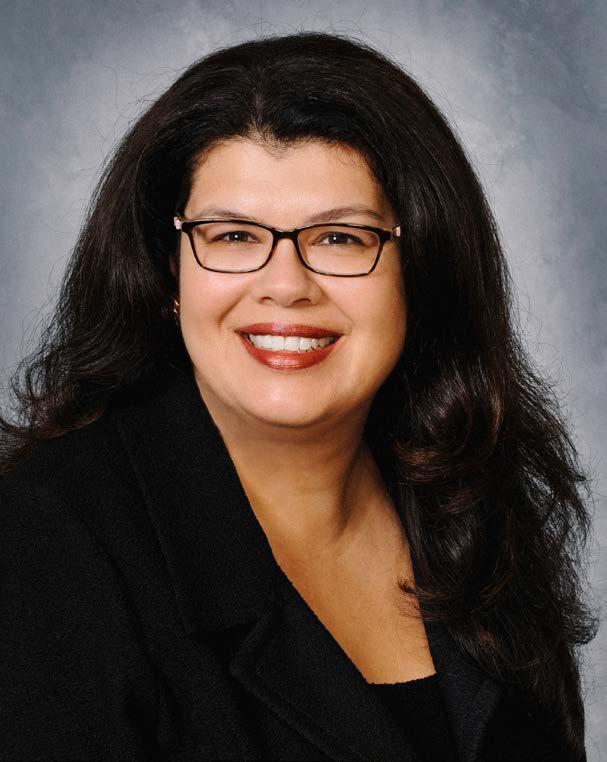
nonutility businesses and adhering to complex guidelines to access capital markets.
This process demands a great deal of forethought to accurately determine needs, balance priorities, and incorporate market trends. “It’s a balancing act to address all the pertinent factors,” Anthony says. “History helps guide us to a degree, but with volatile markets, it’s not perfect—and the regulatory process itself inserts lags into the process. So we constantly fine-tune our forecasts, look forward, and try to be as proactive as possible.”
Anthony must also sometimes carry out that balancing act within an extremely tight time frame. In one instance, the company made arrangements for $200 million in longterm private placement debt to be executed three months later. Those proceeds were intended to repay and extend an existing
$200 million bank term facility, which would close a week after the private placement. The company negotiated legal documentation for both facilities concurrently, and closing for the second facility predicated on closing the first, which left no room for delays.
To work through this, Anthony relied on her confidence and ability to work under pressure. “You can’t pick and choose your timing, so you have to be comfortable with your data, trust your team and your colleagues, and move forward,” she says.
To make sure the treasury team is well prepared to face most any eventuality, Anthony is a firm believer in having the right people in the right roles. Aside from helping them develop appropriate technical skills, she emphasizes soft skills that facilitate a team’s ability to work together.
To help broaden her own skills, Anthony sits on the boards of the Darlington Arts Center in Garnet Valley, Pennsylvania, and the Association for Financial Professionals. Both roles give her the opportunity to confront new challenges and develop insight into unique solutions. She is currently heading the search committee for a new CEO at the arts center, which demands very different capabilities than her role at SJI.
In turn, she encourages team members to find similar learning and growth opportunities. “Everyone should get involved in outside activities that align with their personal interests,” she says. “If you’re passionate about it, you’ll be more devoted, you’ll find it more rewarding, and you’ll grow in different ways than if you stick exclusively to your normal routine.”
“EVERYONE SHOULD GET INVOLVED IN OUTSIDE ACTIVITIES THAT ALIGN WITH THEIR PERSONAL INTERESTS. IF YOU’RE PASSIONATE ABOUT IT, YOU’LL BE MORE DEVOTED, YOU’LL FIND IT MORE REWARDING, AND YOU’LL GROW IN DIFFERENT WAYS THAN IF YOU STICK EXCLUSIVELY TO YOUR NORMAL ROUTINE.”
Despite all her expertise and experience, Anthony did not originally intend to focus her career on treasury. In fact, her career in the field came about as a bit of a fluke. In her first job after graduating college, she was placed in a management training program, and because the company treasurer was impressed with her interview, the company created a treasury rotation for her. At that point, Anthony was given three days to get up to speed on all the details of a newly acquired company and to begin integrating its financial processes.
“That’s when I got the treasury bug,” Anthony explains. “I saw that you have to touch the business in direct ways on a daily basis. I also realized that treasury makes history; accounting records it. I wanted to help make history.”
Wells Fargo congratulates Ann Anthony for being featured by Profile magazine. It is an honor to have Ann as a business partner and see all she has accomplished in her career. We’ve watched her successfully manage the financial matters that affect the company’s short- and longterm financial success, including banking relationships, cash management, and capital-raising activities. Ann is active in her professional life through leadership roles with the American Gas Association and the Association of Finance Professionals and she is also an active contributor to her community through the Darlington Arts Center. Her involvement and willingness to work to make a difference are what make Ann special and a great customer. Ann, we value our relationship and wish you continued success.
Great leaders inspire us

Leaders engage us, allow us to take chances, unite our voices, and transform our ideas into action. Wells Fargo congratulates Ann Anthony, treasurer of South Jersey Industries, Inc., for her passion and commitment to excellence. We’ve been honored to work with her and wish her continued success.

CULTURE

The DifferenceBig
McGraw-Hill Education’s Diane Adams explains how HR can foster engagement and build communities
Words by ADAM KIVEL Photos by KRISTIN DEITRICH
AAs she was being placed at a manufacturing plant for one of her first roles in human resources, Diane Adams was given some challenging news. “I’m getting feedback that the leader has a dictatorial style and that the people are incredibly stressed,” one executive explained. “I’m certain that only one of you will survive.”
Although that could be a scary challenge for any young professional, Adams was determined to make things work, to find a way to coexist and get the leader on the right path. She spent three months at the plant and then returned to the executive who had sent her there with a response: “You’re right. Only one of us.” Adams had looked around the plant at the five hundred or so people who were unhappy and unfulfilled going into work every day and knew that a change in leadership was required. “For me, that was a defining moment, realizing how grateful five hundred people are that you made a difference in their lives,” she recalls. The bouquet of flowers that showed up at her desk once that leader was let go was a moving reminder of that gratitude, and so were the happy faces and thriving workers that returned once a new leader was hired.
From that moment on, Adams knew that she could help people through HR and the development of a thriving corporate culture. “I always have a lot of passion for making a difference for one person, but in HR, you can also make a difference for tens or hundreds of thousands at once,” she explains.
Adams graduated from the University of North Carolina at Chapel Hill with a degree in business administration, and since then, she has taken those skills to companies across the technology sphere, including ties to her two loves: education and healthcare. However, her business administration degree ensures that while she focuses on improving life for individuals, she never loses track of the business. Early on, she joined Cisco Systems as vice president of human resources, supporting thirty-five thousand people, and from there, she moved to a chief human resources officer (CHRO) role for healthcare solutions leader Allscripts, and another with Qlik, an innovative data analytics company.
In November 2016, she took on the role of CHRO for McGraw-Hill Education, driven by her passion for bettering employees’ work lives and a more personal connection to the company’s work. Her daughter’s diabetes drove home her healthcare work at Allscripts, and her son’s experience as a nontraditional learner connects with her work at McGraw-Hill Education, which lets her see the impact the company’s work can have on individual learners. “That’s what McGraw-Hill Education is all about: helping learners reach their full potential,” she says. Adams sees unlocking that potential
Diane Adams CHRO McGraw-Hill Education Blacklick, OH
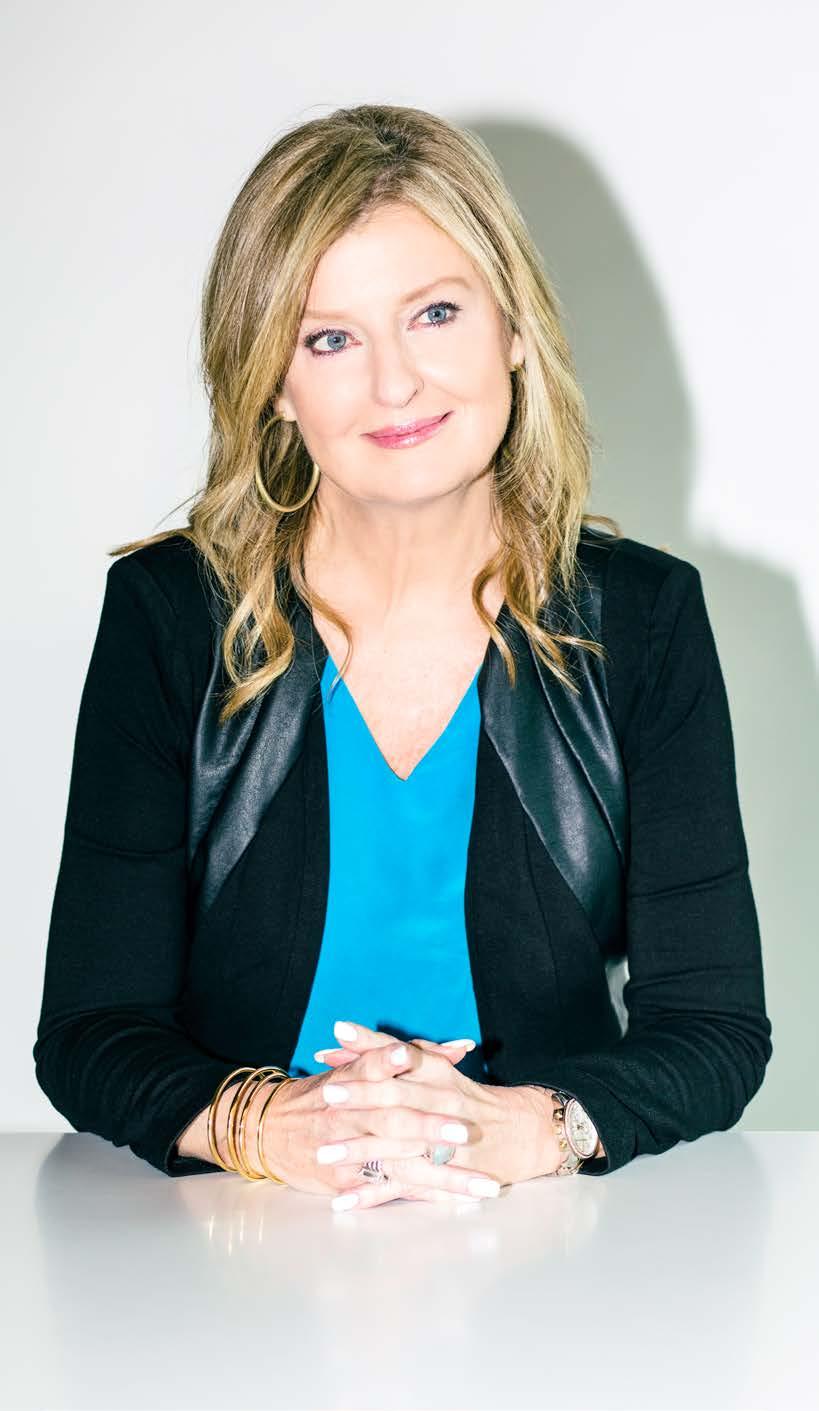
through culture change as a key role she can play in leading the human resources of the organization.
President and CEO David Levin recognized that potential right away. “From a values perspective, Diane and I immediately connected during her interview for this leadership role,” Levin says. “We both recognized that a thriving company culture that unleashes employee potential can be a great differentiator. Add to that, when you consider that McGraw-Hill Education understands how learning happens and is harnessing the power of technology to make learning more effective, personalized, and engaging, we know we have a powerful offer for our customers and employees.”
Beyond her passion for the subject, Adams explains that her own connection with leadership and the opportunity to create positive change has driven her career decisions. “McGraw-Hill Education has transitioned from a print-centric publishing company to a learning science company,” she explains. “Education is evolving, and so are we. Today, our company is developing digital content and data-driven, technology-enabled adaptive learning solutions. It’s a huge transformation. It’s the future.”
As part of that future, Adams is working to institute new programs that will make her colleagues excited to come into work and be inspired to make a difference in the world. To that end, she and the HR team are taking major steps to build culture and drive employee wellness. That comes from the top-down, as Levin encourages transformation. “We need to integrate those values into everything that we do,” Adams says. In her time with the company, McGraw-Hill Education has participated in many listening forums, meetings, and town halls that discuss the workplace culture. “In the listening forums, we do nothing other than say, ‘What is working well for you in this culture, what do you want to keep, and what would you like for us to change or improve?’” she says. Each quarter, Adams and Levin look at the results of these discussions and weigh potential changes.
Adams also notes that leadership has identified the core values that drive successful adoption of those changes. As the company continues to evolve, the first thing Adams recognizes is the need to remain agile and flexible. Being smart about taking risks and making sure that decisions are driven by intelligent data are important factors as well.
Another impressive initiative that Adams championed at previous employer Qlik is 24-For-U, in which employees take a day off to focus on personal and professional improvement. In fact, the idea came from her daughter. “We were brainstorming one day, and she said, ‘Mom, wouldn’t it be cool if everybody in the world could take one day off and just focus on getting better?’” Adams recalls. “I told her, ‘I don’t know that we can start with the world, but maybe one company.” After focus groups and approval from the CEO, that project has led to some amazing results.
WORK LIKE NOBODY’S WATCHING
Diane Adams explains that culture is what employees do when no one is looking, and it’s something that every organization has, whether they know it or not. But the companies that are intentional seem to have cultures that lead to better results.
To that end, she wrote the book It Takes More Than Casual Fridays and Free Coffee, in which she detailed practical advice for building a healthy culture and provided related exercises and assessments to identify company and personal strengths and weaknesses. “I got the culture question so much that I wanted to write the book,” Adams says. “When you realize that you can help one person in a company figure out how to do that, that’s important. The impact of being intentional and clear drove me to do it.”
Proskauer is a global law firm recognized for its excellence both in practicing law and serving clients. We are trusted advisors to many of the world’s top companies, financial institutions, investment funds, notfor-profit institutions, governmental entities and other organizations across industries and borders. With 700+ lawyers in 13 offices and approximately 50 areas of practice, we have the capabilities, experience and creativity to guide our clients through their most important legal and business challenges.




“If people have a sense of purpose beyond the company, where they’re making a difference, it gets people through the tough times,” Adams explains. Beyond rewarding, recognizing, and celebrating employees themselves, she notes that the organization helps those employees help others. As an example, Adams notes two employees who raised money with their team and went to Argentina to build a networking system for an orphanage. Another employee wanted to learn how to produce video and eventually produced a documentary on returning veterans. These examples then raised even more attention and funding once they were shared among the organization and put on the company website.
Having buy-in from leadership really made the 24-For-U initiative a success. In fact, a good leader can make quite the difference in a person’s life. “I always return to all the people that pushed me in my career,” Adams says. “Everybody has potential. My leadership style is to really push people as far as they can go.”
MILLENNIAL MIND-SET
“Most of my friends call me a baby boomer in denial,” Diane Adams says with a laugh. As a champion of the power that culture can have on a workplace, the chief human resources officer of McGraw-Hill Education finds that she identifies and agrees with millennials who typically place workplace culture high on their list of criteria when choosing a place to work.






As she’s traveled around the world to visit all of McGraw-Hill Education’s offices, Adams has been pleasantly surprised that so many people at a 129-year-old company are excited and open to change—and reinforcing that notion with personal gestures. “The first time I met with my team, they knew I love chocolate chip cookies and brought me a huge chocolate chip cookie. Another team knew I loved butter pecan ice cream, and someone brought it into our meeting. At an Ohio office, they gave me all their Ohio State gear,” she says, with a laugh. “They really embrace new people coming into the organization, and they clearly knew that my role was to continue shaping the culture.”
BTS is proud to partner with Diane Adams and other leaders from the world’s largest corporations to focus on the people side of strategy. At our core, we believe people learn best by doing. For thirty years, we’ve been designing fun, powerful experiences that serve a wide range of client needs and have a profound and lasting impact. We inspire new ways of thinking, build critical capabilities, and unleash business success. Learn more at www.bts.com.
HRchitect is the world’s leading HCM strategic consulting firm offering end-to-end HR technology consulting services focused around strategic planning, evaluation and selection, change management, implementation, project management, and ongoing support of HCM systems of all types including Talent Acquisition, Talent Management, Learning Management, Workforce Management, Benefits, and Core HR/Payroll. Over the past twenty years, we have helped thousands of clients across the globe, including McGraw-Hill Education, maximize their HCM technology. Let us help you next.

Proskauer’s Labor & Employment lawyers have a deep bench of experience in distinct practice areas covering every area of labor and employment law. The group handles the complete range of sophisticated litigation, trial, appellate, and counseling, as well as traditional labor relations and collective bargaining matters.
“Culture is a huge drive for millennials,” she says. “They want a whole life, and if you believe that you have a great whole life, you’re better in the workplace.” To that end, Adams stresses that her department is talent development rather than talent management and that McGraw-Hill Education’s culture is one that encourages personal development as well as professional. “My personal mission is to inspire and enable others to live extraordinary lives, both personally and professionally,” she says. “When people are at their best—inside or outside of the workplace—everybody wins.”


“If you don’t change, you get left behind.”
Teva Pharmaceuticals chief procurement officer Lisa Martin details why being flexible and open to change can lead to success and growth
By CHRIS GIGLEY
Lisa Martin does not shy away from big opportunities, and she is enjoying one now as senior vice president, chief procurement officer of the Israel-based company Teva Pharmaceuticals. Her work is driving value creation, cost reduction, and improvements in the procurement process—all in alignment with the company’s business strategy. In turn, she is changing perceptions about procurement.
Teva is a leading global pharmaceuticals company that delivers high-quality, patient-centric healthcare solutions used by millions of patients every day. It is also the world’s largest generic medicines producer, leveraging a portfolio of more than one thousand molecules to produce a wide range of generic products in nearly every therapeutic area. In specialty medicines, Teva has a world-leading position in innovative treatments for disorders of the central nervous system, including pain, and it has a strong portfolio of respiratory products, too.
It’s Martin’s job to partner with Teva’s various units to drive improvement in the overall business. Overall, her group manages about $11 billion in expenditures annually, which are split between indirect procurement and manufacturing-related procurement.
“We have implemented strategic category management, launched formal supplier relationship management and supplier diversity programs, and we are rolling out our new technology platform for a more efficient endto-end procurement process,” Martin says.
Martin joined Teva in April 2013. Prior to that, she served as a senior vice president at Pfizer, where she led worldwide procurement, real estate, corporate services, and facilities management for the commercial research and development portfolio. A big reason she was drawn to Teva was the chance to build a world-class procurement team.
Martin says there were already great employees in place when she arrived, but she has proceeded to bring in new talent to fill gaps in the organization.
Martin now manages approximately 550 employees scattered across thirty-five countries. That means she is always on the clock somewhere in the world.
“We have an intensive manufacturing and commercial network that drives the dispersal of talent,” Martin says. “The diversity of my team is important. Because of our geographic footprint, this is the most culturally diverse team I’ve ever worked with, and we have been able to leverage the culture differences and experiences.”
To ensure everyone on her procurement team works as efficiently and effectively as possible, Martin has instituted global standardized practices and an inclusive culture that gives everyone a sense of direction and purpose. Before, small teams that operated independently of one another handled procurement.
“There was no integrated, cohesive organization aligned around goals, ways of working, or culture that we’re now trying to drive,” Martin explains. “That’s the difference.”
Martin enjoys many parts of her job, including putting employees on paths to success and growth.
“I think part of the benefit of having a globally integrated organization is being able to provide colleagues with lots of opportunity for growth,” she says. “For someone who is a packaging person but wants to do business process work, having that globally integrated workforce gives us the ability to move people around more. I’m all for doing that.”
Martin also has a passion for supply management and enjoys being involved with all different departments and functions in one way or another. She has helped Teva’s procurement organization evolve from a transaction focus to a more holistic approach to efficiency and value creation.
Martin’s skill at tweaking the company’s infrastructure at the right time has been a big catalyst for her success. She has made the right changes to her department as regulatory and political expectations have risen and the market has continued to consolidate. Martin has also adjusted to risk management’s larger role in supply chain management.
“If you don’t change, you get left behind,” Martin says. “I’m not sure I’m ever satisfied. I’m always making sure we are as efficient and productive as we need to be and that we’re developing people and leveraging talent. I have to be. Teva has been a dynamic company for a long time and will continue to be.”
Much of that change has been driven by mergers-and-acquisitions activity. In August 2016, for instance, Teva announced it completed its acquisition of Allergan’s generics business, Actavis Generics, which improved international commercial opportunities and significantly enhanced the global scale of its sales and R&D platforms. Also, in August 2016, Teva announced its acquisition of Allergan’s Anda Inc., the fourth-largest distributor of generic pharmaceuticals in the United States.
“In my thirty-plus-year career, I don’t think I’ve been at a company that hasn’t been bought or sold,” she says. “Having a lot of personal experience helps. I know if you’re on the buying side, it’s a good opportunity to infuse talent and best practices into the organization. You have to stay open during that process.”
“I’m always making sure we are as efficient and productive as we need to be and that we’re developing people and leveraging talent. . . . Teva has been a very dynamic company for a long time and will continue to be.”
LISA MARTIN
Lisa Martin SVP,
Chief Procurement Officer
Teva Pharmaceuticals North Wales, PA
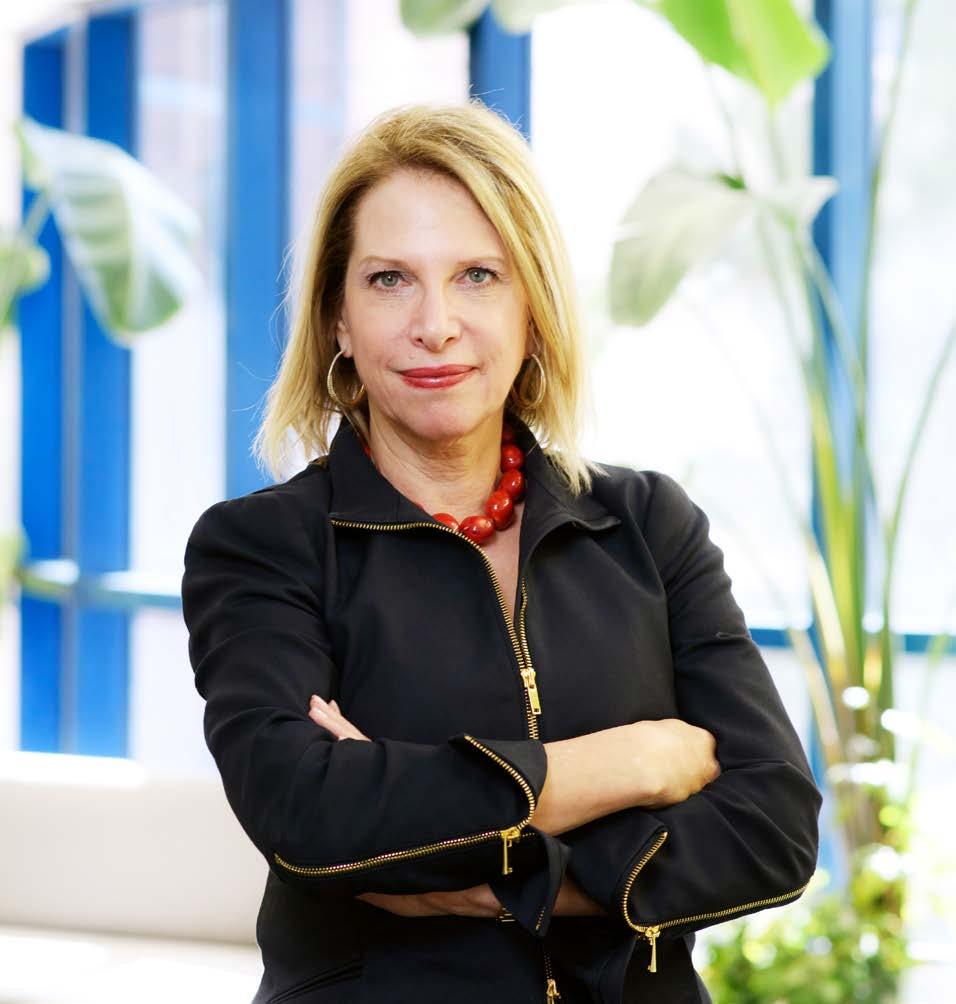
Institute for Supply Management®
The #1 global provider of learning and professional development for supply management.
» 50,000 members across the globe
» US$1 trillion spend represented
» 100 years of experience
» 1 path to success

www.instituteforsupplymanagement.org

Martin has been part of acquired companies as well, which she says gives her empathy for employees who are new to Teva. She understands the anxiety they feel and knows that clear and constant communication can help minimize those fears.
“From a value-creation perspective, I can write a book on rapid renegotiations and how to make sure you organize yourself so when the deal closes, you can prioritize work and put money in the bank quickly,” she says.
Again, Martin’s ability to change her approach based on the unique aspect of each deal has helped her excel.
“You have to understand the context of the deal and use procurement strategies that follow the constructs of the deal,” Martin says.
The broad impact of Martin’s approach to procurement throughout her career has been a paradigm shift in each position she’s held. She counts that as a sign of her success.
“When you see colleagues across the company look at your team as equal business partners—relying on you to bring solutions— and not just three bids and a cloud of dust, that’s when the tide shifts and the organization begins to value the function,” she explains.
Fostering that paradigm shift at Teva just might be her biggest accomplishment yet. Now, Martin and her team are positioned to be vital players in Teva’s future.
Accenture is helping companies like Teva Pharmaceuticals that wish to undergo a fundamental shift in the role of their procurement departments, a growing trend that sees them transform from the traditional role of cost optimization to a business partner focused on total value ownership and supporting the implementation of the overall business strategy.
When it comes to improving employee performance, driving value, and building competitive advantage, the world’s leading companies trust Institute for Supply Management (ISM). Since 1915, ISM has been the global voice in supply management. We provide learning and professional development for supply management professionals through an integrated suite of competency-based products and services across the entire career spectrum. These include the most rigorous professional certification in the field—the Certified Professional in Supply Management (CPSM)—as well as leading-edge eISM courseware, impactful conferences, and corporate training—all designed to promote innovative and strategic thinking, streamline performance, and improve the bottom line.
A Code for Success
Jim Hempleman’s tech expertise has been key to a successful career, but he credits true business transformation to his code of ethics
By JOE DYTON

IIn 1983, Jim Hempleman had an idea: a software tool that could access, manipulate, and reformat data quickly and efficiently using business analysts instead of programmers. He invested $10,000 that year and purchased an IBM PC-XT, the first PC with a hard disk. Hempleman used that computer to build a prototype of his vision.
Hempleman essentially bet his career on the PC that year. He had been working as a technology consultant for several years and had seen the rapid evolution in the power of computers. He saw that trend again in the PC, and it would likely come faster than prior cycles. Of course, history would prove him correct.
The prototype Hempleman built was successful, and it gave him the confidence that the PC would be the go-to computer platform of the future. Over the next years, he worked to realize his vision.
In 1985, Hempleman founded Premier International, the Chicago-based software and consulting firm where he is still CEO today. “From the beginning, we focused on PC-based development,” Hempleman explains. “It was obvious to me that the PC was the platform of the future, and each innovation that came along gave me more confidence.”
To fund the development of the data management product, Hempleman leveraged the infrastructure software from the prototype to build PC-based software products for large consulting firms. “Their software products were able to get to market much more quickly, and the contracts gave me ownership of enhancements to the infrastructure software that they funded,” Hempleman explains. He then reinvested the company’s profits over several years until the first version of the Premier International’s Applaud software was released in 1988; the company currently uses version 7.1 to deliver data migration solutions.

Although Premier International began as a software firm, most of Hempleman’s career has involved technology consulting. It is no surprise, then, that in 1995 he decided to build a consulting group within his company, and that is where he has spent the majority of his time over the past twenty years. From its beginning, Hempleman built the consulting group by essentially only hiring new grads— employees he believed would be less likely to job-hop—as is so prevalent in technology positions.
The move has paid off. The company’s six top consultants were hired out of college and have been with the company for an average tenure of eighteen years. In fact, the first consultant was hired into the consulting group twenty-two years ago and is still with the company today. “That tenure translates to experience,” Hempleman says. “We are told we are the best in the business, and that warms my heart.”
One of the reasons Premier International employees stay with the company is that Hempleman created a career path for college grads with clear, attainable goals at several levels, where employees are rewarded financially for not only their own growth but also for growing others’ skills, qualities, and ethics. “Over many years, we have documented the skills and qualities that make a great consultant in our business,” Hempleman says. “The skills and qualities are divided into twelve categories that I call the Twelve Arts of Consulting and then cross-divided into the five levels in our firm: associate consultant, senior consultant, manager, senior manager, and finally principal.” At each level and within each “art,” there are specific skills and qualities that are expected. The document is used as the organization’s
Jim Hempleman CEO, Founder Premier International Chicago, IL

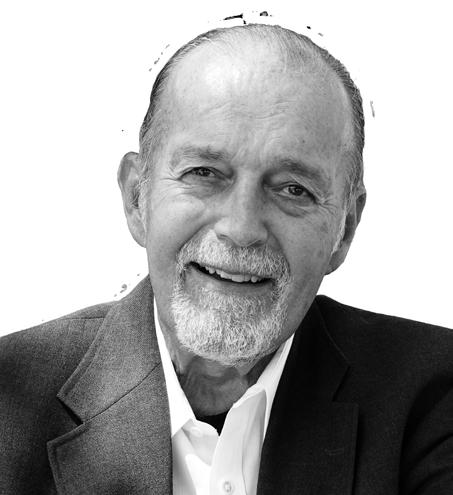
annual performance appraisal form. “We clearly communicate the ways we expect the team to grow and keep them focused and responsible for that 100 percent of the time,” Hempleman says.
He also believed that new grads would be less likely to have picked up bad ethics habits from previous employers and would be easier to keep on an ethical path. As he started the consulting team, he created a code of ethics, which includes five principles: be honest and forthright in everything you do; always focus on the clients’ best interest; do the best job possible; remain humble; and never violate the clients’ confidence.
“Some organizations publish a code of ethics but don’t necessarily live by the rules,” Hempleman explains. “We not only live by the rules, but to be promoted to the next level, team members must verbally inspire others to follow the code.”
In fact, Hempleman finds the code is essential to the company’s success. “Over 95 percent of our business is generated from repeat business or from a direct referral by someone who has worked with us before,” he says. “I have no doubt that our code of ethics is the single most important reason for our long-term success, and that fact makes me very proud.” In fact, despite all that he has accomplished in business, including eleven issued patents, the company’s code of ethics is Hempleman’s passion and largest source of pride.
Now, he will get to see how strong his ethics legacy is, as someone else will be driving it. Hempleman recently promoted himself to CEO and named one of his earliest hires as company president. “I am certain our new president will continue to lead the company to the same high ethics,” Hempleman says. “He’s having a good time spreading his wings and taking off, flying with a great opportunity. I think he’ll do a fantastic job for us.”
LIFE LESSONS
Jim Hempleman’s drive for ethical behavior doesn’t stop with his business, Premier International. He’s also the cofounder, along with his wife Dune, of LifeLessonNetwork.org. The nonprofit foundation is dedicated to helping grow ethics, values, and motivation in children.
Life Lessons was born out of a part-time babysitting assignment. The Hemplemans began to babysit an infant, Sarah, in 1989, and they became so close that they say that they became like a second set of parents to the girl. They began to take Sarah on vacations and would make cards for her with advice, which they called life lessons.
The Hemplemans have expanded the advice they provided Sarah throughout the years and made it available to everyone. The organization’s website offers sample Life Lessons, broken out by age group, from prekindergarten all the way through college and the early years in the workforce. There is also a code of ethics for children, as well as other techniques and advice for special times, such as graduation. Everything on the website is offered entirely free of charge and is nonsectarian.
“I truly hope that the Life Lesson techniques do some good,” Hempleman says. “If one child improves one element of their behavior as a result of Life Lessons, then the process has been successful. If each of us presents life lessons to just one child, together we might make a big difference.”
In with the Old, in with the New
Andrew Fotopulos maintains Starkweather &
Shepley’s
rich history and leaves a legacy of his own
By ALEX STEWART
“Come back with your shield—or on it.” That isn’t the typical battle cry of an insurance firm. In reality, most insurance companies don’t have battle cries. Perhaps that’s why so few have lasted as long as Starkweather & Shepley, a Rhode Island-based brokerage company that has survived and thrived since 1879.
Andrew Fotopulos, an insurance industry veteran, serves as president of Starkweather’s Massachusetts division. Having recently joined the parent company’s board of directors in 2015, Fotopulos’s interests lie in bringing one of the country’s oldest brokerages into the twenty-first century, while preserving its nineteenthcentury roots.
When the company’s founders left the business in 1935, they set it up as a trust agreement. This way, instead of stockholders, the employees run the company, a unique business decision in an industry where mergers and acquisitions are the norm. Remaining a private brokerage means the focus remains on Starkweather’s employees and clients, not the return, Fotopulos says. When the focus shifts to the return on investment, companies respond
with layoffs, fewer employee benefits, and suffering client relationships. Starkweather, meanwhile, spends seventy-three cents of every dollar on its employees. A combination of profit sharing, bonuses, and a no-nepotism policy enables Starkweather’s fourteen offices and 230 employees to have control and attract new talent.
“Synergy is a big word in this agency,” Fotopulos says. “It’s all about putting our heads together, rolling up your sleeves, being honest with each other, and not being afraid to express your opinion. We have that culture here.”
With offices in Rhode Island, Massachusetts, Connecticut, and Florida, Starkweather relies on open and thoughtful communication from the top down. Regularly scheduled lunches among the employees and the board of directors keep the ideas fresh and the culture transparent.
Fotopulos joined the board of directors in 2015 and was appointed a trustee in January 2017. One tenet of becoming a board member, he noted, was promising never to sell the
Andrew Fotopulos President
& Shepley Insurance Westwood,
MA
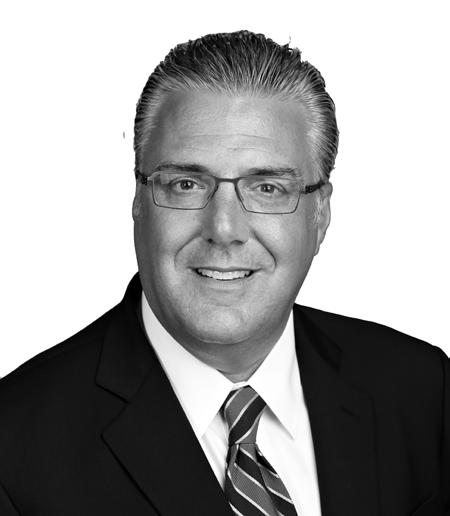
Starkweather
company. This simple gentlemen’s agreement has remained strong for more than eighty years.
When he was hired in 2009, he was brought on as a guinea pig of sorts. Following twenty-two years at a family insurance agency, Fotopulos was charged with forming a practice group for the financial sector. What started as a fledgling experiment has become a revenue powerhouse with eight hundred clients. Starkweather now offers clients nineteen practice groups specializing in industries from marine to municipalities.
The practice groups are part of a greater initiative Fotopulos calls TC-squared: talent, culture, technology, and change. With stiff competition from private equity investors, Starkweather developed alternative methods of attracting clients and acquisitions when they couldn’t offer top dollar. Starkweather’s most recent acquisition, a twenty-employee group, nearly went with another agency that offered more money. Instead, the group went with Starkweather for the company culture it offered, particularly the emphasis on the employees and the clients.
When searching for talent, Fotopulos looks for the three characteristics that Warren Buffett once cited as most important in a new hire: integrity, intelligence, and energy. Fotopulos also actively searches for ways to engage his employees by bringing them to meetings and creating business opportunities, which consistently grows the talent’s intellectual capital. Meanwhile, culture translates to integrity. If Starkweather cares for its employees, the employees in turn take care of their clients. Starkweather employees are rewarded the same for signing new clients and maintaining existing ones, a strategy few brokerages practice. When the incentive is only for new business, there would be no reason for talent to stay engaged with loyal customers.
Technology has made Starkweather available to its clients year-round, and social media enables communication and promotion that the original Starkweather & Shepley could never have dreamed of. Finally, change can be difficult for a company that’s more than a century old, but Fotopulos says they don’t shy away from it. “We’re not focused on our oldmoney ways,” he says.
Since he started eight years ago, organic internal growth has been a constant. In 2016, it was more than 7 percent. Sales have increased each year. The practice he manages in Boston is one of the fastest-growing divisions in the company. The trick, he says, is to lead by example.
Fotopulos’s leadership style is about balance: doing serious work but having a laugh, setting high expectations but forgiving mistakes, and creating teachable moments while learning from those around him.
His rapid rise in the Starkweather ranks is the culmination of energy, passion, and dedication. Much of that roll-up-your-sleeves attitude comes from his father, he says. His dad was a schoolteacher who would tell him, “Come back with your shield, or on it.” Additionaly, his father is a tireless worker and excellent networker, Fotopulos says. That resonates with him.
“I don’t take failure well,” Fotopulos says. Luckily, neither does Starkweather. The independent insurance sector is growing smaller and smaller every year. Soon, Fotopulos says, the insurance brokerage industry will simply become the Big Eight—global conglomerates that are selling, merging, and acquiring one another. But then outside that, there will be another. “We’re going to stand out,” he says. “We will not be selling this firm.”
FROM STONEMASON TO STARKWEATHER
In a recent meeting, Andrew Fotopulos brought in a photo taken in his native Greenfield, Massachusetts. It showed a sandstone observation tower at the top of Rocky Mountain overlooking the lush green Franklin County. Poet’s Seat Tower, a medieval-looking turret structure, was built in 1912 in part by Fotopulos’s great-grandfather, a stonemason who emigrated from Greece.
“I have this living landmark that I can see that can remind me of where I came from—of that dedication,” Fotopulos says.
He keeps the photo in his office to remind himself of what hard work looks like.
The dedication and knowledge you demonstrate in ser ving the investment community is proud to par tner with you in providing asset managers insurance solutions they need to Congratulations on this your contributions to the asset management
Umbrella logo are registered trademarks of
Transparent, Not Transactional
Vicki Cansler brings a wealth of healthcare experience to her leadership position in human resources at Piedmont Healthcare
By EDDIE O’NEILL
In 1982, Vicki Cansler was a twenty-something nurse-recruiter at Glenwood Regional Medical Center in West Monroe, Louisiana, when she got a call to report to the CEO’s office.
“I had no idea what was going on,” she explains.
“A call to the CEO’s office is typically not good. But it turned out that the CEO wanted me to lead the hospital system’s personnel department. I was surprised. The only thing I knew about personnel was that they hired and fired people.”
Even so, she was up for the challenge. However, Cansler had one caveat for the CEO. “I told him that I wasn’t going to be in a basement office all day sending out memos,” she says. “I needed to be out with the employees to understand what their needs are and to help them understand what we in human resources can do for them that will be aligned with management and thus work toward solutions.”
The CEO embraced the idea and gave her the green light to go for it.
Cansler says it was his blessing that allowed her to think creatively and to develop a visionary approach to human resources in the healthcare field. It’s a plan she has followed for more than thirty years. Now, Cansler characterizes her style as one that is concerned and more about being a talentadvisory voice for the company. After all, people problems are business problems.
“Traditionally, HR did nothing but transactions,” she says. “They were a clerical shop and not looked at as trusted strategic advisers in the business. They hired and fired and processed paperwork. But that wasn’t going to be my focus.”
And it hasn’t been. Cansler has always employed a service-delivery model that includes HR business partners that reside with the business and consult
PIEDMONT HEALTHCARE BY THE NUMBERS
2,000,000 patients served
250,000 emergency room visits
44,000 annual surgeries performed
8,000 babies delivered 100 physician and specialist offices across greater-Atlanta area 18
ranking by Atlanta JournalConstitution newspaper for 2016 Greater Atlanta Top Workplaces






Congratulations to Vicki Cansler
Chief Human Resources O cer Piedmont Healthcare
Vicki, we salute you for leading Piedmont Healthcare to realize its vision of becoming a top workplace in the health care industry.
We look forward to partnering with you and Piedmont Healthcare for years to come.
Willis Towers Watson Together, we unlock potential.







and advise on talent issues and initiatives, with support from HR centers of excellence: benefits, compensation, learning and development, employee relations, and recruiting.
Cansler, a Louisiana native, says she is grateful for a career that could certainly be described as nontraditional. She has worked in the private and public healthcare sectors, as well as on the payer and provider sides of the healthcare table. Along the way, veteran HR leaders have mentored her. She’s also worked many years in professional services with both Deloitte and Booz Allen Hamilton Inc. and taken advantage of numerous opportunities to continue her education. “All of these settings have given me a broad view of the whole gamut of healthcare, from how it’s delivered to how it’s paid for,” she says.
In 2013, Cansler became the chief human resources officer at Piedmont Healthcare in the Atlanta area. Her three decades of experience provided her with a solid foundation for this current job.
Piedmont was founded in 1905 when two Atlanta-area doctors opened a hospital to serve patients and offer surgical services. Today, Piedmont is a nonprofit that serves nearly two million patients across Georgia. The system includes seven hospitals, nineteen urgent-care centers, ninety-four physician-practice locations, and 1,615 Piedmont clinic members. Piedmont’s purpose is to make a positive difference in every life that it touches, and the nonprofit also promises to do this in a way that is genuine, respectful, and heartfelt. For Cansler, the organization’s purpose means she strives to improve the daily lives and the overall employee experience of Piedmont’s more
than sixteen thousand employees. “The hospitals have their customers: those are the patients who come here for services,” she says. “HR’s primary customers are our employees and our leaders who we equip with programs and tools to help them provide high-quality, patient-centered care.”
The healthcare system has seen tremendous growth during the past decade, mainly through acquisitions of regional healthcare operations. In the mere four years that Cansler has been with Piedmont, more than four thousand employees have been added to the system. With that comes change, and she knows that change is never easy, especially when it involves one’s livelihood. Thus, it has been Cansler’s goal to ensure that Piedmont’s newly acquired employees are not only integrated into Piedmont’s procedures and policies, but they are also made to feel a part of Piedmont’s nurturing culture.
“In these acquisitions, I’ve learned to respect what employees value,” she says. “These would include retirement packages, paid time off, and any incentive programs. These are important to people, and they want to know, up front, how a merger or acquisition is going to affect these programs.”
For the most part, these large-scale mergers have gone well, Cansler says. Transitioning employees have repeatedly told her HR department that they have appreciated the company’s transparency in addressing issues and concerns that
Vicki Cansler
SVP, Chief Human Resources Officer
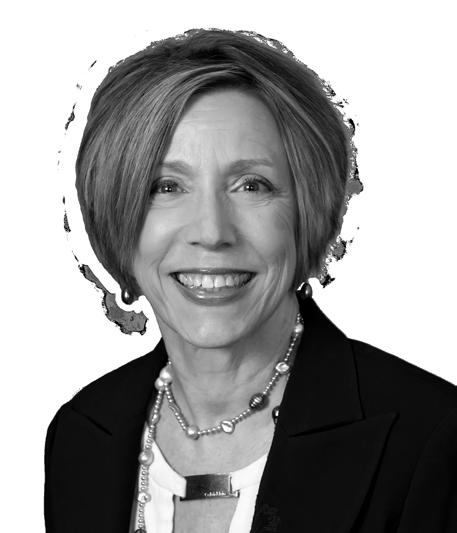
Piedmont
“Communicate, communicate, communicate. That’s been the key. Employees need to feel respected and valued.”
VICKI CANSLER
have arisen. Cansler says that employees have noted that Piedmont’s HR representatives have been honest and open about the transition process. “We’ve heard that we were up front early on about the amount and the type of change that was to occur and that we took them along the journey step by step. It wasn’t all done at once,” Cansler explains. “Communicate, communicate, communicate. That’s been the key. Employees need to feel respected and valued.”
To measure HR’s success, Cansler believes in using metrics. Her HR scorecard includes statistics on turnover rates, the time needed to fill hospital positions, and satisfaction with the HR Service Center, as well as learning and development metrics.
“The HR scorecard is a reflection of the organization’s Balanced Scorecard,” Cansler says. “The HR metrics help to provide focus on areas that are performing well or need improvement to help the whole organization move forward.”
For instance, Cansler notes that Piedmont has been focusing on lowering the company’s first-year turnover rate, and the metrics have shown improvement.
“Turnover, in general, is high in healthcare because there are a lot of opportunities in this field; a nurse can go next door to another facility for fifty cents more an hour and multiple hiring incentives,” Cansler says. “For us at Piedmont, though, it’s about more than a paycheck. It’s also about the work environment, work schedules, and leadership. It’s the comprehensive employee experience from prehire throughout the course of an employee’s career.”
Cansler draws a connection between the hospital’s declining turnover rate and two recently introduced corporate initiatives. The first of these is identifying new employees with unique badges.
“Employees and leadership are then encouraged to stop and welcome these new hires when they encounter them,” she
explains. “It’s a little gesture that makes new hires feel welcomed, and we hope it will help lower our first-year turnover rate.”
In the second initiative, Piedmont has introduced an executive calling card system. Piedmont executives are provided with cards each month with the names of recently hired employees. They are then expected to schedule a meet-and-greet with these new employees.
“It promotes executive presence as well as making our employees feel welcomed,” Cansler says. “It takes an entire team working together to focus on the issue and the solutions.”
Small but significant efforts like these characterize the thoughtful leadership that she brings to the world of HR.
Looking ahead in leading talent for Piedmont, Cansler’s critical priority is continuing to enhance the entire employee experience, with goals to improve engagement scores and to continue to reduce turnover to make Piedmont a destination employer in the Atlanta marketplace. She has major initiatives underway to continue this pursuit, such as retooling talent acquisition and onboarding to ensure employees are a culture fit and that they acclimate to the culture; developing skills and talent, both leadership and staff; and focusing a total health management initiative with the goal of improving the health of employees and their families and driving down the cost of healthcare. If there is a legacy for Cansler to impart at Piedmont, it is enhancing the employee experience with solid results to support overall company improvement.
At Lockton Dunning Benefits, our clients’ needs are our first priority. Because we are privately owned, our Associates have the freedom to focus on our three stakeholders: our clients, our Associates, and the communities in which we do business.
The Table Group, a Patrick Lencioni Company, congratulates Vicki Cansler, chief people officer of Piedmont Healthcare, for this highly deserved recognition. Vicki’s leadership around organizational health and team effectiveness has been a true game changer for the healthcare system. Organizational health is about making a company function effectively by building a cohesive leadership team, establishing real clarity among these leaders, communicating that clarity to everyone within the organization, and putting in place just enough structure to reinforce that clarity going forward. To learn more about how The Table Group supports Piedmont Healthcare as well as the services we offer, please contact Pam Bilbrey at pam.bilbrey@tablegroupconsulting.com.
We are proud to have partnered with Vicki Cansler to bring great executive talent to Piedmont

Let us help you find your next great executive.
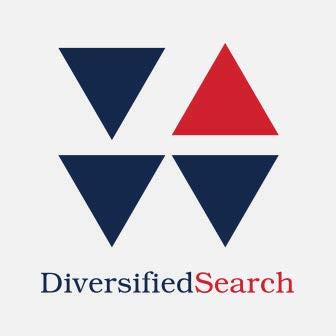
Meant for This
Margaret Lazo brings her thirty years of human resources experience to Univision Communications
By JOE DYTON
Some people find their career path. For others, their career path finds them.
For Margaret Lazo, it was almost certainly the latter. Lazo is the chief human resources officer for the media company Univision. Lazo is in charge of the organization’s human capital strategy, which comprises leadership development, succession planning, compensation and benefits, employee relations, advancing diversity and inclusion, and more.
Univision Communications is currently the leading multimedia company that serves the US Hispanic market with a mission to inform, empower, and entertain its community. The company has a vast portfolio that features seventeen broadcast, cable, and digital networks and partnerships, as well as 126 local television and radio stations and an ever-expanding list of mobile and video properties, including Univision.com and Univision Now.
The company takes pride in its connection to its young, diverse audience, which it is always trying to make stronger by delivering innovative Univision-branded content on all platforms at any time. Univision’s suite of branded extensions complement its current assets and deliver company-branded products that are tailored to the needs of its community.
In college, Lazo decided that she wanted to work in media. She earned a bachelor’s degree in communications from St. John’s University, and she even had her eyes on becoming a news producer. She even interned at CNN but eventually became unsure if that was the career path she wanted to take. But it was at another part-time job where her career found her.
Lazo was working at Macy’s when her human resources manager asked her how interested she was in a retail career. The meeting quickly transformed into a coaching session because her manager thought Lazo had a knack for HR. She heeded his advice, got into Macy’s executive training program, and eventually became the HR manager at Macy’s Stamford, Connecticut, store—at the age of twenty-two.
Understandably intimidated at first, Lazo made up for her lack of expertise by carrying herself professionally and wearing suits, as well as tapping into her instincts. By doing this and being a quick learner, Lazo was able to do things like motivate her team and find ways to have tough conversations with employees. She went on to have a successful seven-year career at Macy’s, holding several different management positions throughout her tenure.
Since then, Lazo has been a staple in the HR industry. She eventually landed roles within several divisions at NBC and
A UNIFIED VISION
In early April, Univision Communications created a new Univision Social Responsibility Council and an external Corporate Social Responsibility Board. The company also realigned and expanded its Community Empowerment and Social Impact teams. The council comprises company leaders and executives from human resources, marketing, communications, strategy, sales, legal, distribution, and local media in an effort to make sure Univision’s corporate social responsibility, community empowerment, and social impact initiatives line up with the company’s mission, clients, and the diverse communities Univision serves.
NBC Universal, including executive vice president of human resources for the cable and broadcast entertainment and digital properties, senior vice president for the Telemundo Communications Group, and vice president of human resources for NBC’s owned TV stations division. Lazo also played a key role during a period that featured a lot of growth in the cable networks and digital investment and transformation. She also played a key role in the company’s strategic entry into the Spanish-language market.
Lazo’s last stop before she joined Univision Communications was GE Capital, where she oversaw the sale and disposition of a large portfolio of assets. Always looking to help others, Lazo also helped employees transition to successor companies. In 2012 and 2013, she was the lead for global human resources for GE Commercial Real Estate, in which she oversaw a team of about forty professionals worldwide. Lazo held roundtable discussions with employees to discuss business results, share ideas, and gauge what they were optimistic about and what their challenges were. She also cohosted events with the organization’s CEO in the United States and abroad that involved GE Capital’s affinity groups such as the Hispanic Forum, African American Forum, and the Women’s Network.
Now, armed with almost thirty years of experience, Lazo will work to bring the best talent in the industry to Univision, while also holding on to and empowering the team members the company already has.
Outside of her duties with Univision, Lazo values her work serving on the Board of the Hispanic Federation. The organization’s goal is to empower and enhance the Hispanic community.
When it comes to advising women and Hispanics who aspire to her level of success, Lazo’s urges individuals to get involved and get noticed. When people find opportunities to get their work and results noticed, that work will speak for itself. One of the best courses of action to take, according to Lazo, is not only to engage with those whose attention employees want to attract, but to take on tough assignments, as they’re the true tests of the kind of leader one can be—as she herself experienced.
Willis Towers Watson congratulates Margaret Lazo of Univision Communications Inc.
Willis Towers Watson Connections

We applaud her well-deserved recognition as an outstanding CHRO and leader.
We greatly value our successful partnership with Univision.

willistowerswatson.com

firm
in
solutions. For 25 years, Hand & Associates has been o ering flexible, unique, and experienced approaches to enhance the productivity or Fortune 500 companies.

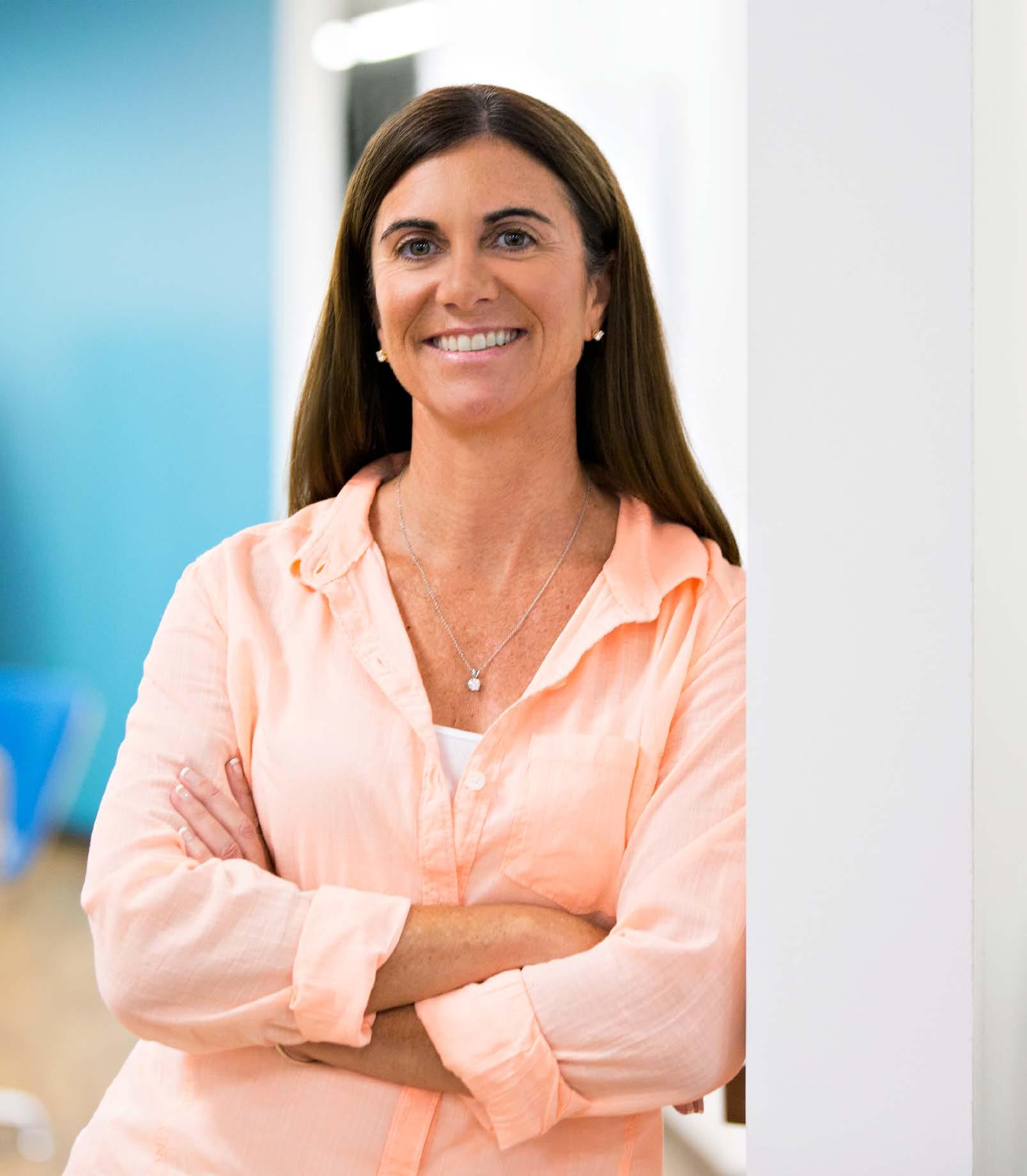
The Ties That Bind
Julie Cullivan and cybersecurity firm FireEye focus on forming strong business relationships
to play a key role in the company’s success
By JOE DYTON
FFor the past four years, Julie Cullivan has blazed a successful path at FireEye. It’s not just her technological expertise that’s led the way but her people skills, as well.
Cullivan is the executive vice president of business operations and chief information officer at FireEye, an industry-leading cybersecurity firm. For Cullivan, the company’s success relies heavily on healthy relationships with FireEye customers, partners, and employees alike.
“When I think about how critical existing customer relationships have been for our success, growth, and our channel and strategic partnerships that we’ve been able to put in place, those don’t work if you haven’t put emphasis on building the right relationships to help grow a company,” Cullivan says. “We would not be where we are today without our customers and our partners having been part of the success.”
The focus on relationships has not only helped FireEye’s sales grow, but its employee base, too. When Cullivan started at FireEye, there were four hundred people working there. Today, there are about three thousand employees. A lot of the growth was organic; FireEye hired strong players to help build the company, and two large acquisitions and a handful of additional small acquisitions extended its employee pool significantly. It’s one thing to hire a lot of people, but another for
Julie Cullivan EVP of Business Operations, CIO FireEye Milpitas, CA
them to stick around. FireEye has excelled at the latter because it’s taken time to invest in employee engagement.
“I think it goes back to having a culture of strong business relationships and business engagement,” Cullivan says. “If you look cross-functionally from go-to-market, services, support, and operations, everybody needs to be focused on how we quickly integrate new and acquired employees into the organization. If you don’t invest in building those personal relationships, I think it’s difficult to be successful.”
Cullivan has applied FireEye’s culture of investing in personal relationships to her own team. The relationships she maintains with her staff are professional, but she recognizes the fact that every employee is a person first. That’s why she takes the time to get to know something about everyone on her crew outside of work and is able to say something about everyone beyond the work they do at FireEye.
“People are amazed at how important that is for people to want to know them as an individual, not just, ‘What can you do for me?’ or ‘Have you gotten your work done?” Cullivan says. “It can’t be fake, however. It has to be real. That’s where you start to build that trust.”

TEAMWORK THROUGH TECH
Like a lot of other companies, Cullivan’s IT department touches every part of the organization. That’s a lot of bonds for her team to form, but Cullivan has learned that creating a give-and-take relationship with members of other departments is a strong course of action. Rather than force their ideas and solutions on people, her team engages in deeper conversations with colleagues to see what problems need to be solved.
Trust also plays a part in how Cullivan and her team relate to the rest of the company. The team has to prove it can deliver and do the things it says it’s going to do. When that track record of credibility is developed, Cullivan has found that her team has built a rapport with its business partners, and they’ll come to the IT department with problems, not answers.
Although difficult, having transparent conversations has also helped create strong employee relations. Sometimes not everyone agrees on how to solve a problem, or roadblocks come up that require the IT and business partners to work together.
“The stronger the relationship is, the easier it is to have those courageous conversations,” Cullivan explains. “It’s about being willing to have those tough conversations when necessary and not hoping that the issues are just going to go away—because they rarely do.”
Cullivan also pushes her team to be proactive about branding, messaging, and communications. In a supporting role , such as IT, it’s easy to say that no news is good news, Cullivan says, but she sees that as a missed opportunity for her team to show how it can contribute to the company’s overall success. Instead, she prefers that her team express the value it brings and the impact it’s making on the business.
When it comes to day-to-day work, Cullivan and FireEye emphasize the effectiveness of the work employees do. It’s not always about what was accomplished but about how the task was achieved.
“If you want to have those strong relationships, it comes down to how you get the
work done,” Cullivan says. “It’s about helping people understand that strong execution with a lot of broken relationships along the way is not as valuable as getting things done by building and maintaining relationships while you’re doing that work.”
CONTINUING COLLABORATION
While FireEye continues to focus on its mission to relentlessly protect its customers with innovative security technology and expertise, it is also focused on the path to profitability. The initiatives that Cullivan and her team are driving to help FireEye get there are focused on automation and optimization. IT has opened its doors to anyone who has an idea related to automation. The department recognizes not everyone can do the technical work to make their idea a reality, but that shouldn’t stop people from presenting what they have in order to prioritize the biggest opportunities.
“What we try to do is start with, ‘Hey, anybody that has a great automation idea, get it to us,’” Cullivan says. “Then, we prioritize those automation opportunities and find technical resources within the organization and say, ‘Help us build this.’”
As she continues to encourage others and to help lay the foundation of strong relationships, Cullivan also embraces every learning opportunity she can.
“I certainly know that I can learn from others about how they approach these opportunities and problems,” she says. “My experience at FireEye has been really exciting. It’s challenging in a lot of new and different ways, and every day is unique. But that’s what keeps me energized and engaged.”
Editor’s Note: At the time of publication, Julie Cullivan was no longer with FireEye.
EFFECT
Celebrate Your Wins
Peter Saba builds a robust, focused legal department at

By CONNOR SHIOSHITA PICKETT
SVP, General Counsel, Secretary
Schnitzer Steel Industries
Peter Saba
Schnitzer Steel Industries
Portland, OR
Thanks to Schnitzer Steel, a car’s useful life doesn’t end at the junkyard after hobbyists and parts hunters have picked it clean. That vehicle gets crushed in a compactor and then broken down further in a car-scaled shredding device similar to an office paper shredder. Then, that reborn steel goes on to have new lifetimes. In 2016, the company’s recycling division recycled and shipped more than three million tons of scrap metal and sold it to customers in twenty-four countries.
Likewise, Peter Saba is cultivating transformation within the company.
Saba, Schnitzer’s general counsel and corporate secretary, knew that he would be responsible for revitalizing the legal department. “This was part of the mandate,” he says. “Part of why I was interested in assuming this position was the ability to transform and shape the legal division.”
When Saba arrived at Schnitzer in July 2015, he discovered a slim in-house legal operation of just two lawyers who relied heavily on outside counsel. The pair were high-quality lawyers with knowledge and experience, but a company with $2 billion in revenue needed a deeper roster.
Saba estimates that the transformation of Schnitzer’s legal department is around 50–75 percent complete. “You never get to 100 percent,” he says, emphasizing that this is also a continuous process of improvement. He can, however, name some of his conditions of success. “It’s a division that’s adequately staffed to provide high-quality and timely legal support throughout the organization on both routine matters and extraordinary items, with a combination of in-house and external resources,” he says. For Saba, that means overseeing governmental affairs, public relations, and environmental compliance functions while integrating all of those functions.
Even at this stage, Saba is receiving encouraging feedback. A regional manager recently called him about incorporating the legal team early on in a project. “I realized that those relationships were developing, and the process was working,” he says. “That’s the measure of success: when you’re being asked to join the party at the
“I always have an open-door policy. It’s an ongoing, constant process. It happens every day.”
PETER SABA
At the time, Saba explains, conditions did not favor hiring. “Given the market cycle, we were in the midst of significant initiatives to reduce costs,” he says. The organization was cutting personnel to achieve that end, but Saba had to persuade company leadership that a larger legal roster was actually key to a healthier bottom line. “Where there was a steady flow of work—a high frequency of legal involvement—it made sense to bring more of that in-house,” he explains. “It fulfilled the objective of providing better service, still utilizing outside counsel, but on a more specific basis.
That crucial point is the premise for Schnitzer Steel’s emerging legal department: excellent in-house legal counsel delivers sustainable value in ways that outsourcing alone cannot match. The department now aims to develop exemplary and timely in-house legal support, engage with business initiatives from the early stages, and provide fulfilling work experiences to team members—all to maximize value for the company.
beginning and not after the authorities have arrived.”
By arriving to that party early and helping to set the table, the legal team builds and reinforces those relationships to minimize risk and keep departments focused. They identify potential hazards and generate possible solutions. As such, they are developing a reputation as invested, forward-thinking partners.
Saba also advises his team to remember to advocate for themselves, too, when the legal department scores wins for the company. That’s particularly valuable when the department is still developing its role and relationships within the organization.
“It’s important for the department to market its successes,” he says. “Where it results in revenues or awards that go straight to the bottom line, you shouldn’t be shy about promoting those successes. But even where the effect has been a defensive matter, even if it’s reducing costs or avoiding penalties, make sure that the rest of management is aware.” Clearly communicating those contributions, he says, paints the legal department as mission-oriented and investment-worthy.





Carlsmith Ball is proud to serve Schnitzer Steel in Hawaii





Close Build Comply

From closing real estate deals to complying with complex employment laws, our specialized, future-focused legal solutions help businesses boom.
Maintaining that open dialogue means that the legal team can be responsive to the changing needs of the business. Saba regularly sits down with the business partners and the in-house team to assess progress and identify areas for improvement. “It’s a combination of demonstrating value to the business partners and helping to formulate solutions, rather than just identifying obstacles,” he explains.
Although it’s critical for his legal department to align with the business interests of the company, Saba also prioritizes the personal fulfillment of his team members. That’s a mission with its own balancing act. “It’s a combination of providing them with resources and support and giving them independence,” he says. “I always have an open-door policy. It’s an ongoing, constant process. It happens every day.”
Saba, too, is still learning. After posts in energy, finance, and private practice and teaching positions at Georgetown and American University, he is in the recycling business for the first time. It’s a long way from the ivory towers of a law school, Saba says, but he relishes the challenge of staying effective in both the boardroom and the scrapyard.
“One of the most gratifying aspects of the work is this company is helping to build toward a more sustainable future,” he says. “The challenge here is to achieve this broad goal through the best environmental practices.” Likewise, Saba wants to use an approach through which Schnitzer’s revitalized legal department satisfies the business partners, the company, and the individual lawyers on the team.
“That is my view of the world,” he says. “That’s what I’m trying to achieve here, so that the company is best served, the business partners are best served, and the lawyers feel best utilized.”
Nixon Peabody enjoys working with Schnitzer’s legal department because we feel like we are part of one team. This obviously starts at the top with Peter. In addition to being an exceptionally smart lawyer, Peter is also very approachable, thoughtful, and appreciative. These qualities are instilled from top to bottom throughout the legal department.
Culture Club
R1 RCM’s Corey Perman explains how focusing on ethics gets his company ahead
By BILLY YOST
Corey Perman admits that for every company, there might be a different name for what he does. Compliance, corporate responsibility, and corporate integrity all denote key aspects of his position as executive vice president, compliance and risk at Chicago-based R1 RCM, which provides revenue cycle management services and physician-advisory services to healthcare providers.
There is one word, though, that he and his team are driven to bring to the forefront: ethics. “Compliance connotes adherence to rules and regulations,” Perman explains. “Ethics means doing the right thing in an appropriate and responsible way.” And he believes a proactive commitment to compliance and ethics gives R1 a competitive edge.
In a little more than two years at R1, Perman has aided in the overhauling and reframing of compliance and ethics in not just his division, but throughout the company. Building a culture of compliance, Perman says, is essential for R1, whose more than 6,600 employees are split between the United States and India. Perman gives CEO Joe Flanagan credit for working to establish and emphasize a compliant and ethical tone from the top
OFF THE CLOCK WITH COREY PERMAN
As part of a twenty-five-yearold organization presented by the Constitutional Rights Foundation, Perman participates in Lawyers in the Classroom, a Chicagobased nonprofit that visits elementary and middle schools and aims to help students to better understand the US Constitution, the legal system, and lawrelated careers. Perman’s participation predates his tenure at R1 and is a role he cherishes.
and aiding Perman’s team to generate wider visibility within the company. Meetings, from the senior executive level on down, typically include one question early on: “Does anyone have any compliance concerns?” Routinely talking about compliance, Perman says, helps breed ethically minded discussion and decision making. “If we work to set the culture now, we’ll be better off in the long run,” he says.
Added visibility for compliance and ethics has taken many forms at R1. An increased emphasis on transparency is a key component to the company’s recently revised value statement. And Perman says that transparency leads to accountability. “A compliant culture means raising issues and owning them,” he says. “Our piece is helping people address those issues.”
For Perman and his team to be successful, he says that R1’s workforce needs to know that contacting compliance is not only an option, but it’s encouraged. His department has sought to conduct more in-person training to give a face to R1’s emphasis on ethics. A compliance and ethics guide that new employees receive during training also helps to underline R1’s commitment to a culture of integrity. Perman and Flanagan even conducted a call with R1’s India operations to highlight the company’s compliance hotline. “We want to make it clear that it’s incredibly important to speak out, particularly when you have an offshore workforce,” Perman says.
R1’s expanding emphasis on ethics and compliance is paying off. A recent company-wide culture survey rated the focus on core values and ethics as one of the highest-scoring essential behaviors, but Perman believes there is always room to improve. As R1 continues to grow—with his team alone shooting up from five to seventeen—Perman sees the company’s emphasis on integrity as a competitive advantage. “We can play offense in what
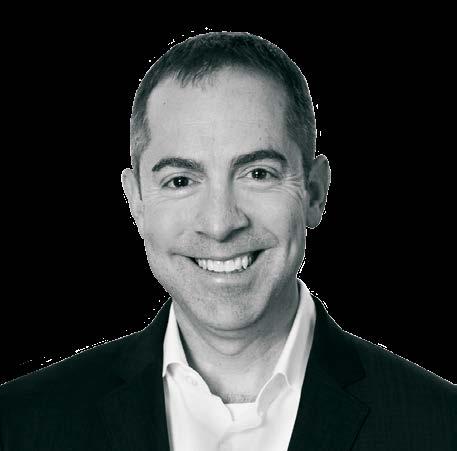
“The question should always be, ‘How can we build standards or get them to best practices more quickly than if we weren’t around?’”
COREY PERMAN
we can offer in compliance,” he says. “You don’t just get the operational rigor of what we do, but you also get the benefit of a cohesive compliance team that can help you address issues.”
Perman says that working collaboratively with his counterparts at R1’s clients is key for his role. “The question should always be, ‘How can we build standards or get them to best practices more quickly than if we weren’t around?’” Perman says. “I think that’s what we offer as an advantage.” As an operational partner with subject matter expertise and efficiency, R1 as a whole supports its clients in a way Perman believes sets R1 apart. “We understand the nuances and methodology to help address an issue,” Perman says. And trust built through collaboration and communication makes that possible. Perman believes that collaboration breeds more success than the policing mind-set that can befall compliance professionals. Compliance means encouraging communication and candor, he says.
Before coming to R1, Perman’s nearly twenty years of professional experience also included more than a decade spent practicing law. He believes his litigation experience has served him well at R1. Proactively identifying potential issues and risks are an inherent part of his current role. As a leader, he takes the same collaborative approach with his own department as he does with R1’s clients. Perman believes in leading with confidence, and he sets high standards for communication in his department. His expectations of his own team seem to mirror the aims of R1’s compliance commitment. “If we’re going to be the best in class,” he says, “we’re going to be responsive.”
Meade, Roach & Annulis, LLP
Congratulates Corey Perman, Executive Vice President, Compliance and Risk at R1 RCM, Inc., on his consistently outstanding work and exemplory leadership. We are proud to have worked alongside Corey for years, and look forward to many more years of collaboration to come.

Knowledge, Experience, & Guidance.
Meade, Roach & Annulis, LLP is a leading health law and compliance firm dedicated to building, implementing, and enhancing world-class compliance programs.
We can help.
Hands-on solutions to complex compliance needs.
Corey Perman EVP, Compliance and Risk
R1 RCM Chicago, IL
APPROVED For the Future
At Hogan Lovells, Yarmela Pavlovic helps medical device companies find the right regulatory pathway to FDA approval—a process that introduces her to exciting technology on a daily basis
By DAN CAFFREY
WWhen someone has to use a medical device—whether it be a stent, a cardiovascular implant, or something else—chances are they’re not thinking about how that device came into being. They’re not thinking about its marketing. They’re not thinking about its lengthy approval from the Food and Drug Administration (FDA). No, the patient’s thought process is likely more practical than that: “I have a specific health issue, and this device helps me address it.”
If you’re Yarmela Pavlovic, however, you think about those things a lot. As a partner at international law firm Hogan Lovells, her practice focuses entirely on the FDA’s regulation of medical devices.
“I help companies navigate what we call the premarket approval process,” she explains. “This covers product conception up to and including FDA clearance or approval. I help companies identify whether their products can be regulated by the FDA, and if so, what’s the right regulatory pathway.”
Recently, we checked in with her to learn more about this timeline, from the amount of time it usually takes for approval to the legally correct way to tweet about a new medical device.
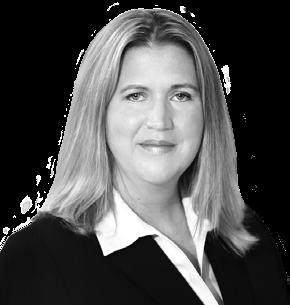
Yarmela Pavlovic Partner Hogan Lovells San Francisco, CA
How long does the FDA approval process for a product typically take?
It varies a lot depending on the specific product. For some products, it’s simple. For high-risk products, it is not uncommon for me to work with companies for years, from clinical trials to final product approval.
What does the process for the latter usually look like?
Let’s take, for example, a screening test for cancer that’s going to be used in average-risk people. The FDA views those as high-risk, because you’re applying it to a whole population of people, and if you miss somebody who has cancer, then you risk delaying diagnosis. Something like that often has a large clinical trial. So I would often help the company all the way from the early stages of product development, when companies are determining how the product is likely to be regulated. I help them arrange to discuss their product with the FDA and determine what clinical data we might have to develop.
Then we would help them with the actual development of that clinical study. That process, depending on the particular product, can take years. Some implant studies, for example, must go through a two-year follow-up before they can even apply for marketing. Then, from the time you submit a marketing application for the highest-risk products, it’s a one- to two-year process to get approval.
That must present all sorts of obstacles. What’s the biggest challenge of the work you do?
One of the biggest challenges also happens to be the best part of the job, and that’s having to constantly learn
about new technology. There are other areas of law where people have to have familiarity with technology, but the number of different technologies that we work on at any one time makes us unique. Doing my job effectively means having a pretty deep technical understanding of what we’re helping with.
What’s the coolest piece of technology that you’ve learned about or come across—perhaps something that you weren’t familiar with before?
I have worked on products that were designed to regenerate hepatic cells, or liver cells.
The liver is a fascinating organ. Even though it can be damaged by alcohol abuse or by various conditions that a patient has, it is also able to regenerate from even a small portion of the original organ. I once worked on a product that ultimately didn’t come to fruition, but it was designed to facilitate the regrowth of liver cells. Let’s say you have a person who is headed for end-stage renal disease but still has some healthy liver function left. You could take a portion of their liver and potentially regrow a whole new liver. That was the goal of this product: tissue regeneration.
Likely the most medically important product that I’ve worked on was the Exact Sciences Cologuard colorectal screening test. It’s a noninvasive, stoolbased test to screen for colon cancer. It evaluates the presence of molecular and blood markers in the stool to identify whether the person is likely to have cancer or precancerous lesions. I say medically most important because if it is caught early, colon cancer can actually be completely excised Most colon cancer is caught
late-stage, and that’s because people don’t start having symptoms until the disease is far enough along that it’s causing symptoms and is going to be hard to treat. One of the things people are supposed to do is get a colonoscopy every ten years, but a lot of people don’t want to do that.
I also do a lot of work with companies that are developing artificial pancreas systems. Artificial pancreas technology is something that has been in the works for a decade or more and we are just about to see the first real meaningful products come to market. It’s an exciting time.
Once a product like that does hit the market, do you see the effect it has on patients’ well-being almost immediately?
It often takes a while. My husband is actually a primary care doctor, and it’s funny the number of times that he’ll say to me, “Oh, I learned about this cool new technology today,” and I’ll say, “ That’s new?” You can get a new product to market, but in our healthcare system, you also have to get it paid for. As everyone is learning from the debates surrounding the Affordable Care Act, healthcare is an incredibly complex infrastructure. How things are paid for and the process for getting things paid for can take time. Even if you get the government to pay for something and you get Medicare reimbursement, you then also have to work through it with each private insurer as well.
That has an impact, not as much on product launch as product adoption. For some products, it’s not too hard, but for others, more novel products, you have to figure out how to work through that.
Then, there’s physician adoption. Even if you can get it paid for, you have to get the message out. You have to help doctors or patients feel comfortable with the new technology.
What’s your role in the marketing side of it? I imagine it’s difficult to promote a medical device on social media. I do advise on promotion and advertising of medical devices, and it’s particularly tricky when you want to use social media.
It’s not that I advise on how to effectively do that with social media. I’m no expert on using Twitter to market your medical devices effectively. What I do counsel companies on is how to do that within the context of the FDA’s regulations because there is a pretty good set of rules around what you can say about medical devices as you’re promoting them. You can’t make overly broad claims that you don’t have clearance or approval for.
“You can get a new product to market, but in our healthcare system, you also have to get it paid for. ”
YARMELA PAVLOVIC
One of the key parts of the rules is that you have to have a fair balance of information. You can’t tell your customers about the top ten amazing benefits of your product without also saying, “Oh, and this is balanced by the fact that there’s risk.” That’s why when you see a drug ad on TV, at the end you see information about the potential adverse events that might occur. People laugh about those side-effect disclaimers, but you have to make an educated decision about how to balance those two things—the benefit with the risk.
That’s a challenge when it comes to a platform such as Twitter, where you’ve got 140 characters. And believe me, your marketing team is going to want to spend those characters talking about the benefits of the product. But from an FDA perspective, you can’t focus only on the benefits. You have to navigate that in a way that’s still meeting your creative and marketing objectives.

Conquering the Corporate Jungle
Ion Geophysical general counsel Jamey Seely has competed in challenges all over the world, but her greatest accomplishments to date have come in the business world
By JOE DIXON
As Jamey Seely rode in a safari truck up a hill with a 14 percent gradient—so steep that the vehicle was barely moving—she looked around the truck full of semipro athletes that surrounded her and began to second-guess herself.
“There’s not enough training in the world for this,” Seely remembers thinking.
This hill constituted eight miles of the course she was running as part of the Big Five Marathon, a race through nearly thirty miles of a South African wildlife preserve. Throughout the duration of the race, she would trudge through sand, traverse steep slopes, and sprint next to antelope, zebras, and giraffes, among other African game.
This wasn’t the first extreme challenge Seely had faced. Previously, she had biked the Himalayan and Pyrenees mountains and had run across the Great Wall of China. Even after these feats, perhaps her greatest challenges awaited her in the business world.
After stints as partner at a law firm and other general counsel positions, Seely came to Ion Geophysical, which
provides technology-driven geoscience solutions to the oil and gas industry, in 2014 to serve as the company’s executive vice president, general counsel, and corporate secretary. Immediately, she was put to work.
The company stood to lose $124 million, nearly a quarter of its market capitalization, due to a patent lawsuit from one of its competitors. Seely dived right in and developed an appeals strategy to minimize losses by focusing on recovering the most punitive damages from the suit, instead of reversing the entire judgment.
In the end, the US Patent and Trademark Office agreed with Ion Geophysical’s arguments, and Seely’s efforts resulted in a reduction of the verdict down to less than $21 million.
“It was definitely a difficult time for the company,” Seely says. “But I looked at it as something where I knew I could figure out an answer and as an opportunity to come in and help the company make the turnaround it was trying to make.” She would have less than a year to enjoy the success of the patent case before taking on two new monumental challenges for Ion.
Jamey Seely EVP, General Counsel, Corporate Secretary
Ion Geophysical Houston, TX
In October 2015, Ion’s stock price plummeted as the oil and gas industry began to tank. As its stock price fell below a dollar, the New York Stock Exchange sent the company a notice stating it was at risk of getting delisted if it didn’t raise its stock price—and fast. But a falling stock price was just a symptom of a larger problem, Seely says. Another reason that Ion’s value was falling so quickly was because the company had $200 million in bond debt that it needed to pay back in the near future. So, Seely needed to find a way to raise the stock price and give the company more time to pay back its debt simultaneously.
She developed a two-pronged approach to attack these issues. To address the precarious stock price, Seely decided to broker a reverse stock split. This maneuver would reduce the number of Ion’s outstanding shares and ultimately provide the company a chance to reset its stock price once the process had been completed. But going through with this decision required shareholder approval, and getting them on board with this tactic wasn’t easy. Before shareholders would experience the benefit of a reverse stock split, there would be a prolonged period of lower stock prices, Seely says. This didn’t sit well with investors who protested the idea of losing money in the short term.
“You have to get them to forget their prior conceptions of what value means to them in the stock market,” Seely says. “You have to get them to understand that those investments are not the reality of today and looking toward what they might be able to do in the future if you do the reset that a reverse split allows you to do.”
While Seely was persuading Ion’s stockholders to get on board with a reverse split, she was also juggling the bond restructuring plan. “We couldn’t ignore the bigger problem that was out there, which was restructuring the bonds and getting maturity pushed out for three of four years,” she says. “The alternative would have been looking at paying back debt

in 12–18 months, and we would have had no conceivable way to raise that kind of capital under those market conditions.”
Seely worked with bondholders to devise a strategy that would allow the business to push out its debt repayment for a few years. But then a legal decision threw her plan into chaos.
The case Marblegate Asset Management LLC v. Education Management Finance Corp. delayed Ion’s bond restructuring strategy for several weeks while Seely and her team determined how it affected the company’s proposed plan and how businesses would be able to restructure themselves in bond deals after the decision.
Several bond restructurings were underway at the time of Marblegate, but the legal uncertainty created by the case caused all but one or two to fail. “Our team was determined to be one of the few that figured out a solution to the uncertainty,” Seely says. After about a month of long nights and renegotiations, Seely’s team found a way to comply with the case and still close the deal. By May 2016, both the bond restructuring and reverse stock split had been successfully completed.
“If we had not been able to pull off the reverse stock split and the restructuring of the bonds, I would probably be an expert in bankruptcy at this point in my career,” Seely says.
Now that the company is experiencing a period of financial security, Seely has had time to reflect on some of the obstacles she has faced at work and in life, and it puts her at ease.
“I think having those experiences definitely gives you this feeling that no obstacle is insurmountable, and it gives you this great sense of strength and peace,” Seely says. “Whenever I’m looking at a business problem, I can immediately think, ‘I’ve been on steeper hills, I’ve seen scarier walls, and I’ve been around bigger animals that wanted to eat me than the animals in this room. And it gives you this sense of, ‘OK, I can figure out a solution to this problem.’”
Moses & Singer is proud that Jamey Seely looked to us to play a critical role in closing ION Geophysical Corporation’s Successful Exchange Offer.
Moses & Singer provides legal services to prominent businesses, such as ION Geophysical Corporation.
Our clients are leaders in the technology, banking and finance, investment, entertainment, media, real estate, healthcare, advertising and hospitality industries. We strive to accomplish their goals in financing, M&A, intellectual property and real estate transactions. We protect our clients’ interests in disputes and legal proceedings of all kinds, including business reorganizations.
We also offer successful family offices and individuals a nationally renowned team of professionals dedicated to advising on business succession planning, dispute resolution, wealth preservation and protection, family law, tax and estate planning.

www.mosessinger.com
Navigating the Unknown
Jennifer Kinley helped TIS Insurance create a new line of business and adapt to the Affordable Care Act. But what comes next might be an even bigger challenge.
By JEFF SILVER

AA young Jennifer Kinley did not see herself as an insurance professional, let alone as the person who would singlehandedly establish TIS Insurance Services’ Employee Benefits (Health Care Services) division. She originally intended to pursue a career in social work and become a school guidance counselor. But during summers and vacations from college, she worked at a local insurance agency that offered her a fulltime position when she graduated.
As she learned more about the business, Kinley was surprised by the similarities between insurance and social work. “I was still doing needs assessments, presenting plans of action, and teaching people about resources available through their benefits package,” Kinley says. “I really enjoyed that I was helping them maintain their health.”
Jennifer Kinley VP Employee Benefits (Health Care Services)
Eventually, she was recruited by TIS, the largest independently owned insurance agency in Tennessee. Her primary objective was to create a new internal division to sell
and service the company’s nursing homefocused healthcare business. The line had previously been run through the company’s general benefits business unit.
The nursing home market presented one particular challenge prior to the enactment of the Affordable Care Act (ACA). The majority of client company executives, administrative staff, and licensed clinical staff wanted full health coverage, including catastrophic benefits. But the remaining employees typically only wanted coverage for a small number of annual physician visits. The gap between those differing demands usually resulted in low participation rates and carriers either choosing not to underwrite plans or offering expensive, noncompetitive rates.
During her early years of assessing the market and getting acquainted with prospective clients and their needs, Kinley took advantage of TIS’s participation in the Benefits Advisors Network, an industry networking organization that shares solutions and best practices. Through that network and carrier relationships, Kinley learned about creating market carve-outs through limited medical plans.
“Once we thoroughly defined management and other employee groups, carriers were willing to underwrite, and the limited medical plans were popular and successful,” Kinley says. “Rates were competitive, which drove participation rates much higher than they had been in the past.”
That approach set the Health Care Services division on a trajectory of steady
“We’re more than insurance professionals. We’re consultants who can customize technology recommendations so that they’re ideally suited to clients’ needs. A cookie-cutter approach isn’t good enough.”
JENNIFER KINLEY
growth. In 2006, it generated about $200,000 in revenue, primarily from local area clients. Although Kinley was handling all prospecting, enrollment, and orientation on her own, revenue quickly increased, which enabled her to hire a marketing specialist and, eventually, an enrollment specialist. When revenue reached $1.5 million and the ACA was about to be implemented, Kinley tapped an old friend, Matt Wolverton, a financial analyst, to join the team. Together, they became ACA experts and worked to double the division’s business between 2012 and 2016.
The division has expanded its client base to thirty-eight states and revenue has reached $3.3 million annually. Kinley is quick
Jennifer Kinley mentors high school students through tnAchieves, which works to eliminate barriers to higher education. She follows in the footsteps of her mother, who devoted her professional life to tutoring students after school. In a twist of fate, one of the nurses who cared for her mother during her battle with cancer had been one of the children Kinley’s mother tutored. “I volunteer in my mother’s memory and to honor what she achieved,” Kinley says.
tn ACHIEVES MENTORING
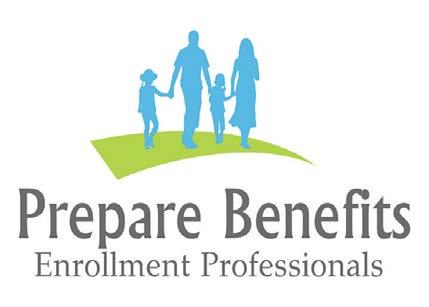

to point out that the division experienced 50 percent growth and 19 percent profit in 2016, surpassing MarshBerry’s recommended averages of 20 percent and 15 percent, respectively.
After successfully navigating the implementation of the ACA, Kinley finds that she is frequently called on to provide expertise beyond her knowledge in insurance. That often involves making recommendations for benefits administration systems to help clients streamline plan management and ensure regulatory compliance.
To address this need and to offer more comprehensive service, Kinley and TIS partner with Benefit Technology Resources, which enables the team to offer guidance on details such as integrating applications with clients’ benefits administration and payroll systems. TIS also works with enrollment partners, such as Prepare Benefits and EFP, to develop a platform for communicating benefits.
Through the Benefits Advisors Network, TIS also offers Lead 2 Health, a product that supports smaller clients that provide coverage for up to one thousand employees. The solution provides tools to improve general health and wellness, to boost member engagement, and to increase positive clinical outcomes. Features include direct contact with personal care coordinators, who help clarify processes and procedures and ensure correct diagnoses, and Go Green To Get Green, a program that directs individuals to—and rewards them for using—the most cost-effective sources for care.
Kinley believes Lead 2 Health helps improve both service and outcomes, and also addresses her passion for giving each person access to affordable healthcare. “We’re more than insurance professionals,” she says. “We’re consultants who can customize technology recommendations so that they’re ideally suited to clients’ needs. A cookiecutter approach isn’t good enough.”
Kinley’s greatest current challenge is responding appropriately and effectively to the ongoing evolution of US health insurance. “We learned to grow with changes that came with the ACA and spent a year educating clients on its regulations and compliance,” she says. “No matter what the future holds, I am confident we will successfully adapt to the new environment and give clients the best possible advice on the right path to take.”
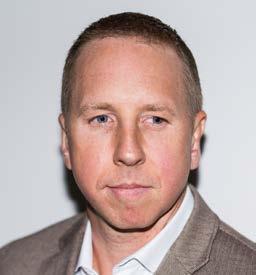
PEOPLE + COMPANIES
Six
Slavitt, Evan 112
Snider, Jeff 36
Sonus Networks 36
South Jersey Industries 147
Starkweather & Shepley Insurance 164 Stephenson, Lisa 106 Summers, Cindi 72
144
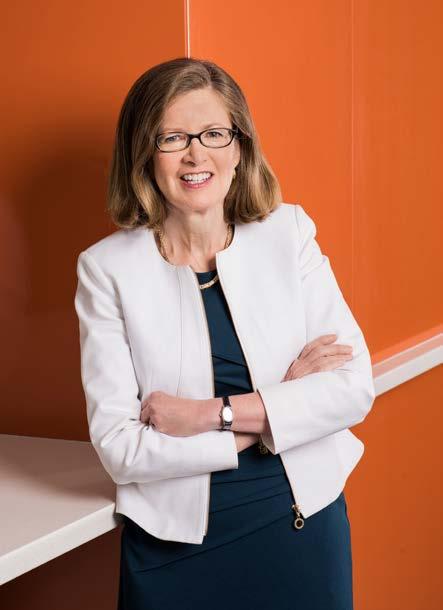
Brandt Kucharski uses his business savvy to help Grubhub thrive.


Celebrate Your Team
If the Profile creative team learned anything from McGraw-Hill Education’s Diane Adams, it’s to champion your colleagues and your work culture. That’s why we snapped a couple of photos after a successful cover photo in our studio.






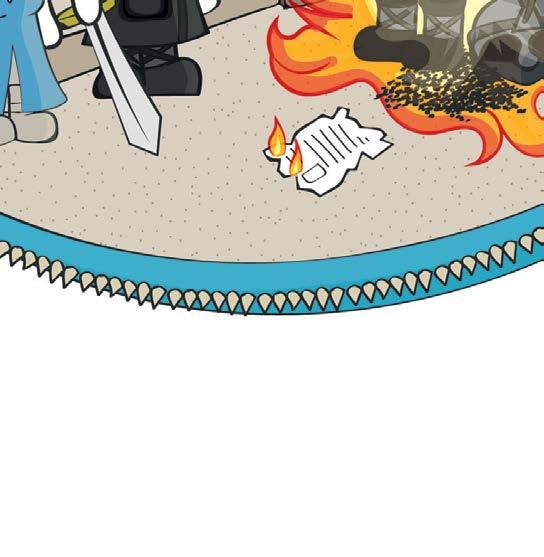

www.avature.net/ATS




